I promised to tell you about the city of Viseu in Portugal (map) after our previous trip there — when we were submitting documents for our residence permit. You can find all the details — from visa to residency — in the pinned articles on the homepage.
It’s been almost two months since then, and I finally carved out some time to turn memories and impressions into words.
While in Viseu, I picked up some brochures from the museum and hotel — and I’ve compiled in this article everything I think is worth seeing in the city.
We didn’t take any guided tours — we simply didn’t have the time. Our main goal was to submit the documents for a Portuguese residence permit, and during our visit to AIMA, we were literally praying they would accept us as a whole family. The problem was that we were scheduled at the same time but in different cities — and they’re about two hours apart by car.
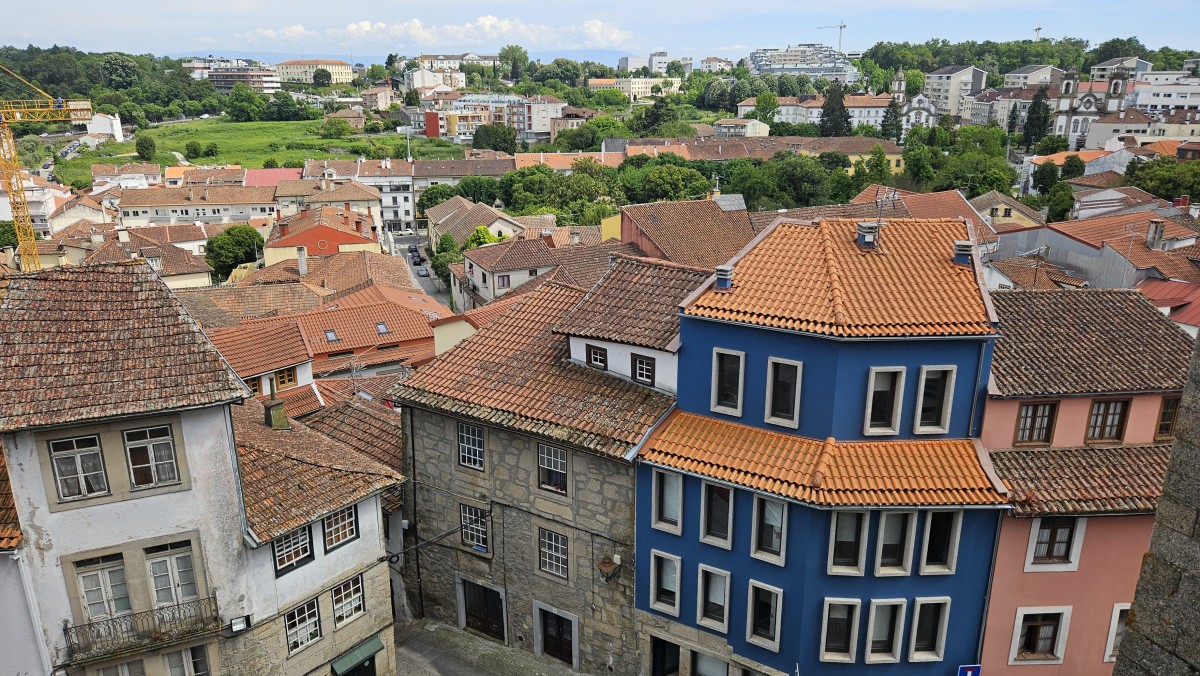
View of Viseu from the cathedral’s observation deck
Getting from Lisbon to Viseu takes around 3.5 to 4 hours, depending on traffic conditions.
At the legalization office, they advised us to be at AIMA by 9 AM. So we decided to arrive the day before — to avoid waking up at 4 AM, driving in the dark, and struggling to find parking in an unfamiliar place.
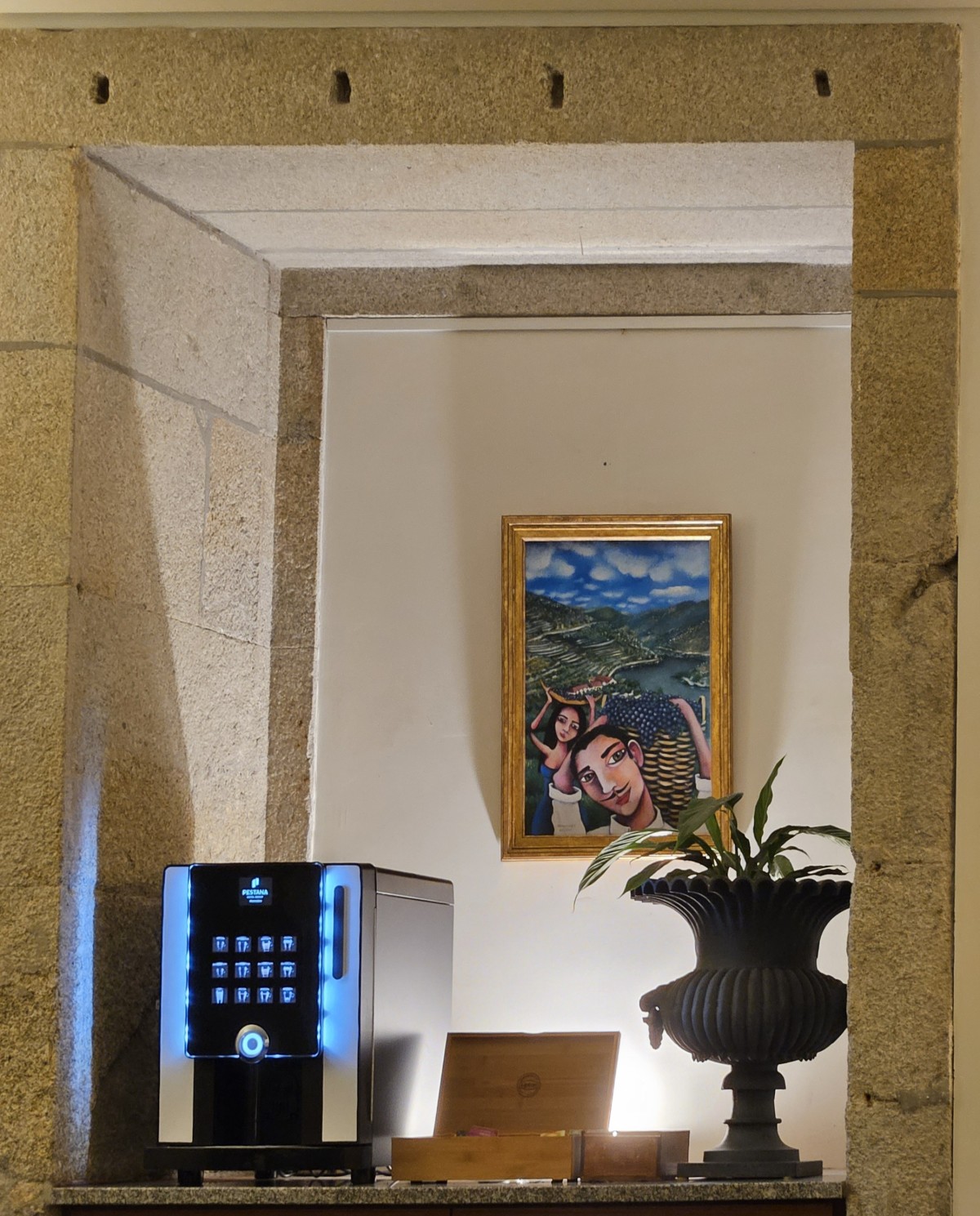
We found the hotel through Booking. We didn’t dive too deep into the reviews — just made sure it had breakfast, parking, and was close to the AIMA office. Booked it — and hit the road.
To our surprise, the hotel turned out to have a fascinating story behind it.
Pousada de Viseu – a charming hotel in the heart of Viseu
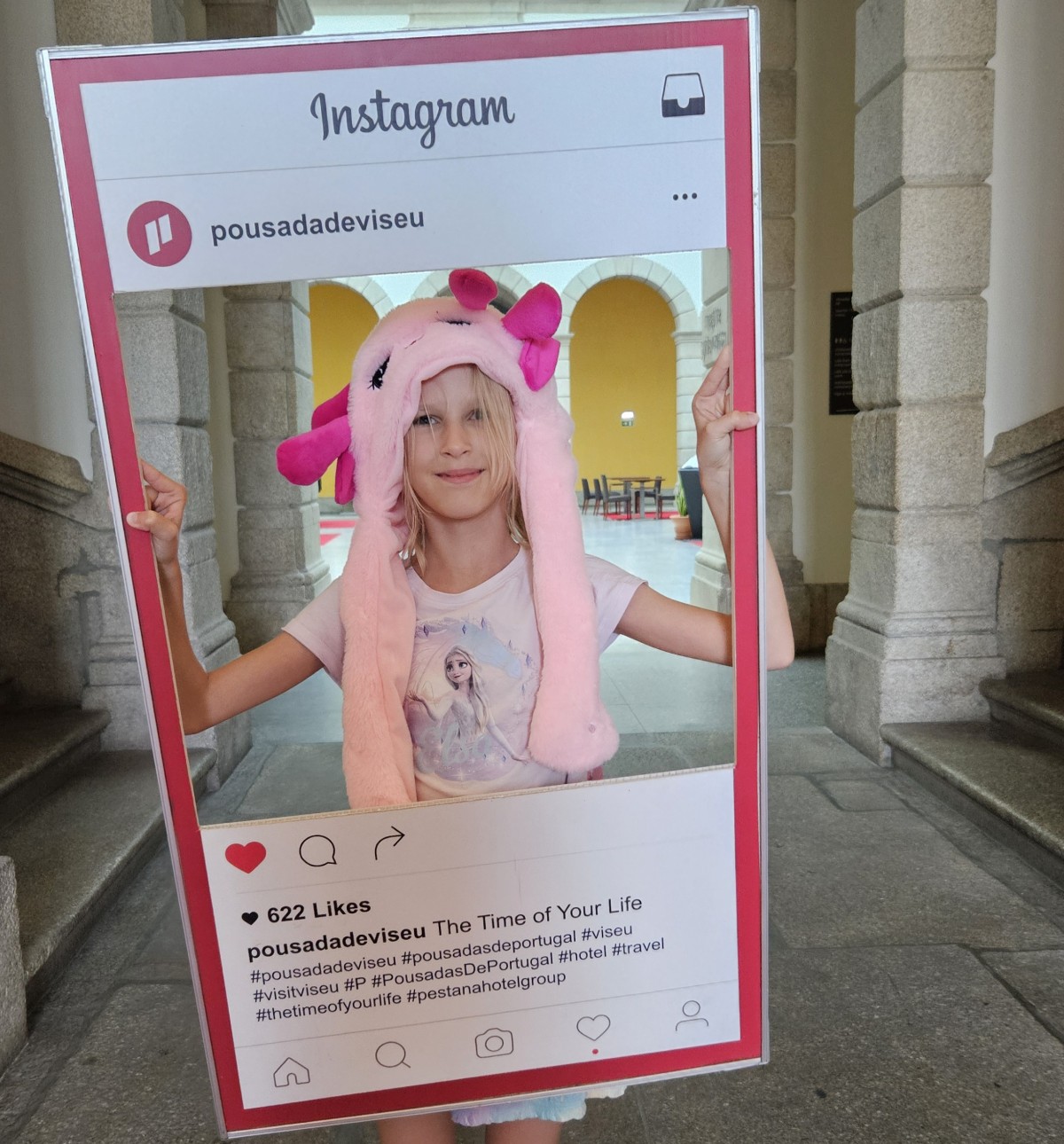
The hotel is located in the former Hospital de São Teotónio, originally built in 1842. Over time, the building fell into disrepair — all that remained of this once-important medical institution were the walls, which were later transformed into a stunning hotel.
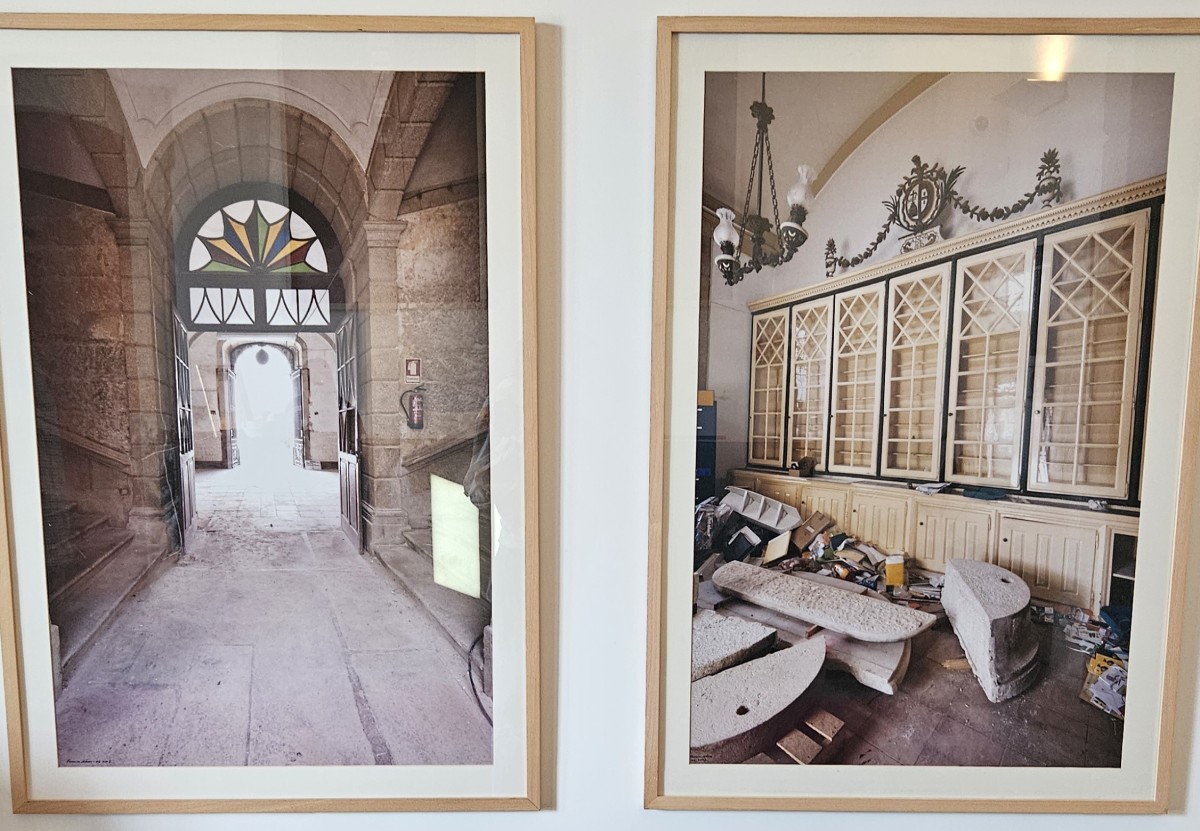
The hospital’s foundation stone was laid in 1793 on the initiative of Bishop Francisco Moreira Pereira de Azevedo. The construction was funded by a special tax on meat and wine introduced by Queen Maria I. It was one of the first hospitals in Portugal designed according to the “modern” standards of that time.
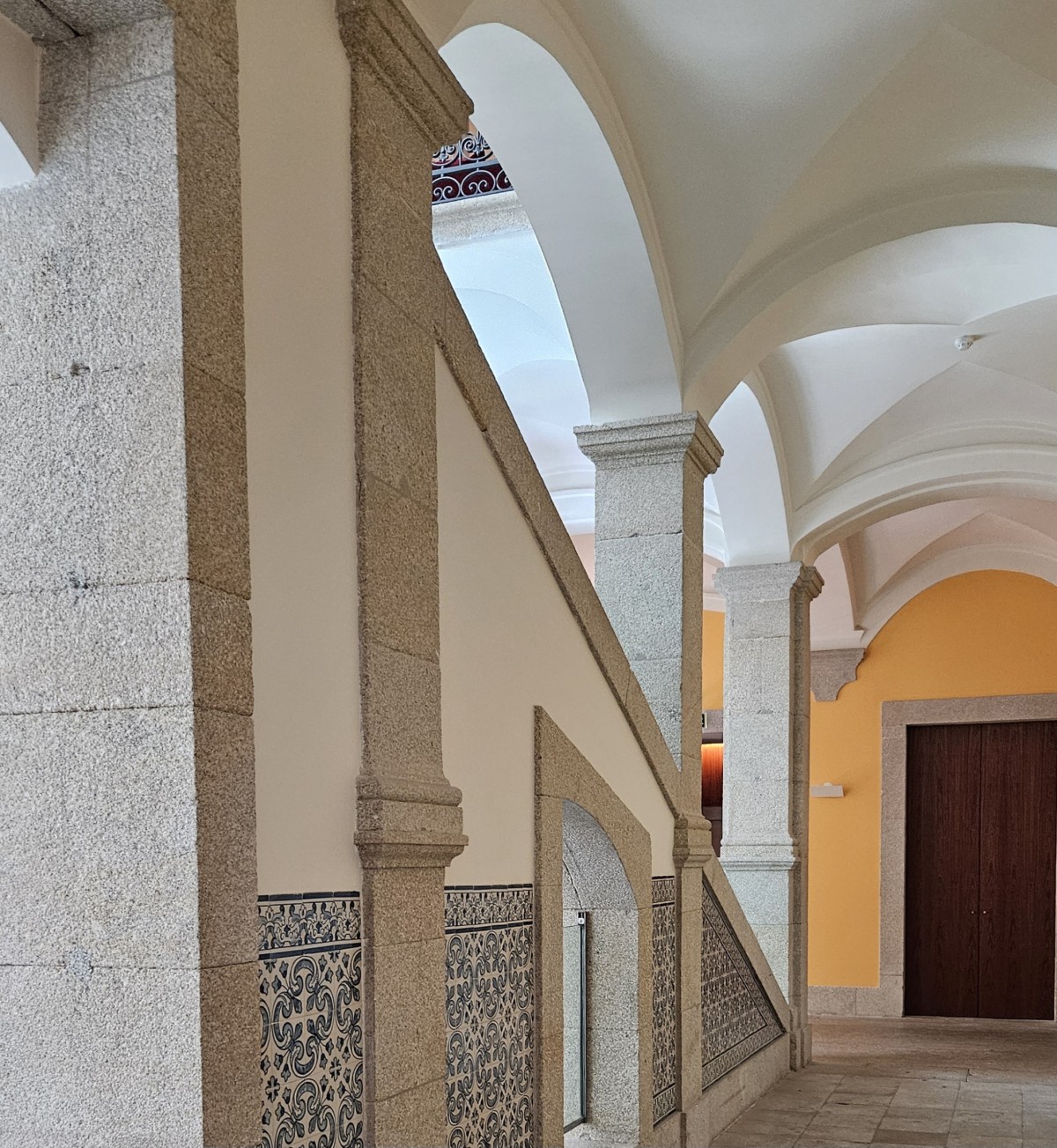
The construction took nearly 49 years. The hospital operated from that time until 1997, when it was relocated to a new facility, and the old building remained abandoned for nearly a decade.
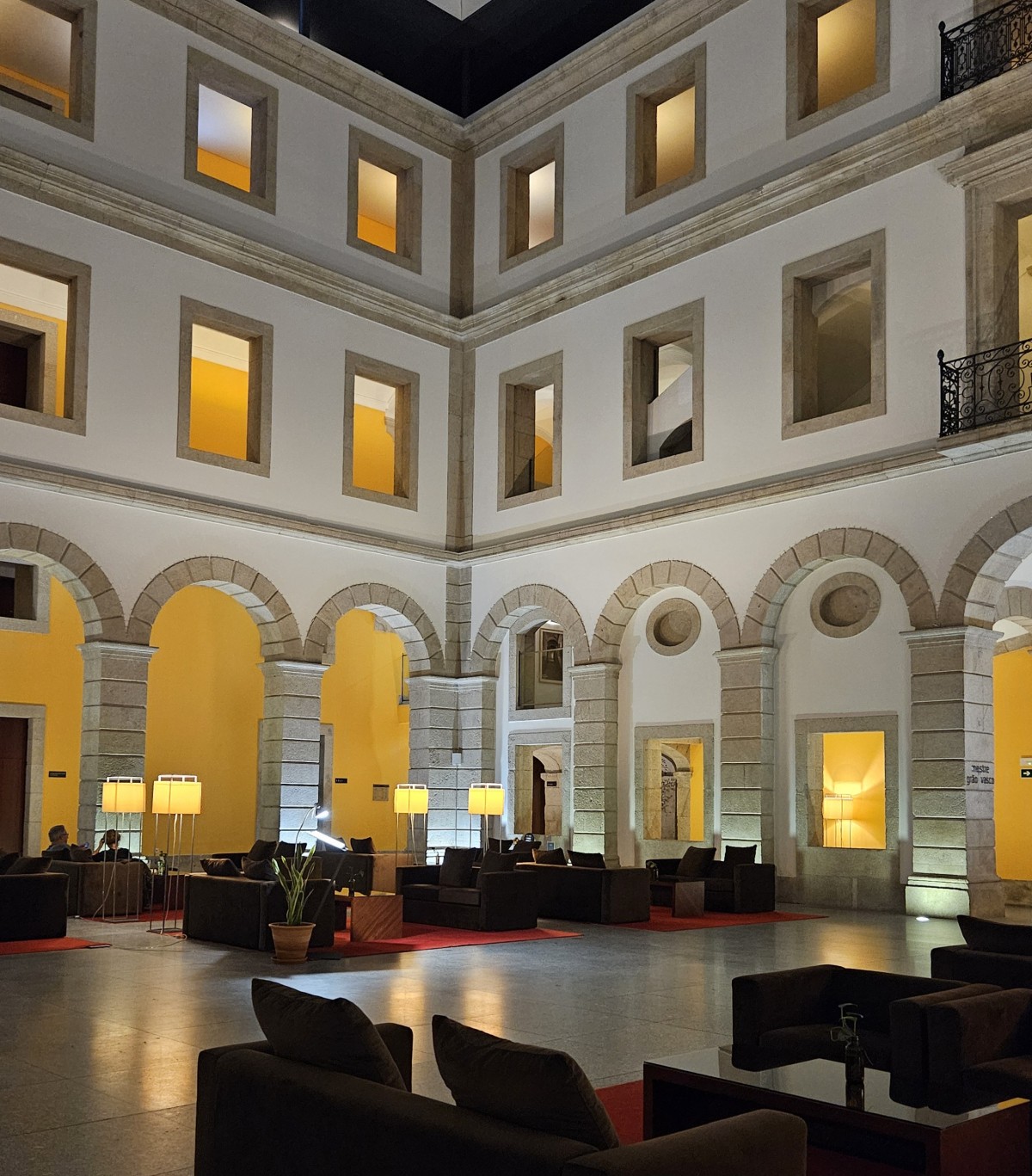
In 2007, the building was handed over for restoration. According to the Pestana Group, the renovation project cost around €8 million. By 2009, the hotel welcomed its first guests and was awarded four stars — and rightfully so. The service, cleanliness, and atmosphere are truly top-notch (we visited during the off-season, and the hotel was about a third full — which made our stay even more pleasant). Guests enjoy free access to the sauna, swimming pool, and gym. You just need to book your time slot at the reception desk in advance.
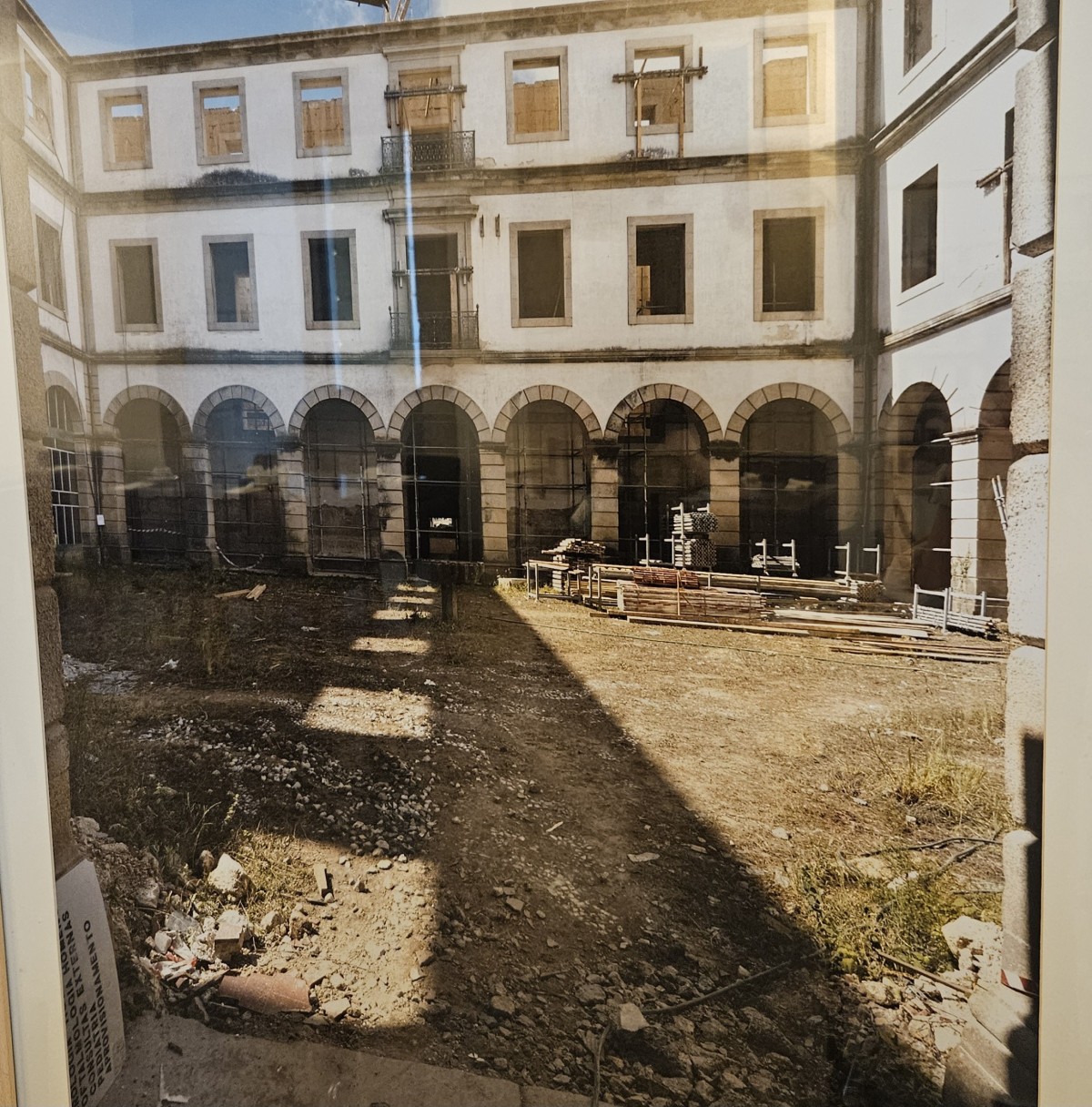
If you’re not planning to book a room but want to experience the hotel’s atmosphere — you can stop by for a cocktail at the bar. While this won’t grant you full access to the premises, it does allow you to enjoy the lobby interior, browse historical photos of the renovation, and visit a small on-site gallery. There’s also a restaurant on the property that operates in the evenings. Advance reservation is required — even for hotel guests.

Pousada de Viseu is part of the Pousadas de Portugal network, which has been managed since 2003 by the Pestana Group — the largest hotel chain in Portugal. The group owns over 100 hotels worldwide, including more than 35 locations across Portugal — from the mainland to the Azores and Madeira.
The core mission of the Pestana Group is the restoration and adaptive reuse of historic buildings — monasteries, castles, hospitals, and palaces. They preserve architectural features, original facades, interior details, historical plaques, and sculptures. For example, the façade of Pousada de Viseu is adorned with three statues — Faith, Hope, and Charity — along with the coat of arms of Santa Casa da Misericórdia.
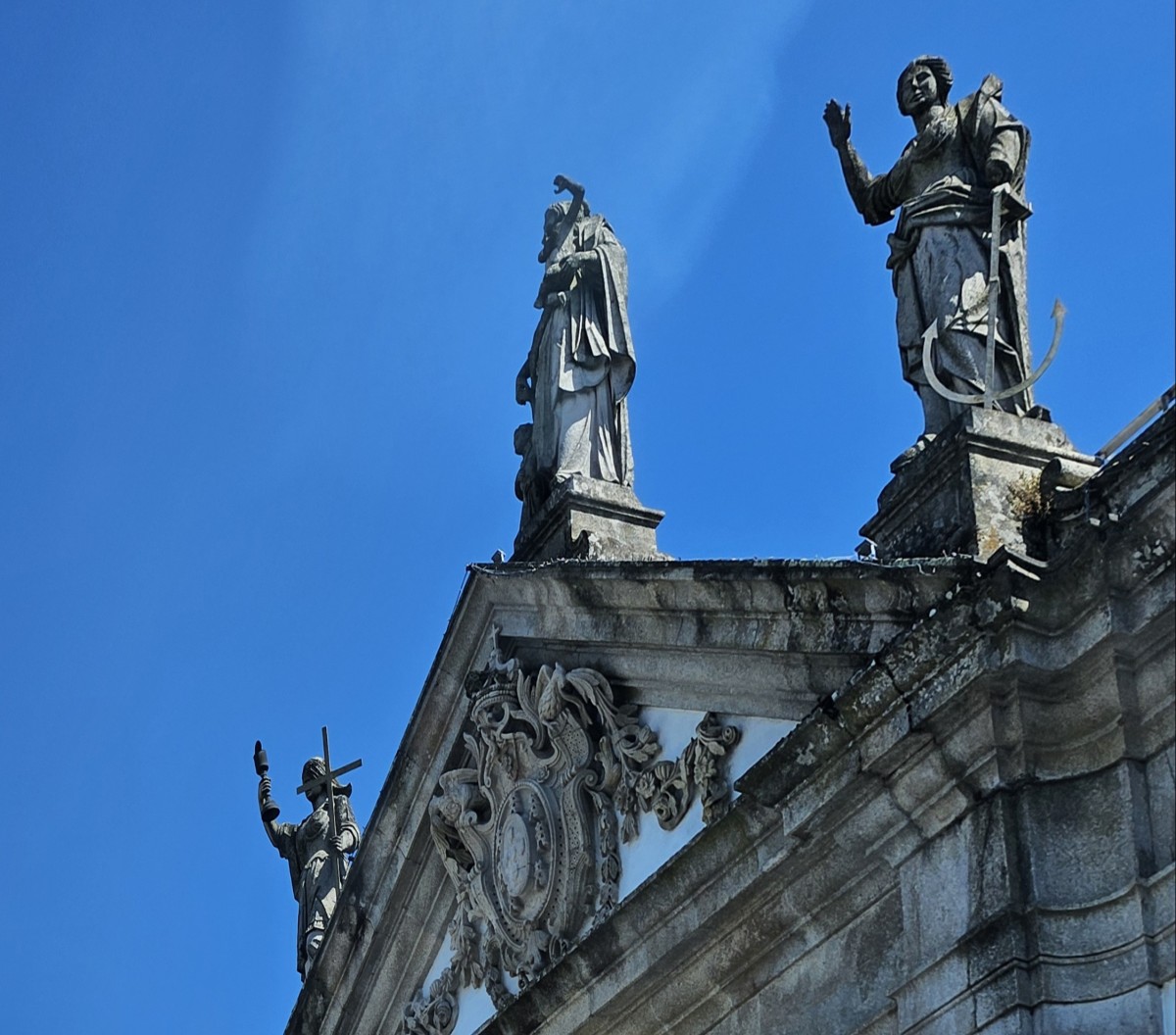
Faith, Hope, and Charity —
as well as the coat of arms of Santa Casa da Misericórdia
The group doesn’t focus on mass tourism but instead promotes cultural, gastronomic, and event-based travel: conferences, romantic getaways, food tours, and more. It’s a long-term strategy aimed at preserving national heritage and supporting local tourism development.
Categories of Pousadas de Portugal hotels:
- Historic Pousadas — castles, monasteries, and palaces (e.g., Beja, Óbidos, Évora, Guimarães, Queluz);
- Architecturally significant — heritage buildings with modern design elements, usually in historic neighborhoods (Viseu, Estoi, Alcácer do Sal, Amares/Gerês);
- Nature & Romantic Escapes — Sagres, Gerês, Manteigas, Ria de Aveiro;
- Places with character — charming boutique hotels in smaller towns: Braga, Bragança, Viana do Castelo, and of course, Pousada de Viseu – Charming Spa Hotel.
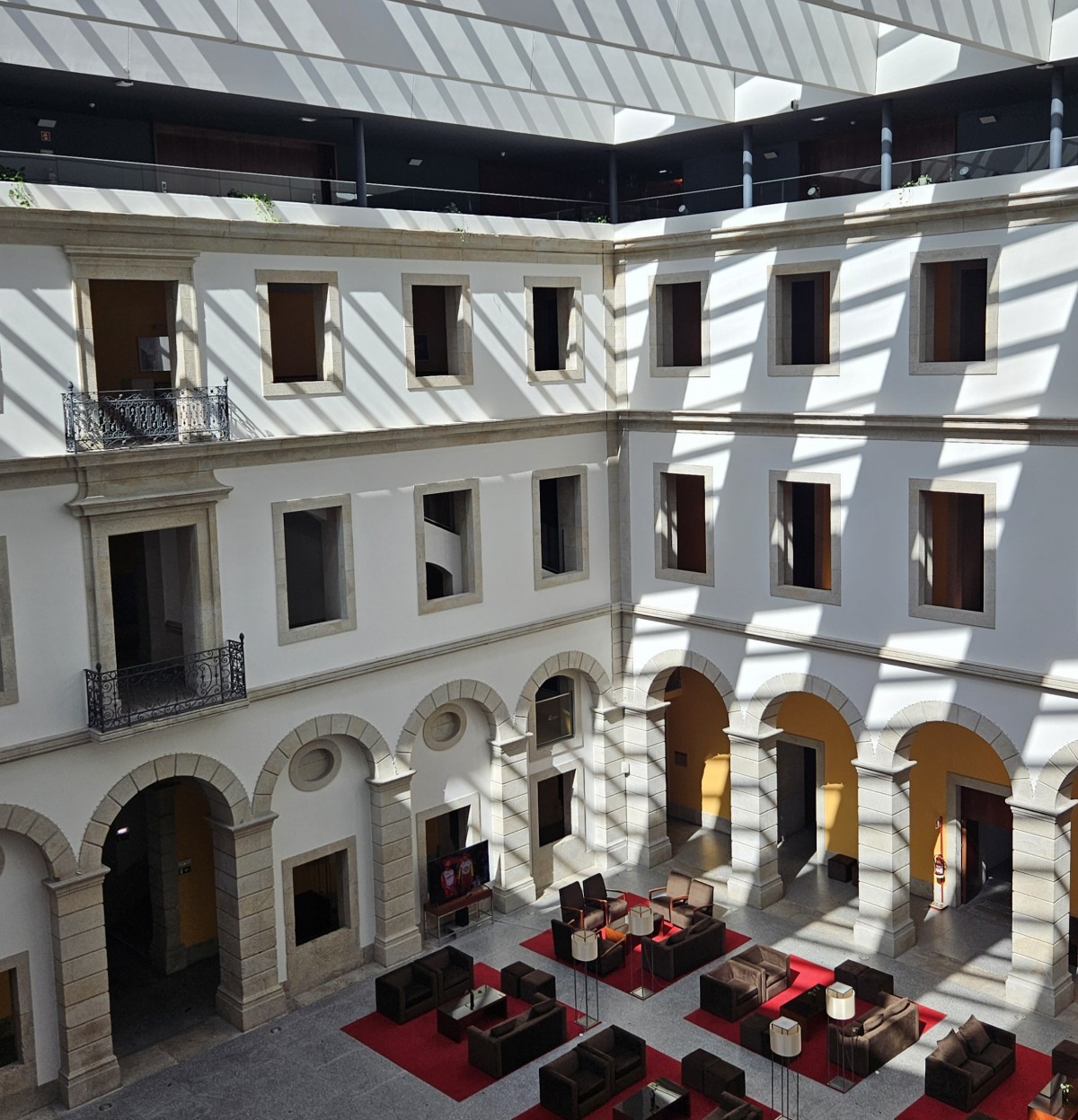
The hotel itself is built in the shape of a closed quadrangle with an internal courtyard covered by a glass roof. During renovation, renowned Portuguese architect Gonçalo Byrne preserved key elements of the original hospital: stone arches, staircases, tiled floors and walls in the corridors, and grand columns.
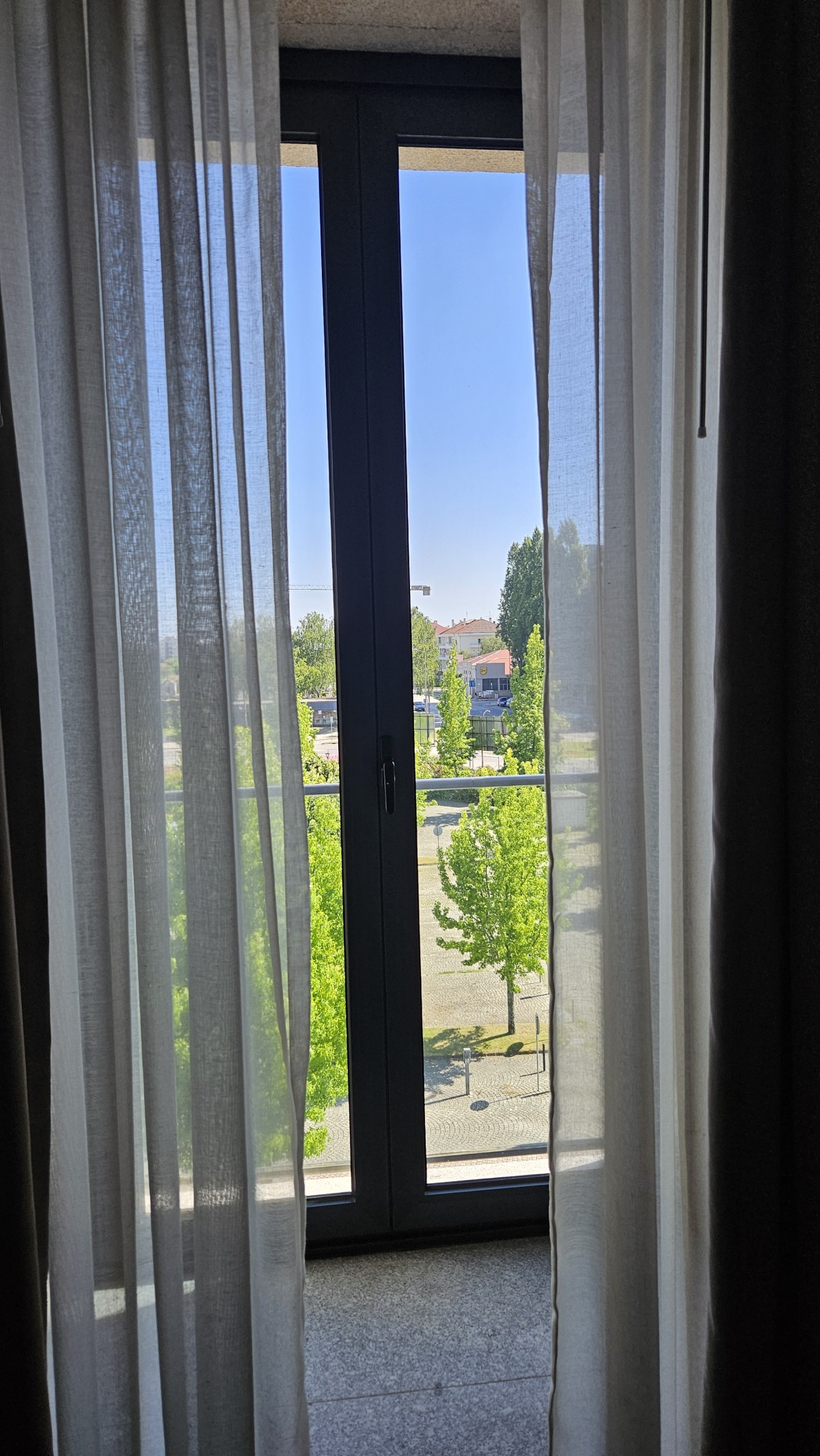
The interiors are decorated in a neoclassical style with elements of Art Deco and minimalist classicism, creating a striking contrast between past and present. Throughout the building, you’ll find photographs and artifacts discovered during the renovation — a glimpse into the hospital’s former life.
They say the ghosts of former patients still wander these halls — a typical urban legend, but why not? Almost every historic building in Europe has its own mysterious tale. We didn’t see any, though — we just slept like babies :)
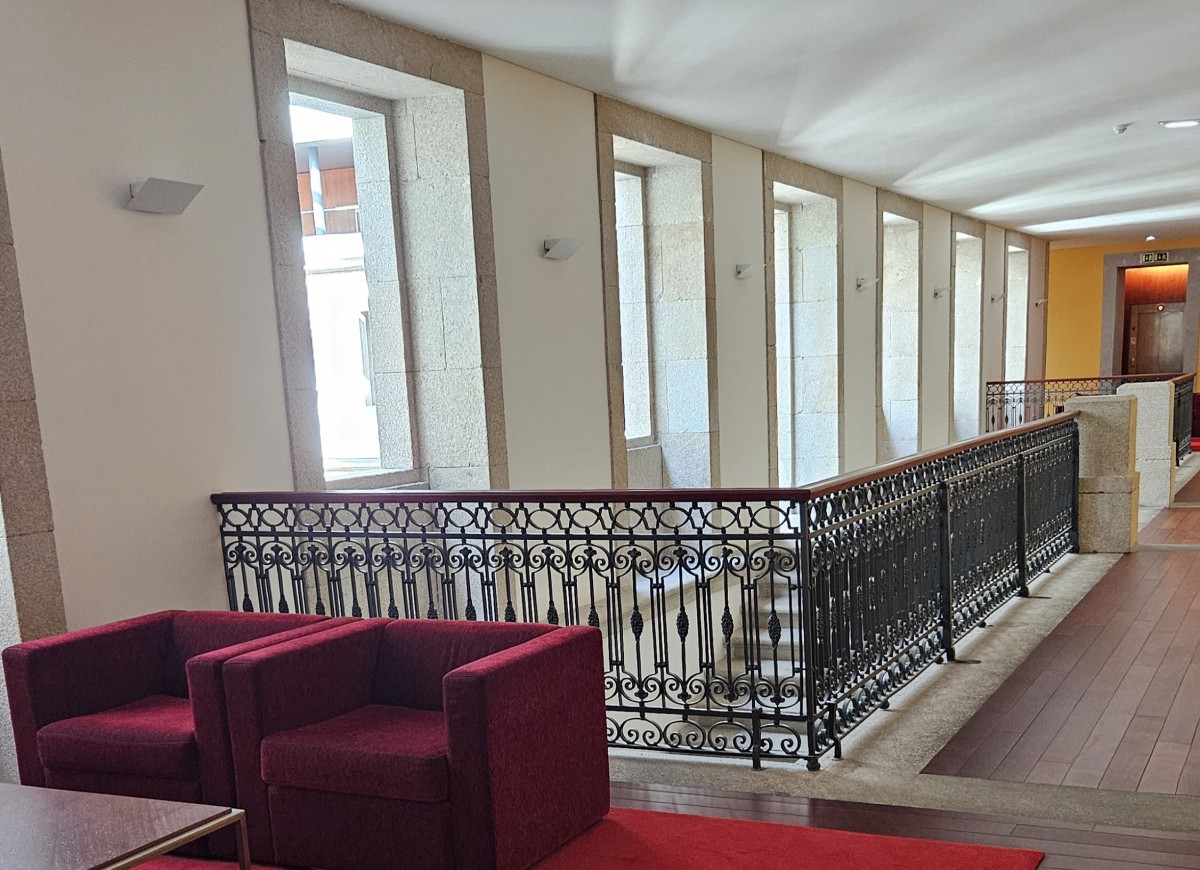
Although Viseu is not among Portugal’s most famous tourist destinations, it was named the “Gastronomic Capital” of the country in 2019. The creation of a unique spa hotel within a historic building helped attract travelers seeking high-quality experiences — fine wine, local cuisine, architecture, and nature.
After the hospital closed, the building could have easily fallen into decay. But thanks to strategic investment and a strong cultural heritage vision, Pousada de Viseu breathed new life into the city and its historic center.
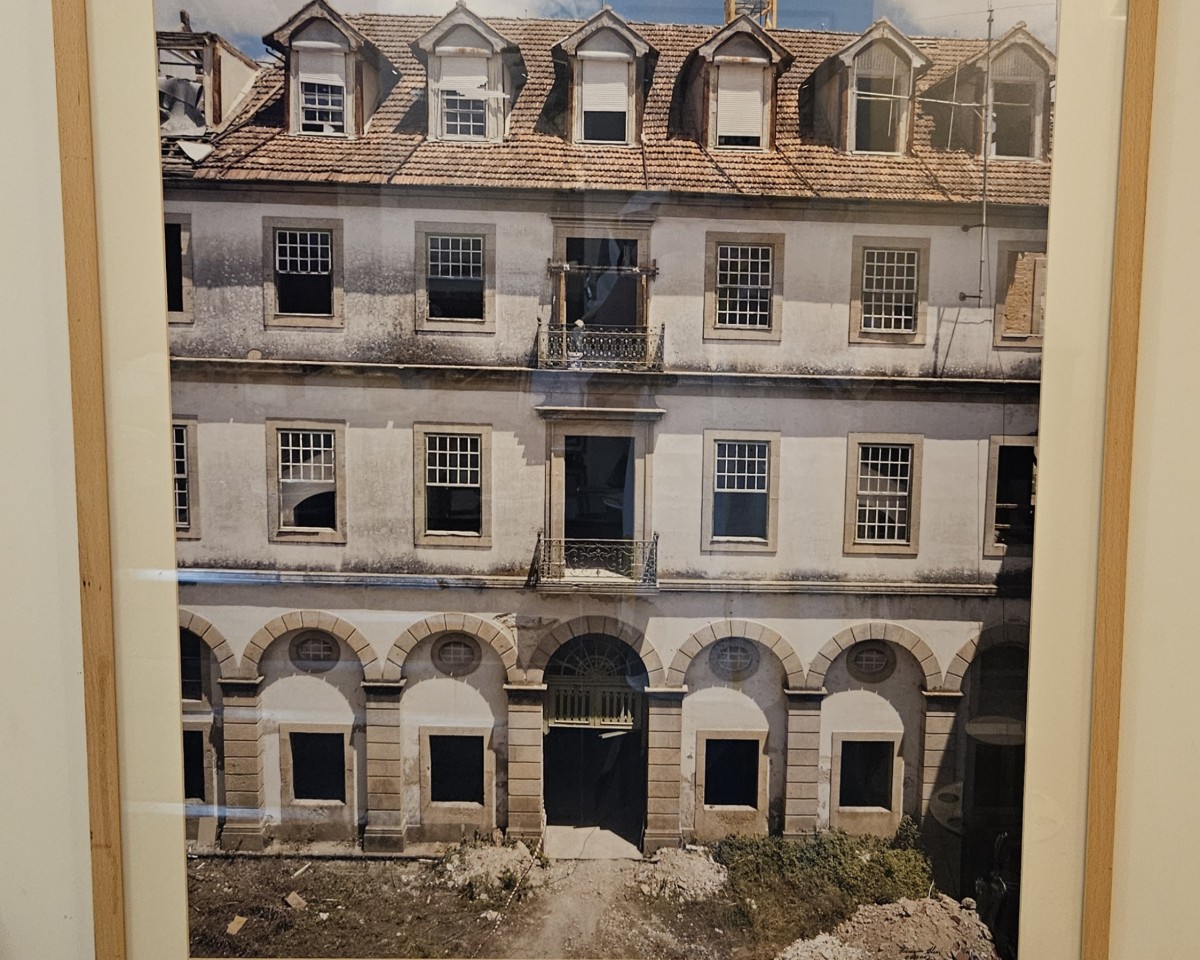
There’s no doubt the project was a bold move. Viseu isn’t a coastal resort, a bustling metropolis, or a tourist hotspot. It’s a quiet inland city in the heart of Portugal — free from crowds and chaos, yet rich in history and full of character. It’s a place for those who value atmosphere, architecture, and the soul of a destination.
A hidden gem in the lobby – “Cathedral”
In the main lobby of Pousada de Viseu, you’ll find a rare museum-worthy piece — a gilded Gothic-style religious installation known as "Cathedral" (a model of a Gothic cathedral). It’s hand-carved from wood and covered in gold leaf, originally created for a historic religious procession in Lisbon in 1947, commemorating the 800th anniversary of the city's liberation from Moorish rule.
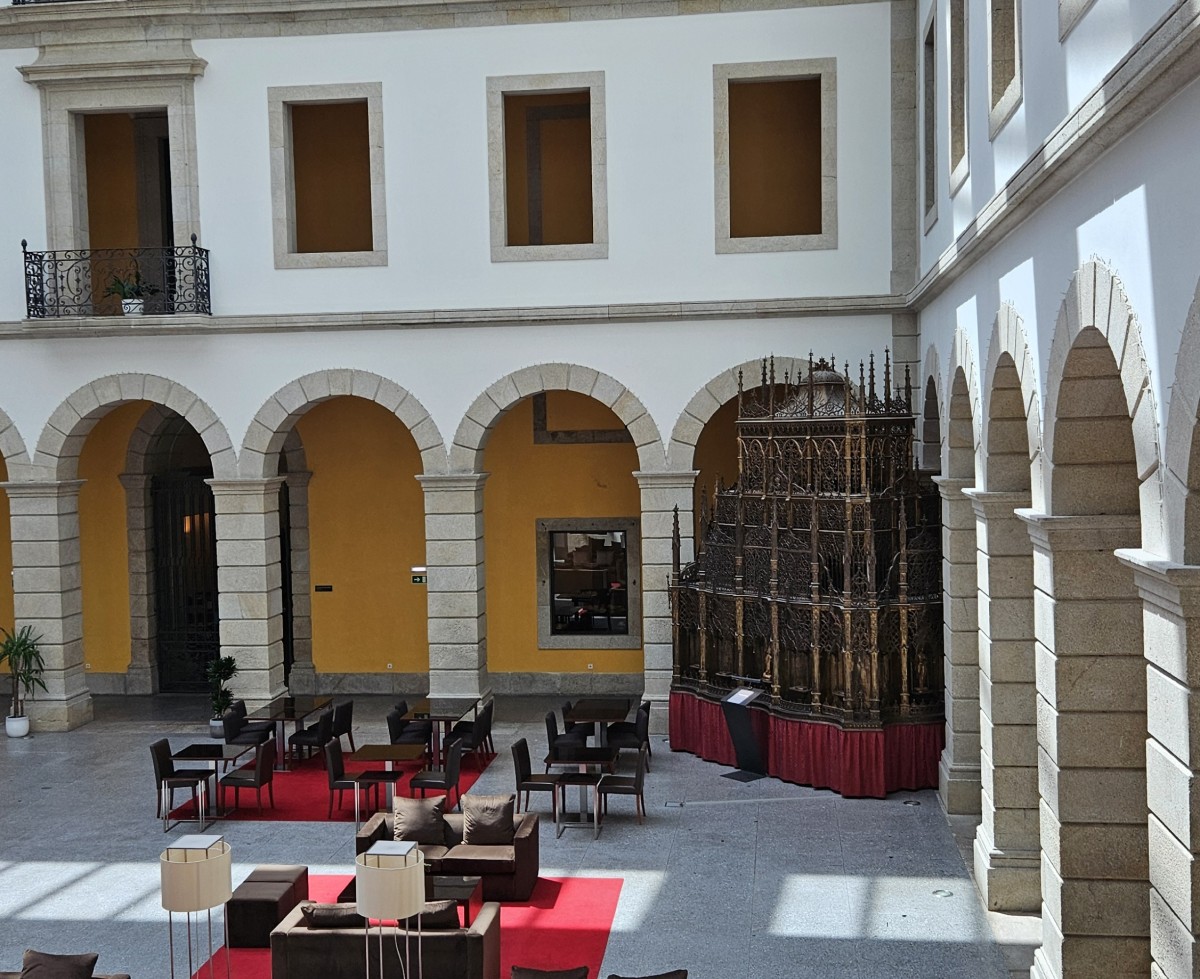
Crafted by some of Portugal’s finest artisans, this model measures an impressive three meters wide, four meters long, and five meters tall. It was later entrusted to Pousadas de Portugal and installed in the cloister of Pousada de Viseu in collaboration with the Museum of Lisbon. A specialized team carried out the restoration, following best practices in preservation and heritage care.
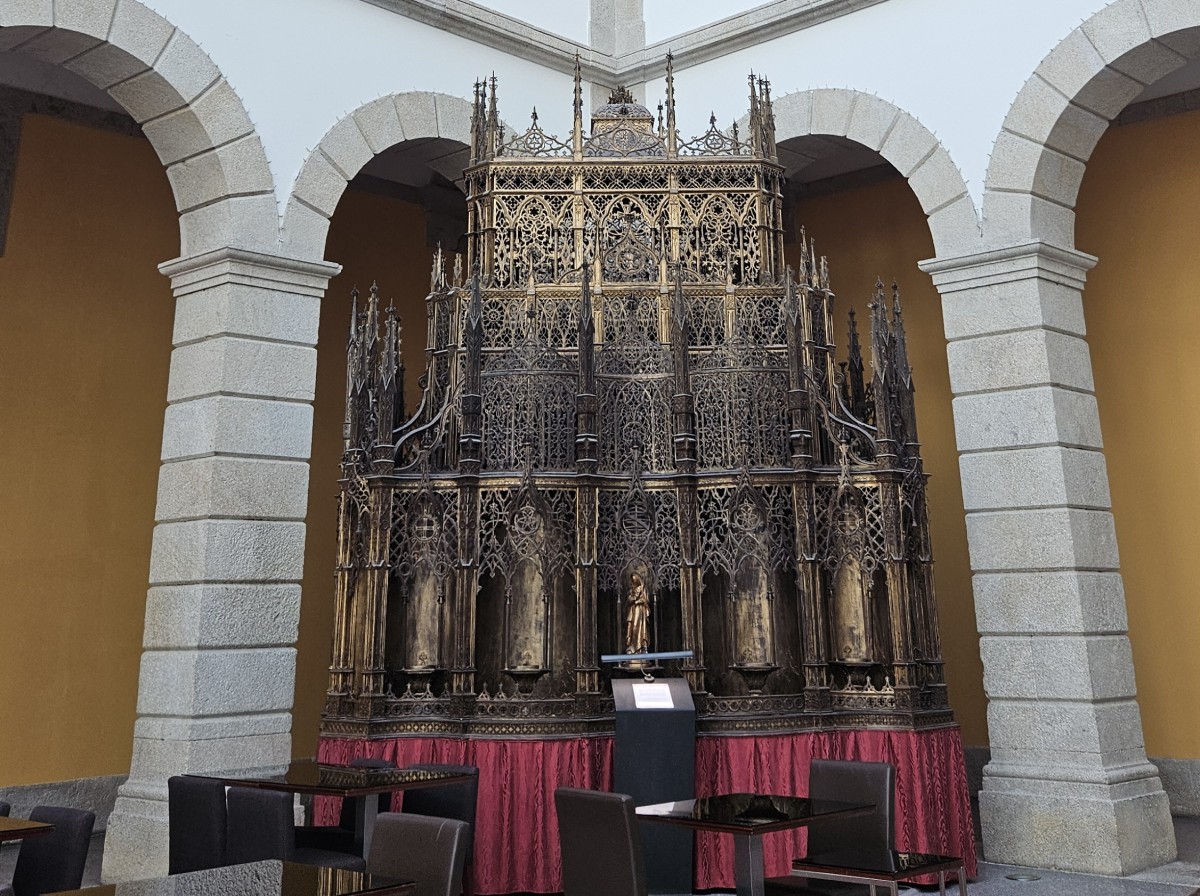
A curious surprise — the historic cemetery
From our hotel room window, we had a rather unexpected view — of a kindergarten and a historic cemetery located just a few dozen meters from the hotel. We only noticed it in the evening, and rather than being unsettling, it sparked our curiosity. This well-kept cemetery with crypts, stone crosses, and old gravestones felt like a natural architectural continuation of the city and the former hospital. It’s not a gloomy place — more of a peaceful historic site, open to visitors until 5:30 PM (with a lunch break). Cemetery and memorial architecture enthusiasts will definitely find it fascinating.
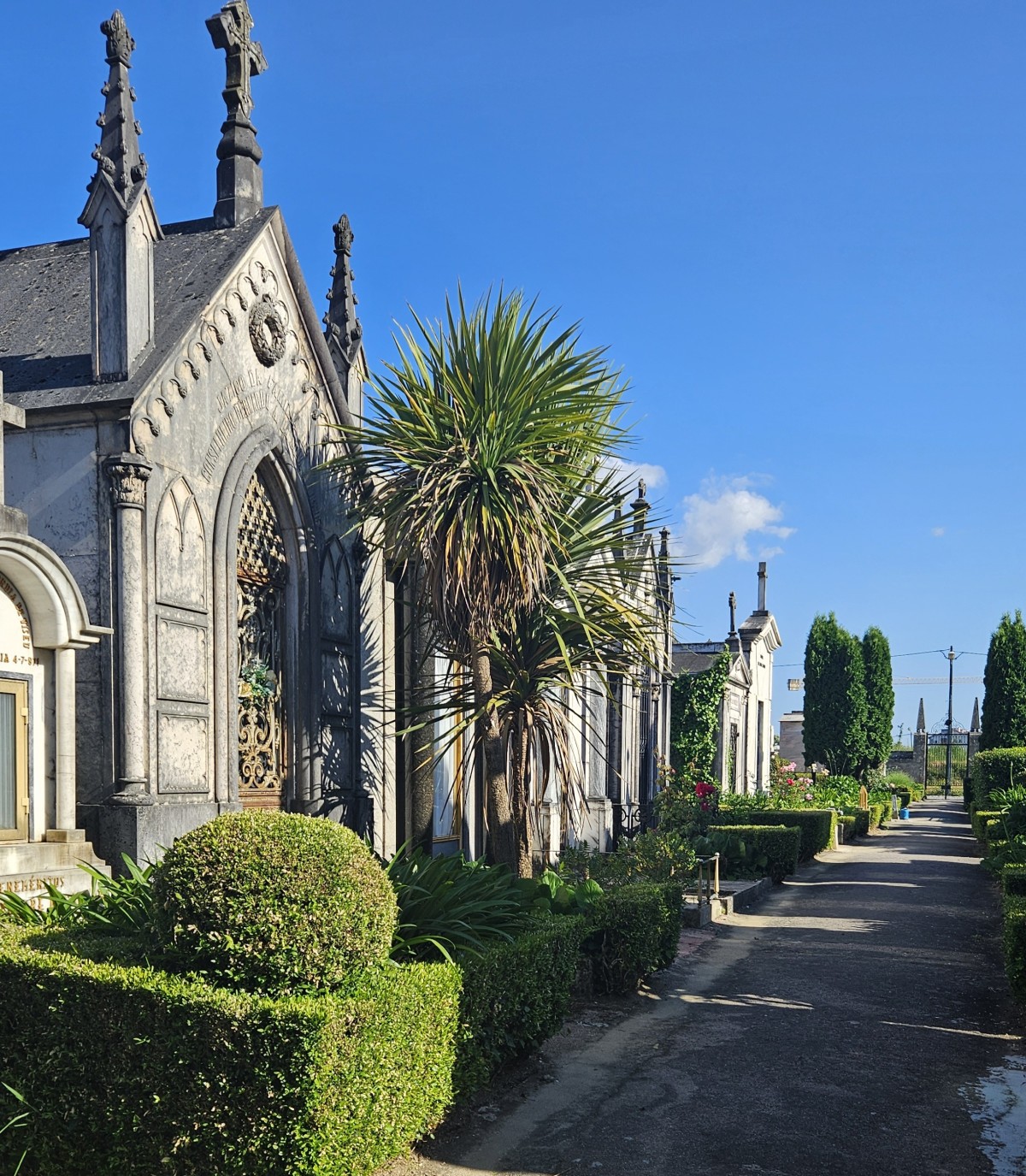
One thing’s for sure — this hotel is located in an incredibly peaceful neighborhood, where nothing will disturb your rest. :)
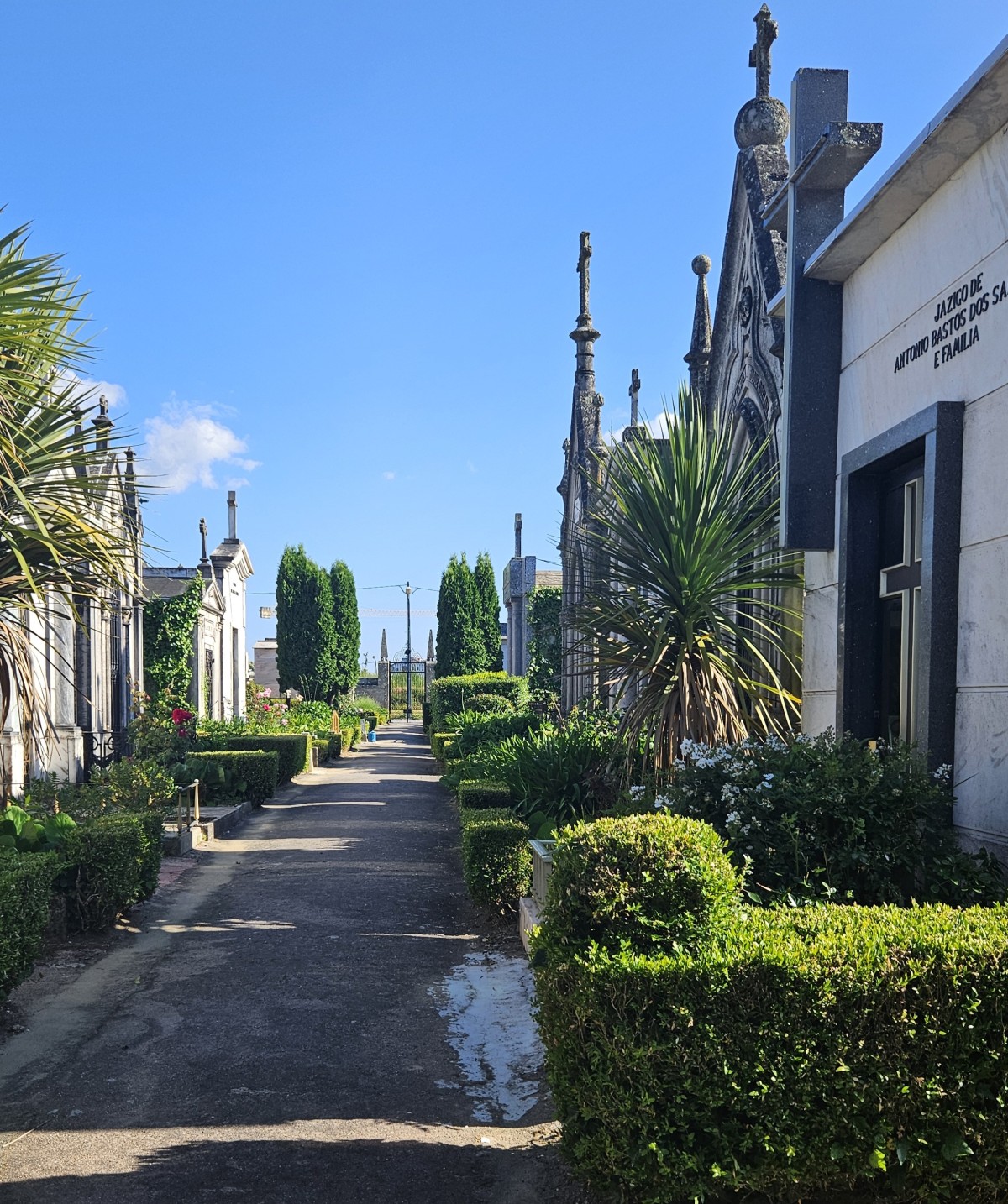
A historical booklet in your room
Every room at Pousada de Viseu includes a small booklet detailing the building’s history — from the laying of its first stone to its years as a hospital and its transformation into the hotel it is today. It’s a lovely touch that the hotel honors its past and shares it with guests. You can read it peacefully while sitting by the panoramic window, sheer white curtains swaying gently, with a cup of tea or coffee. By the way, the room included a kettle along with complimentary tea and coffee.
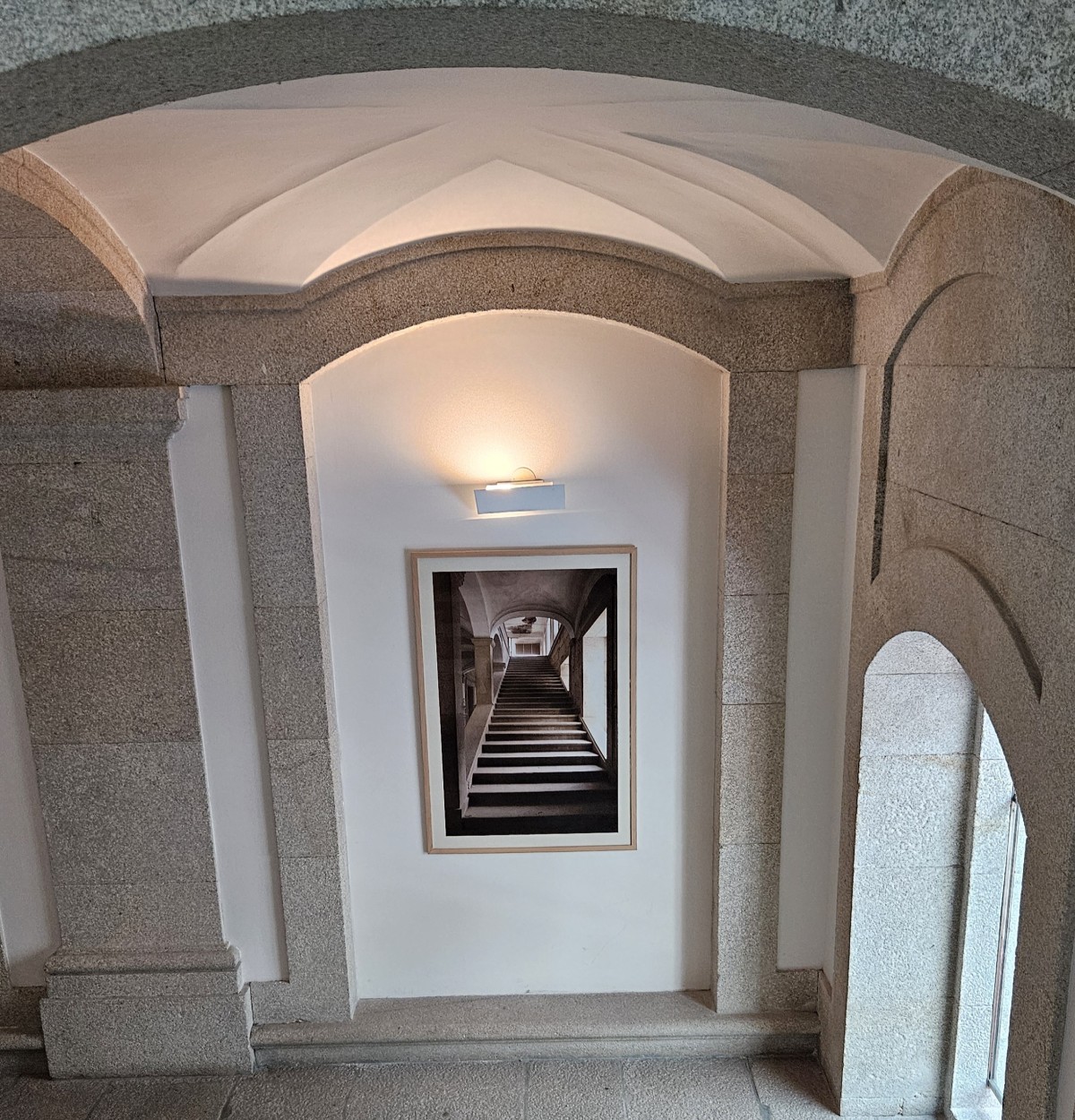
According to the booklet:
Construction began in 1793 when the Bishop of Viseu, D. Francisco Moreira Pereira de Azevedo, laid the first stone on land donated by local benefactors. The building process took nearly 50 years, and only in 1842 were the first patients admitted — even though the structure was still not fully completed.
In 1876, elegant semicircular steps were added near the main entrance, leading to a lush inner courtyard shaped like a parallelogram, which occupies the entire front section of the building.
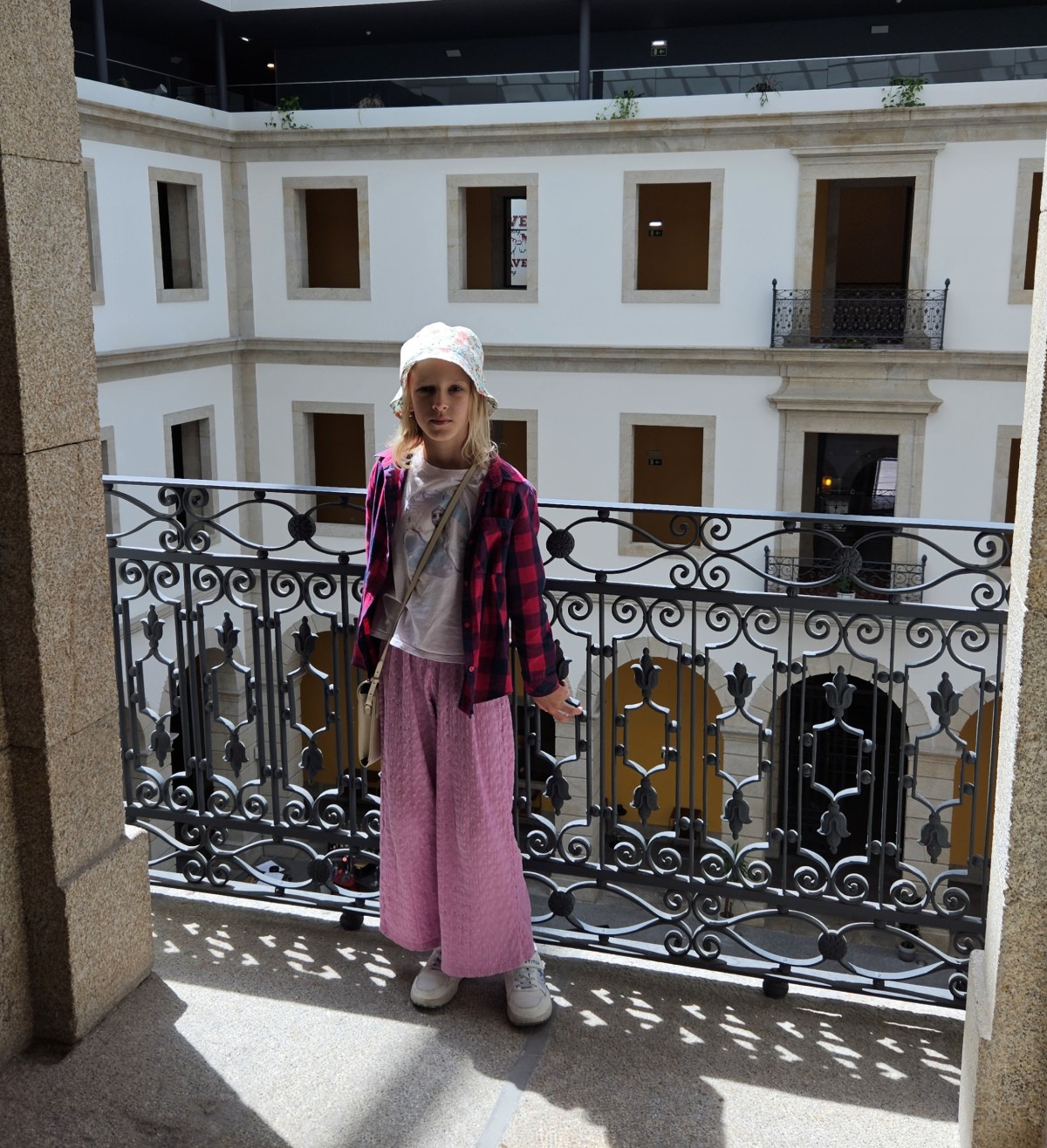
The architectural style of the building is neoclassical:
- 4 floors, 26 arches, 48 windows, 4 doorways;
- an elegant façade with a pediment featuring a coat of arms and three female figures — symbols of Faith, Hope, and Charity — installed as early as 1830.
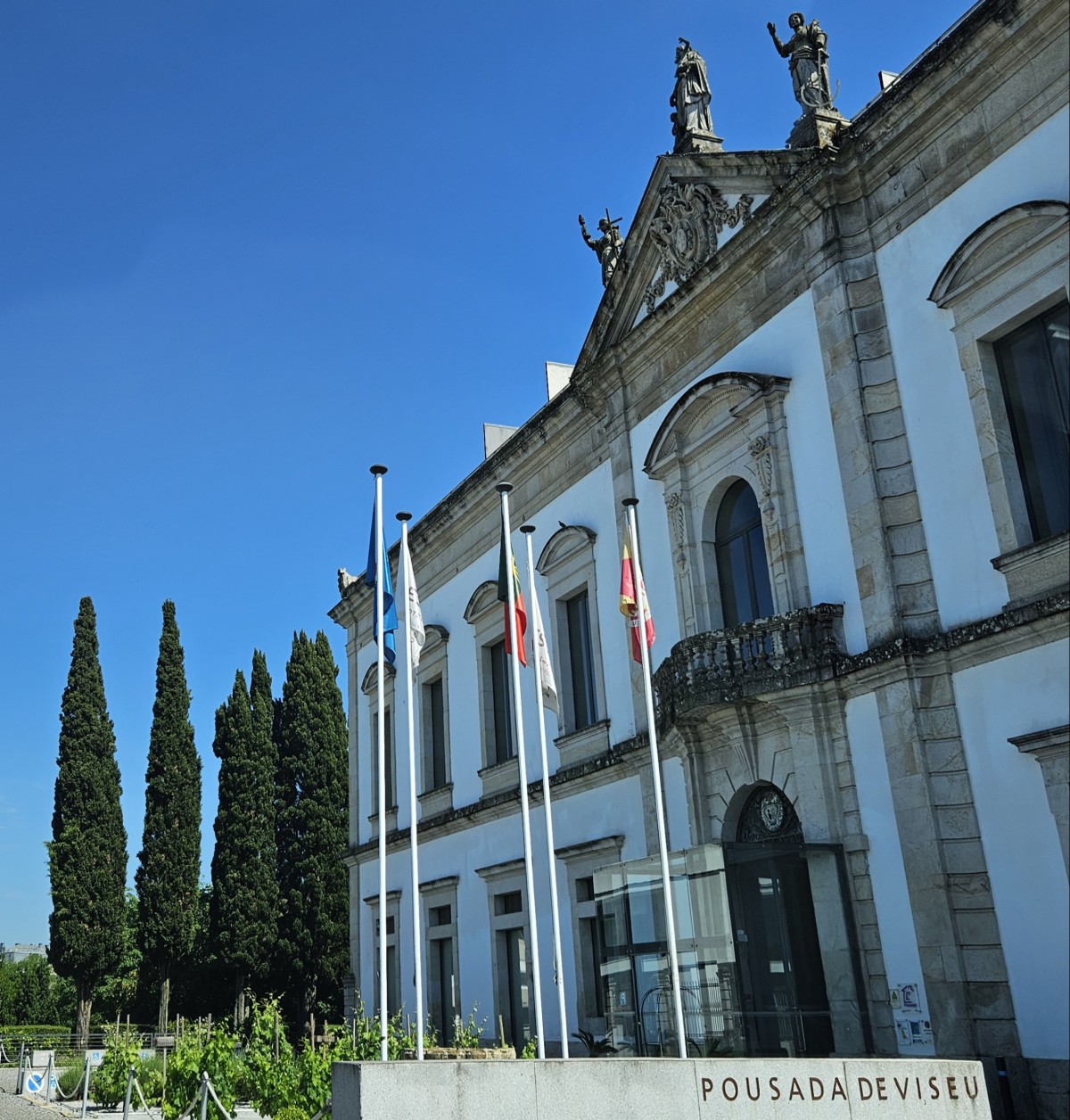
The old hospital closed its doors in 1997 and remained abandoned for nearly a decade. After extensive renovations led by architect Gonçalo Byrne, the building was transformed into a hotel and reopened in 2009 as the modern Pousada, now offering 84 guest rooms.
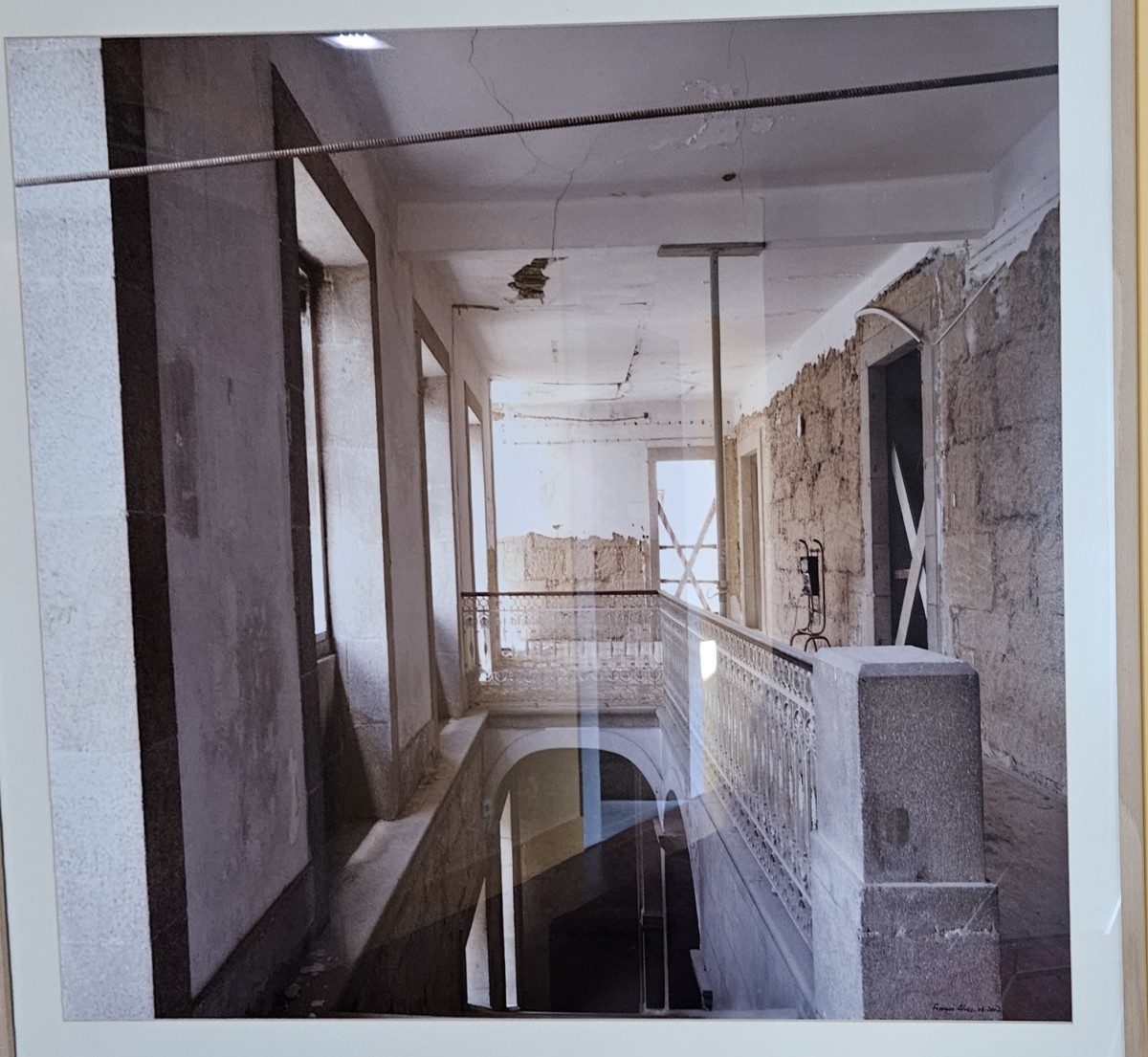
A Walk Through the City
And now, we slowly move on to the city itself.
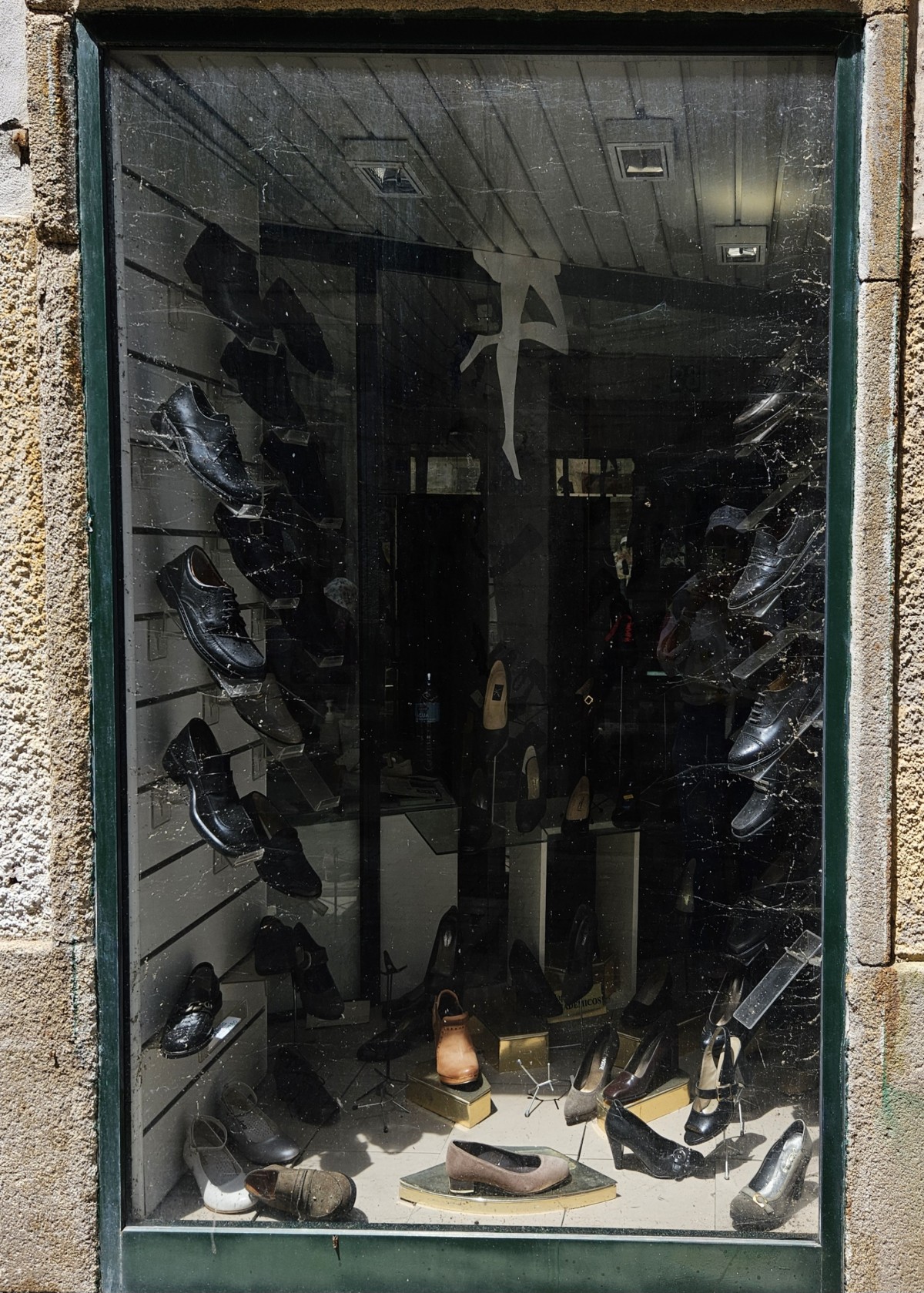
As I mentioned at the beginning of the article, we arrived early — to avoid driving at night. We checked into the hotel and headed out for a walk. The historic center of Viseu is just a few minutes away on foot.
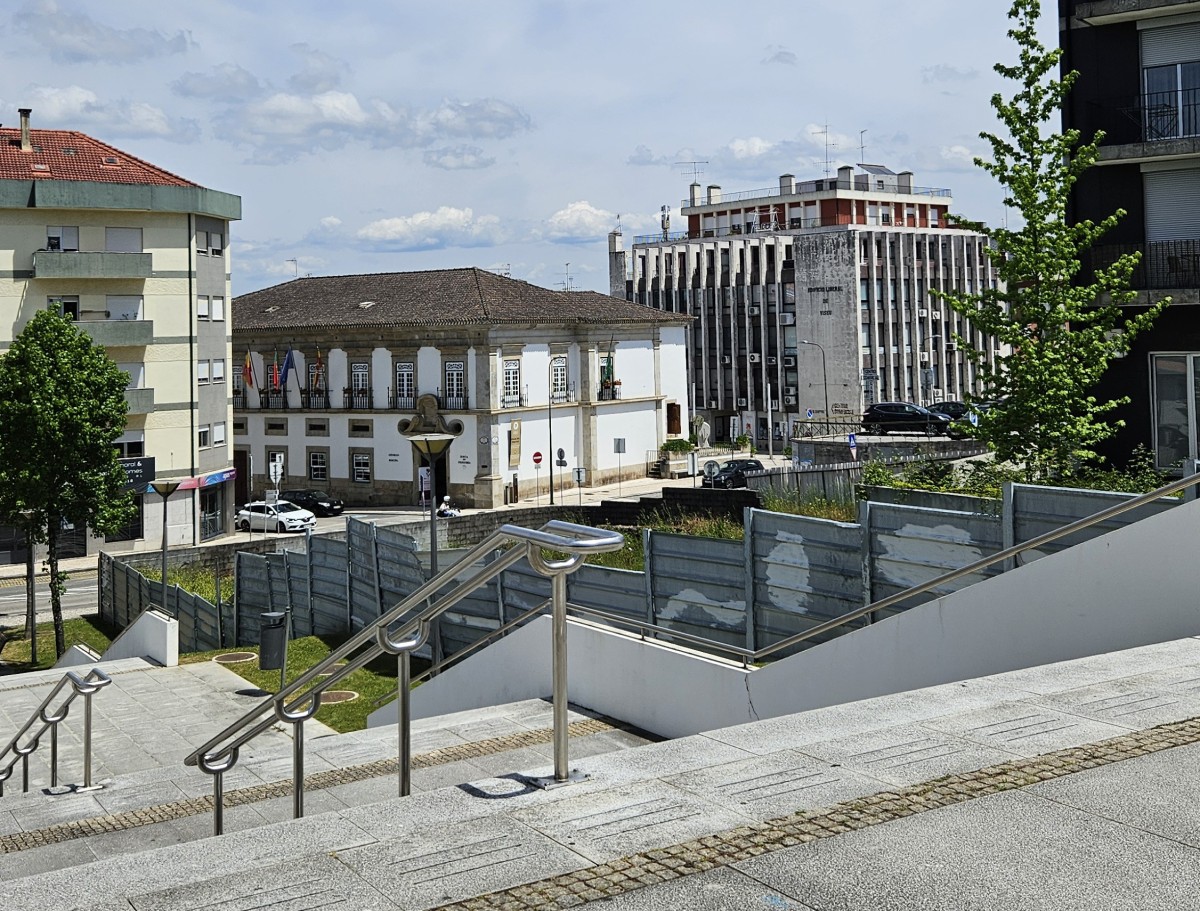
The streets are narrow, cobbled, mostly one-way, and dotted with cars parked in every direction. You get the impression that these streets were never meant for modern traffic — and that’s exactly what makes them so charming.
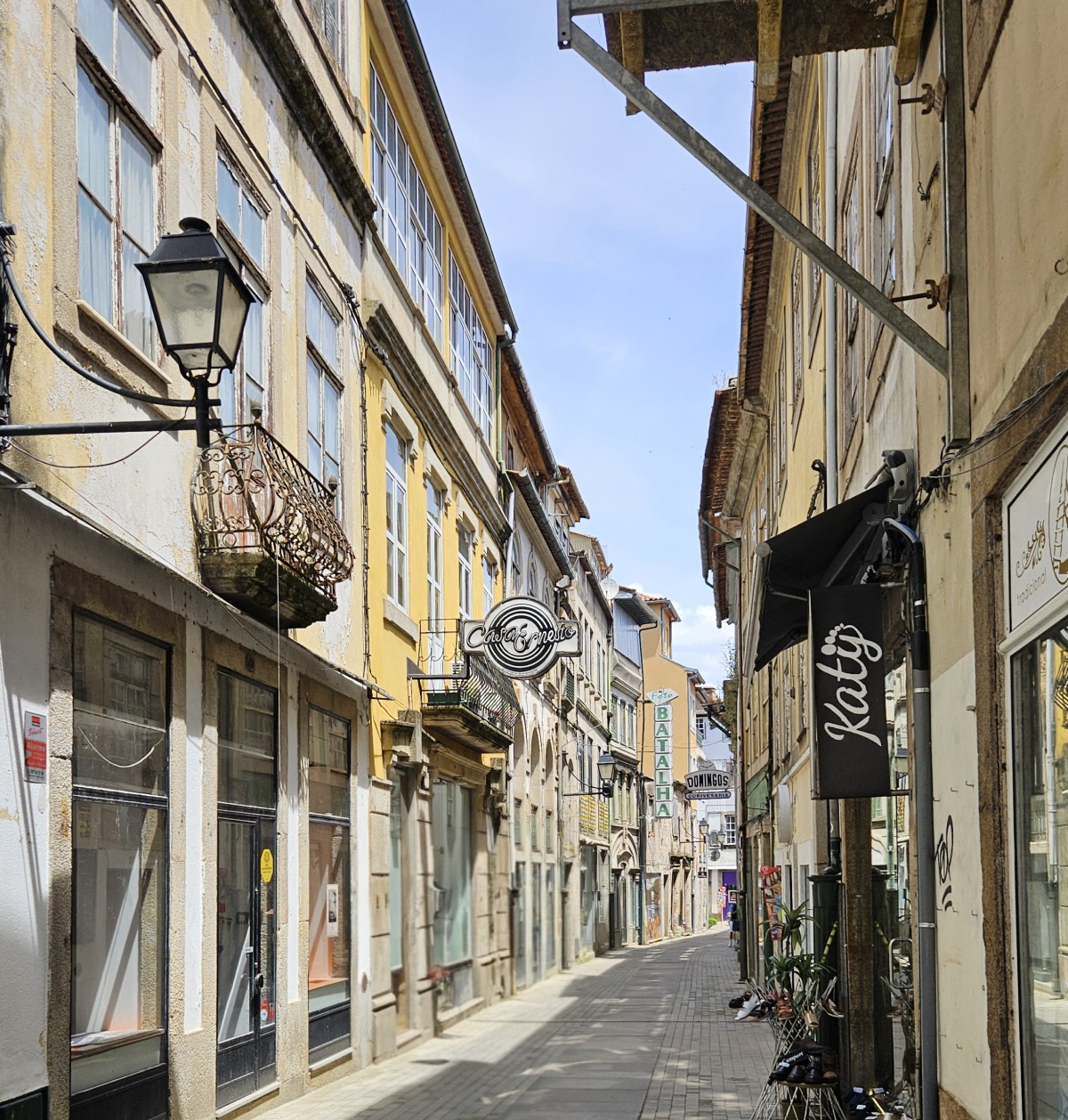
Ancient stone façades, wooden shutters and windows, wrought iron railings, flowers on balconies and terraces, cozy courtyards, fountains, and countless architectural treasures. Maybe for the locals it’s all just part of daily life.
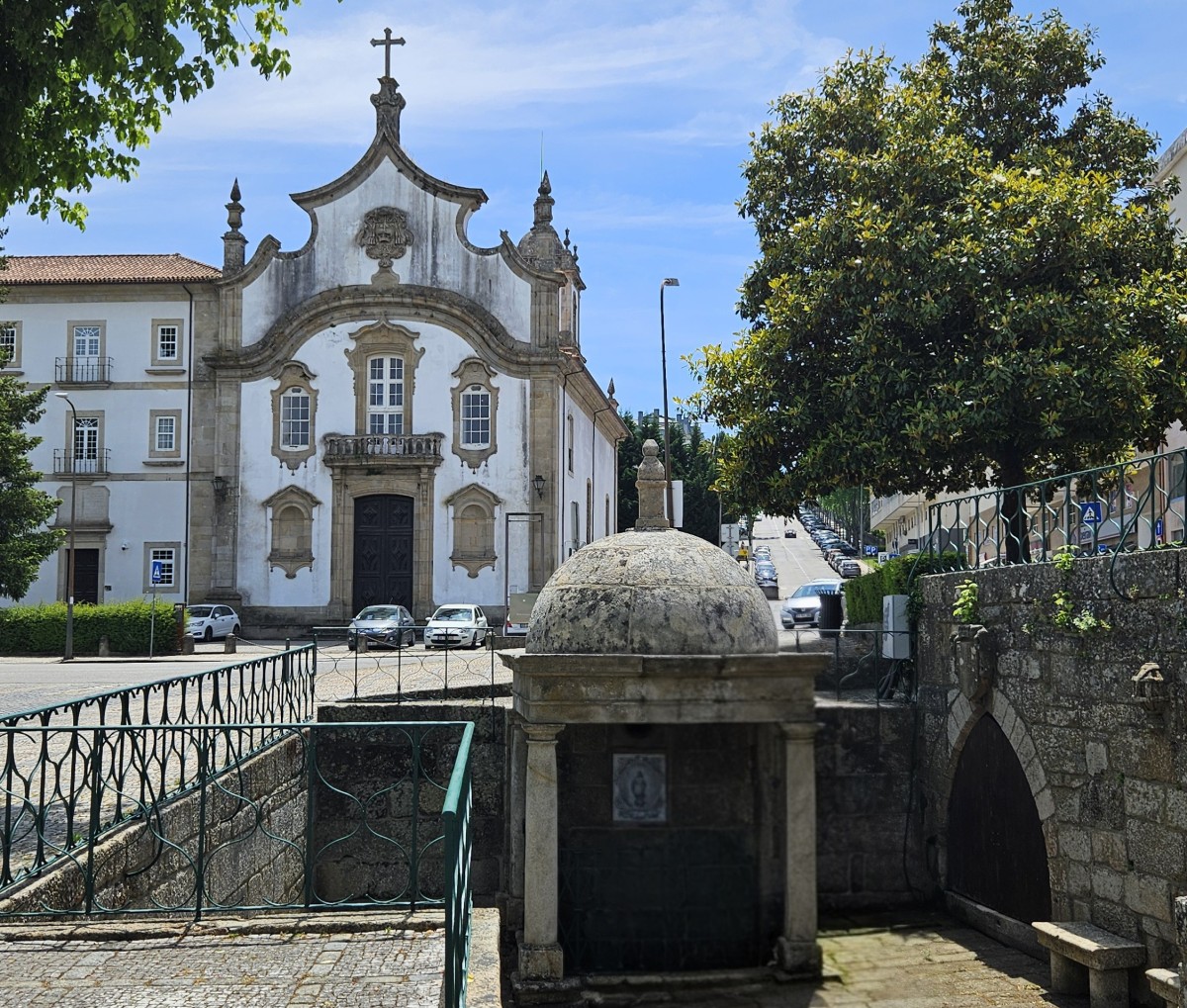
To me, this is a city that you want to observe slowly, breathe in, and truly remember.
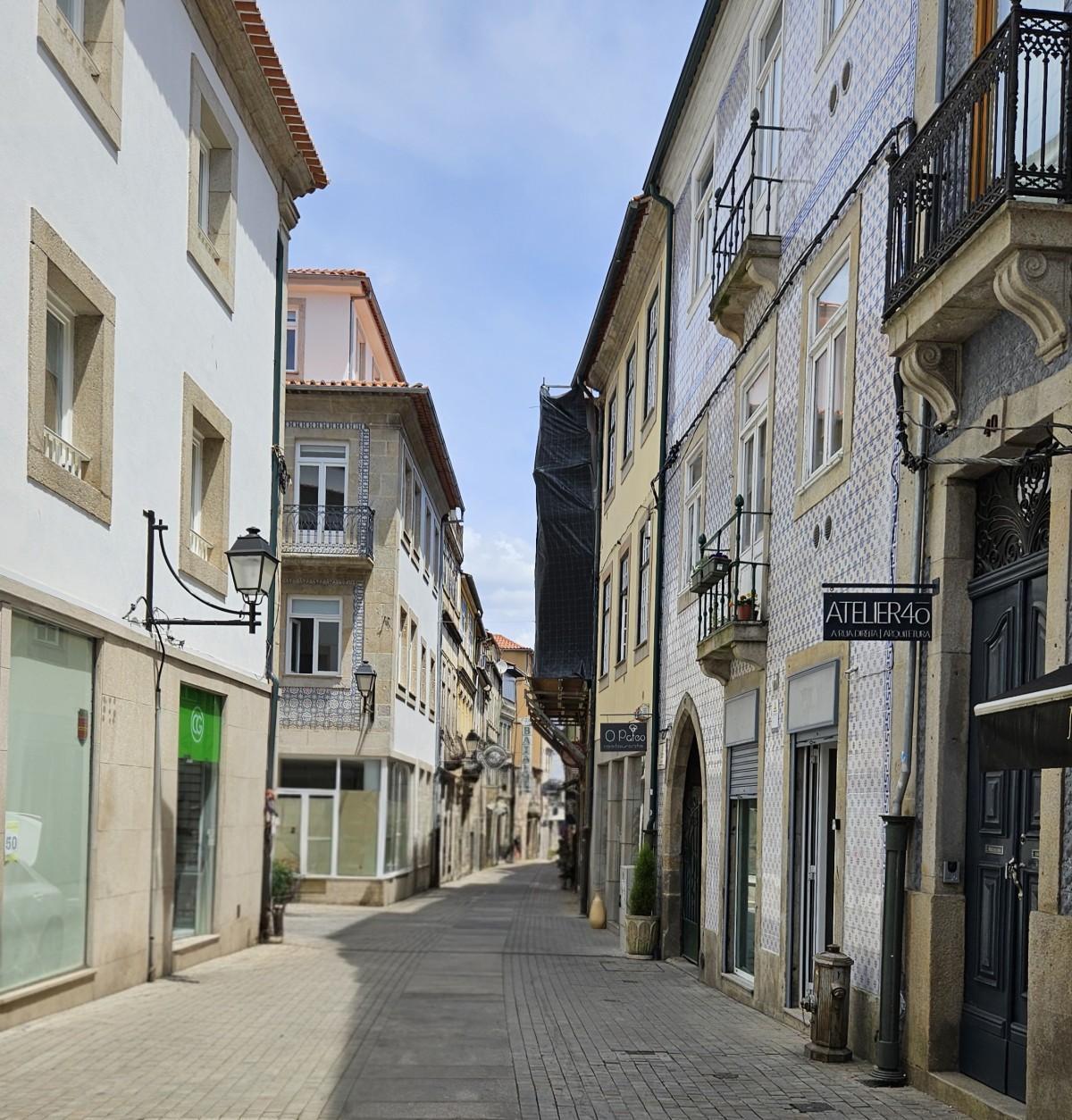
And yes — the near-total absence of tourists gives the city a sense of authenticity. We visited at the end of May, from Sunday to Tuesday.
No gimmicks, no one pulling you by the sleeve to enter their restaurant just to “recoup their investment.” Everything felt calm, sincere — and perhaps unmistakably Portuguese.
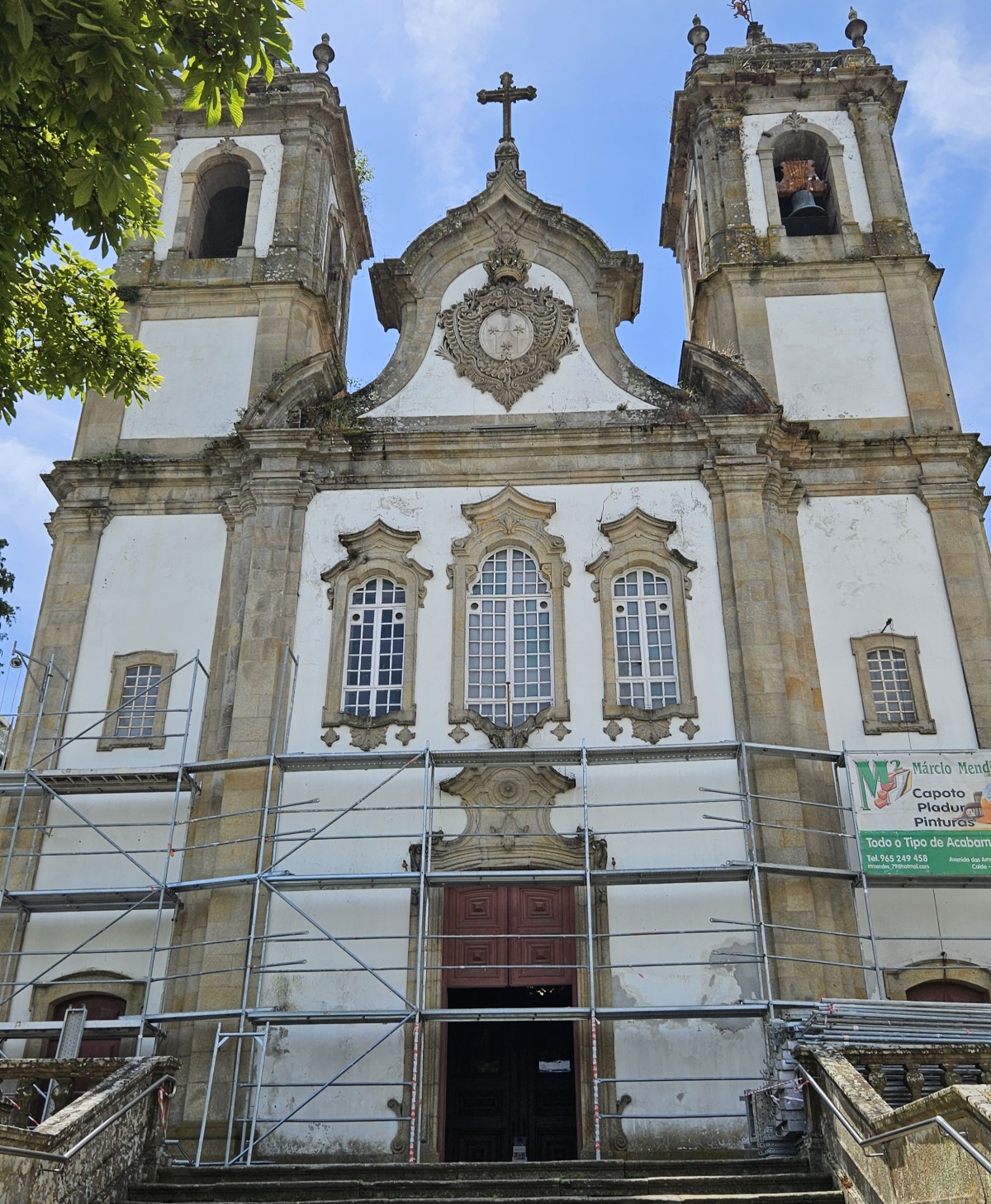
We wandered a bit and stumbled upon a sushi bar — and decided to have dinner there.
When we lived in Montenegro, we missed sushi terribly. It was nearly impossible to find — especially at a reasonable price.
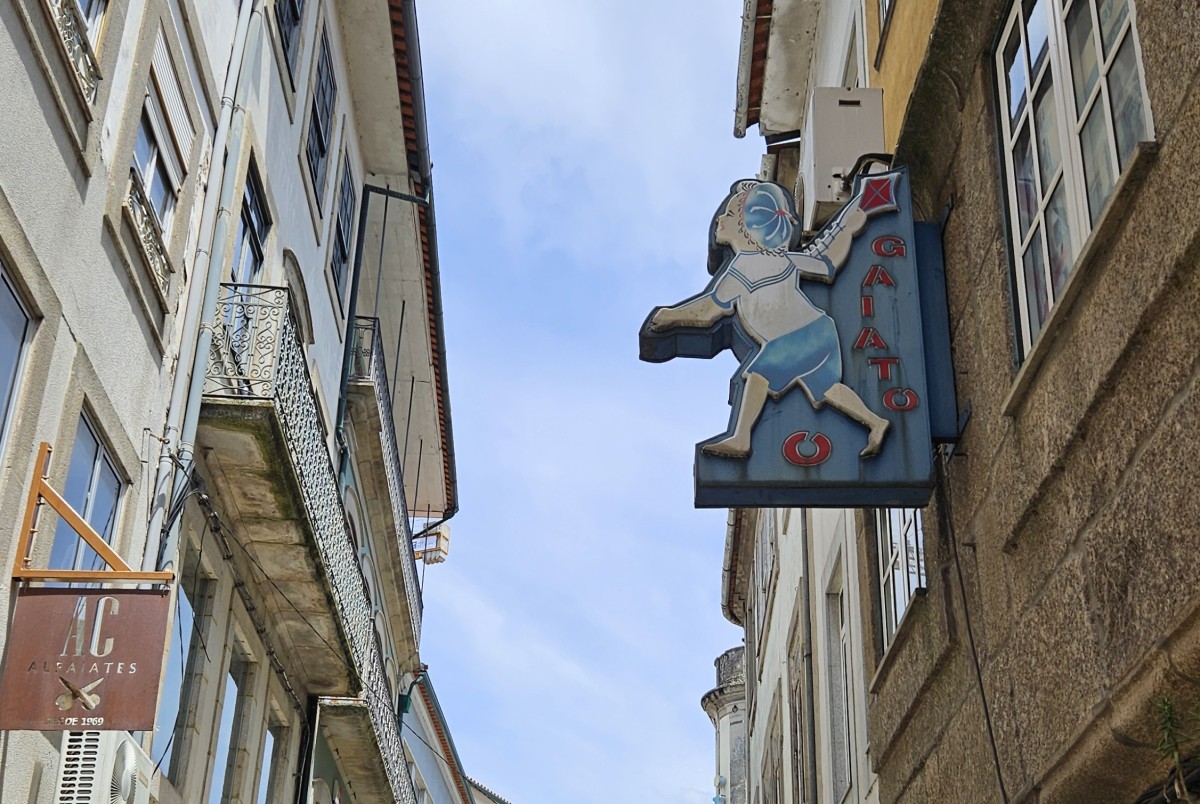
We didn’t dare try any traditional Portuguese dishes that evening — we had to go to AIMA the next morning to submit our documents, and we had no idea how our bodies would react to unfamiliar cuisine. A heavy or greasy meal could have spoiled everything — so we decided not to take the risk.
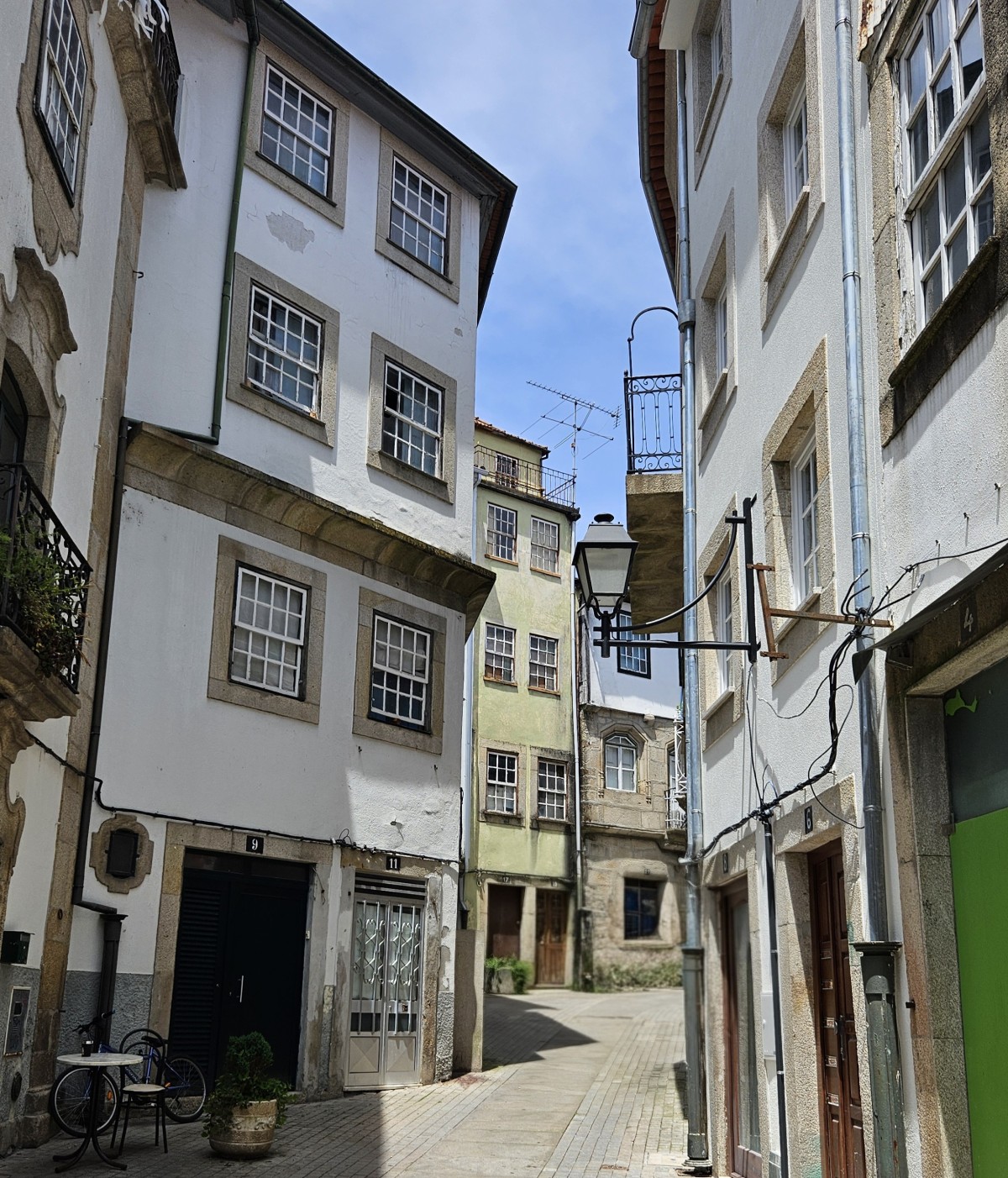
The evening, however, turned out to be all about football.
A major match was on — Benfica (in red) vs. Sporting (in green) — two of Portugal’s top football clubs.
And when the final whistle blew with a 1:3 victory for Sporting, the entire city erupted with emotion.
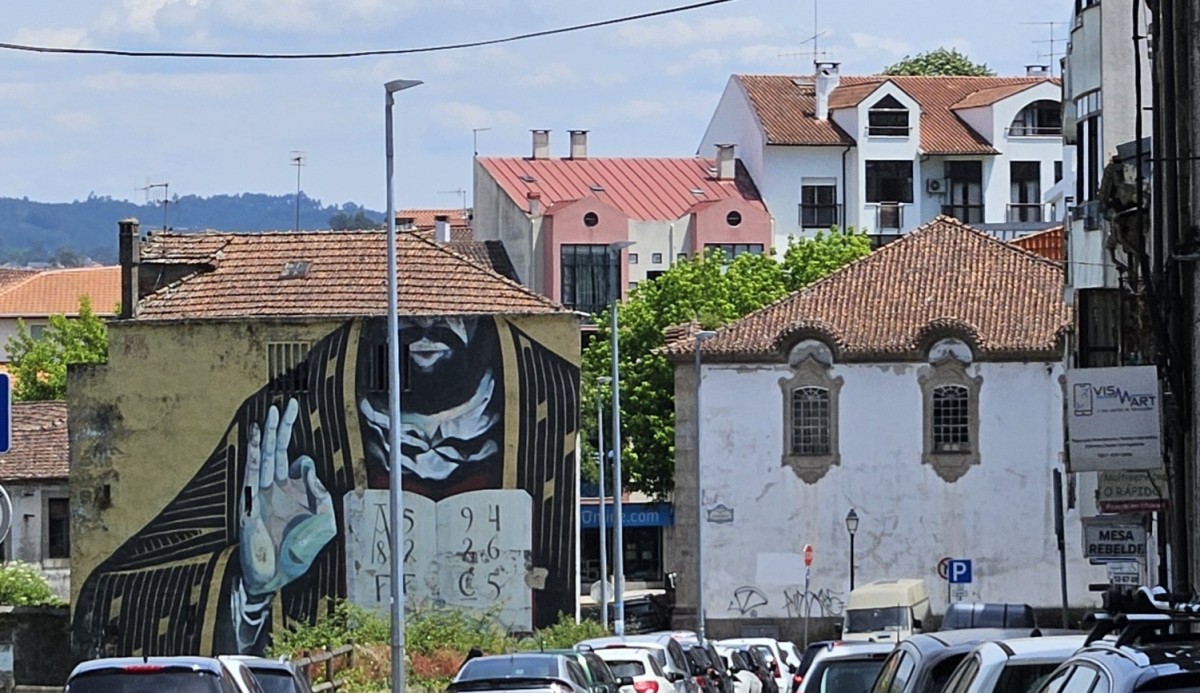
Fans were blowing horns, whistling, shouting, launching green smoke into the air — the celebration lasted well past midnight.
Had Benfica won, it would’ve been just the same — but with red smoke.
In Portugal, football is sacred, and every match is a celebration, no matter the outcome.
In general, the Portuguese love their festivals, championships, and celebrations. They party with passion. You should’ve seen how they celebrated placing 21st in this year’s Eurovision. The whole of Lisbon was buzzing until morning — fireworks, flame shows, dancing. Google it if you don’t believe me.
But now, back to Viseu...
Parque Aquilino Ribeiro — the green heart of Viseu
Just a short walk from our hotel, we found a lovely urban park — Parque Aquilino Ribeiro. That’s where we ended up strolling one evening while looking for a place to have dinner.
It’s a green oasis in the center of Viseu — with a pond, ducks, fountains, benches, and a cozy children’s playground. The perfect spot to relax, enjoy a slow walk, or take a peaceful break from the urban bustle.
Just a heads-up: the park gates may close after 11 PM. In Portugal, many public areas are locked at night for the safety of residents and to protect the infrastructure. Sadly, vandals and “barbarians” can be found even in calm cities.
Submitting documents to AIMA — the stressful part of the trip
Filing our residence application was the main reason we came to Viseu.
It’s probably the most stressful and unpredictable part of the entire process — even just getting a submission slot is already considered a victory.
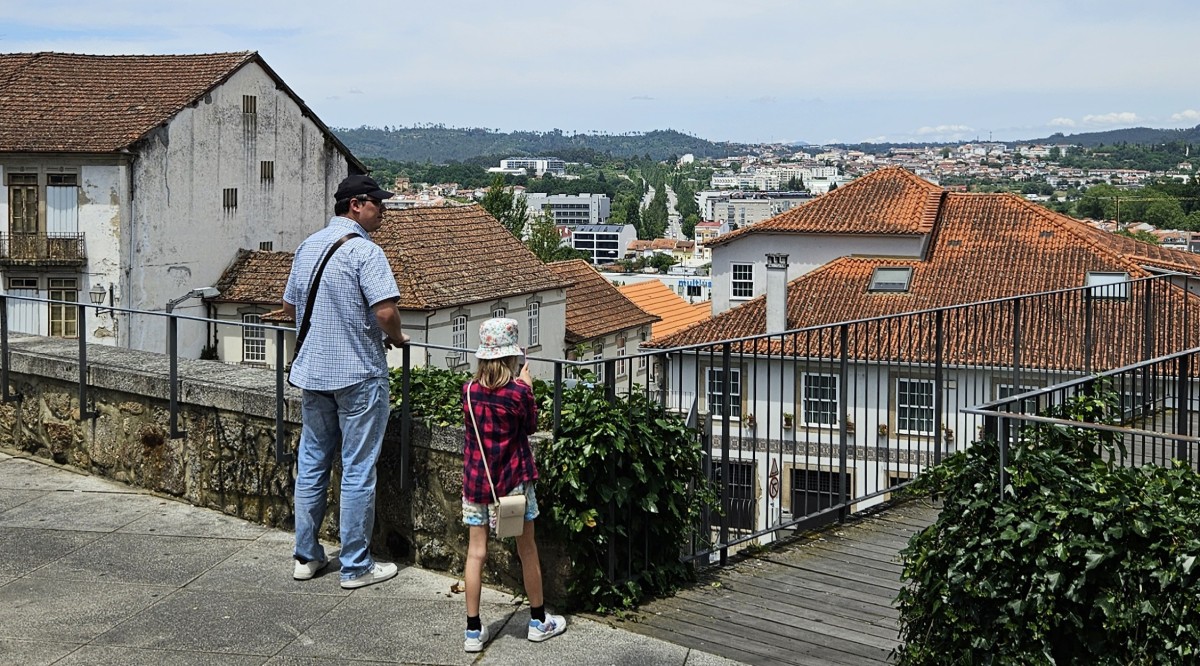
We did manage to submit our documents successfully — though it was far from easy.
My own appointment was pushed to August — and no updates appeared in my account. Then it got pushed again — to October. And it might be rescheduled again, who knows.
It sounds absurd, but believe me, there’s nothing funny about it.
I didn’t get my appointment through court; I received it with my visa from the Serbian consulate, as per the official procedure. Had they not accepted us that day, I’d still be waiting — with an expired visa and my visa-free days already used up.
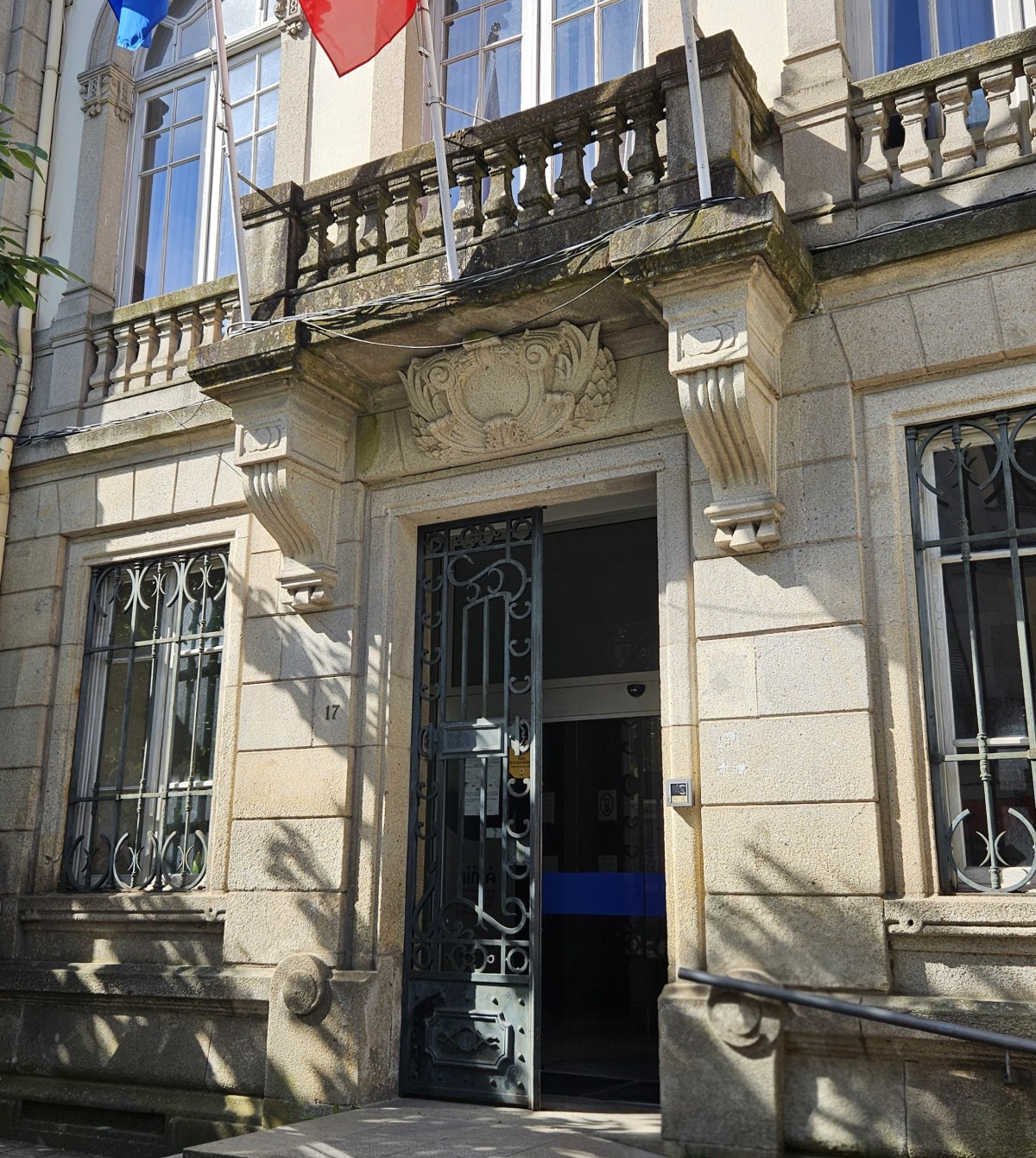
We waited in the hallway for nearly two hours, since we arrived not at our scheduled time — 3:30 PM — but early, at 9:00 AM.
At first, they were only letting in those who were on the list for that specific time slot. Anyone without a valid appointment wasn’t even allowed to step inside. All communication happened at the entrance — with the security guard. Some people just had a quick question, others tried persuading their way in, and many wanted to clarify the list of required documents — because every AIMA office has different rules. On paper, the process for migrants looks simple, clear, fast, and transparent. But in reality — no, it’s none of those things.
They say these stricter rules were introduced recently, as too many people came unprepared — without even the basics: NIF, rental contract, proof of financial means (which is a tricky one: even if you show the right amount, it’s “halved” if you pay six months’ rent upfront), criminal record certificate, and translated documents. But as I mentioned — there’s no definitive checklist, so people simply don’t know what exactly they need or how to do it right. We brought everything we could gather, collecting info piece by piece from various groups, friends, and friends of friends.
After two hours of waiting, when all the “official” visitors had left, they called in only Yegor.
Zhenya and I were left waiting in the hallway. And of course, right then the kid suddenly needed the bathroom. As it often happens in government buildings — the toilet was out of order. We couldn’t leave, as we hadn’t been formally accepted yet, but also hadn’t been turned away — so all we could do was wait.
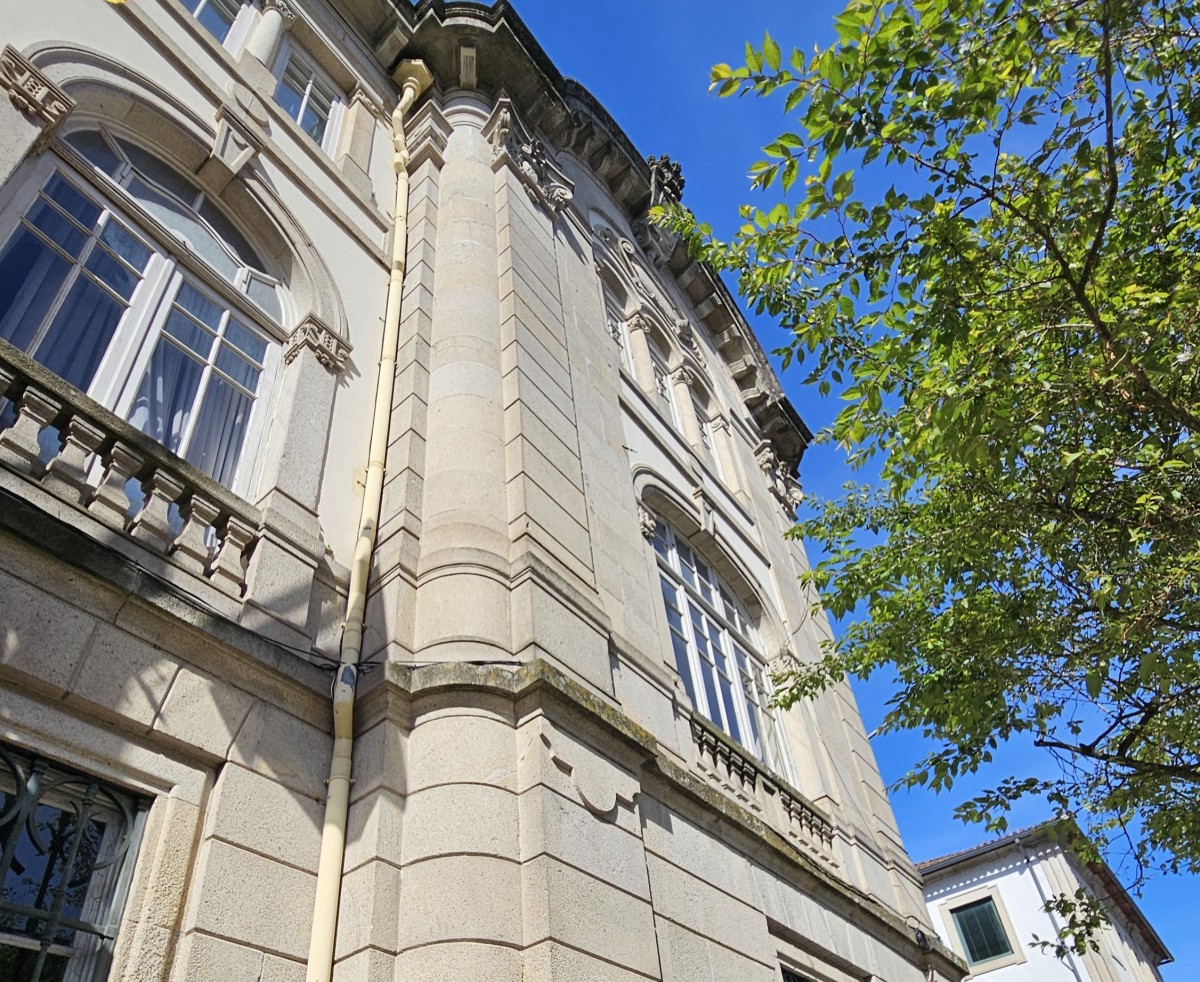
Zhenya started to get anxious and burst into tears. I tried to distract her the best I could, but I was already on edge myself — we couldn’t leave. Finally, after 15 minutes, they called us in.
Yegor was still being processed: they were reviewing his documents, scanning some, returning others.
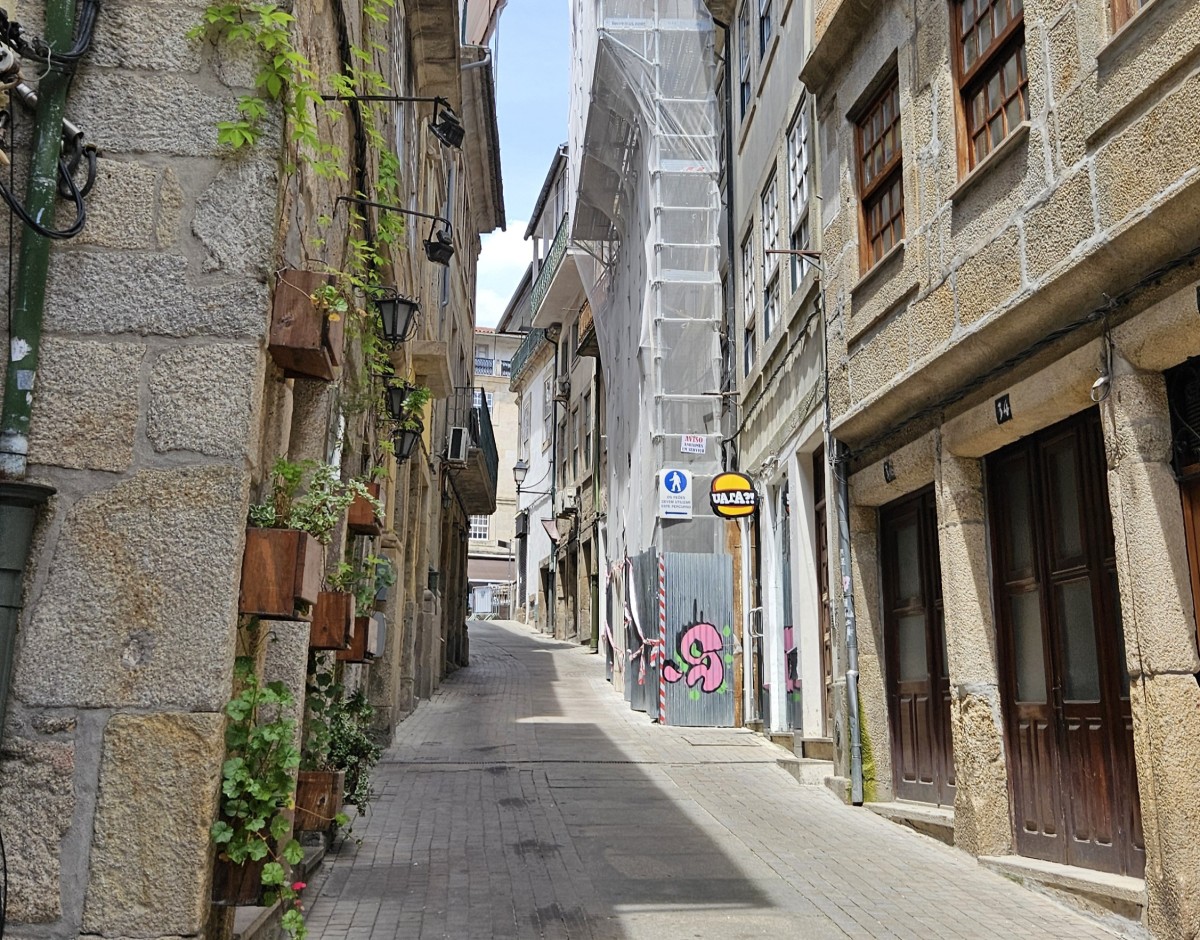
Another AIMA employee began processing us. She opened my file, while Zhenya kept whimpering and sniffing. The woman looked up in surprise: “What’s wrong?” We explained we had been waiting for over two hours in a cold hallway, sitting on hard chairs, and our daughter needed the restroom. Thankfully, she was understanding. “Give me five minutes — and you’re free,” she said. She took the photo, scanned the fingerprints, and even the signature (yes, they take fingerprints and signatures from kids too), and said we could go to the bathroom. But — the toilet still wasn’t working. Luckily, we had a helper with us (recommended by the legalization office), and she took Zhenya to a nearby café, while we stayed behind to finish the process.
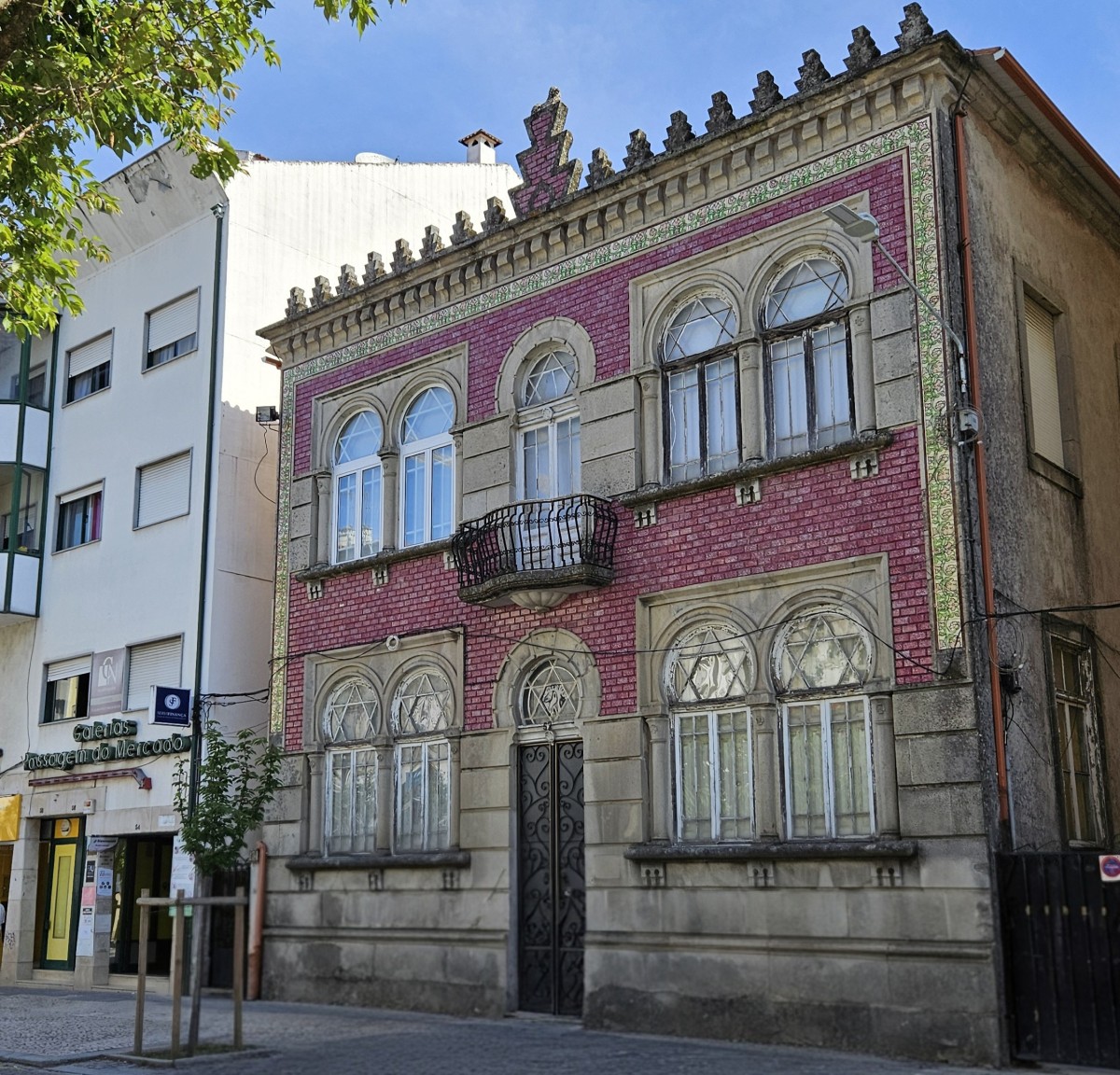
In total, it took about 40 minutes for the three of us, because first they had to upload all documents for the main applicant — Yegor — and only then ours. At the end of the process, the kind lady who handled our case said: “That’s it. You’re all set. You don’t need to go to Bragança anymore (that’s where I was originally registered), and your daughter doesn’t have to go to Guarda (where Zhenya had been assigned). Expect the documents by mail. If anything comes up, we’ll contact you by email.” We thanked the staff wholeheartedly — practically jumping with joy — and stepped out of the office.

Our helper charged us €400 for the service — for all three of us. That’s how “simple” the document submission process is in Portugal.
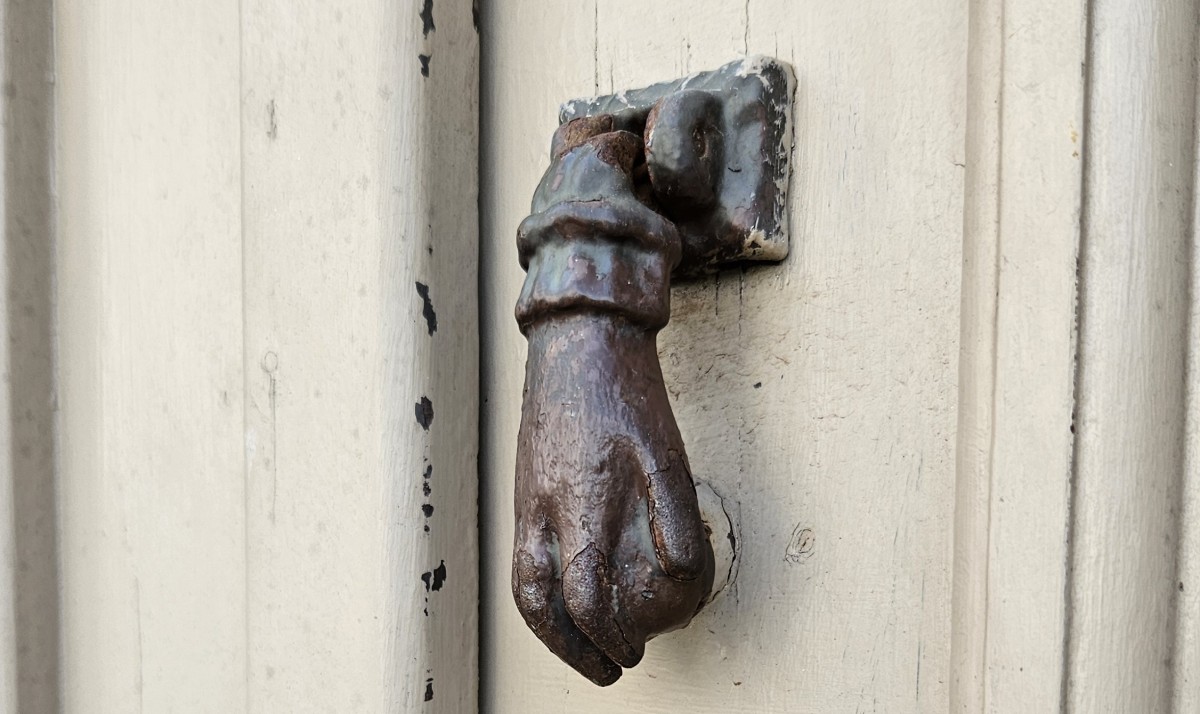
In Portugal, getting an AIMA appointment is an adventure in itself.
People often wait for years to submit documents, renew papers, or reunite with family members. “Helper” services typically cost around €1500 per person — from gathering documents to the actual registration. “Callers” (people who try nonstop to get through to AIMA and secure a slot) charge from €300 and up.
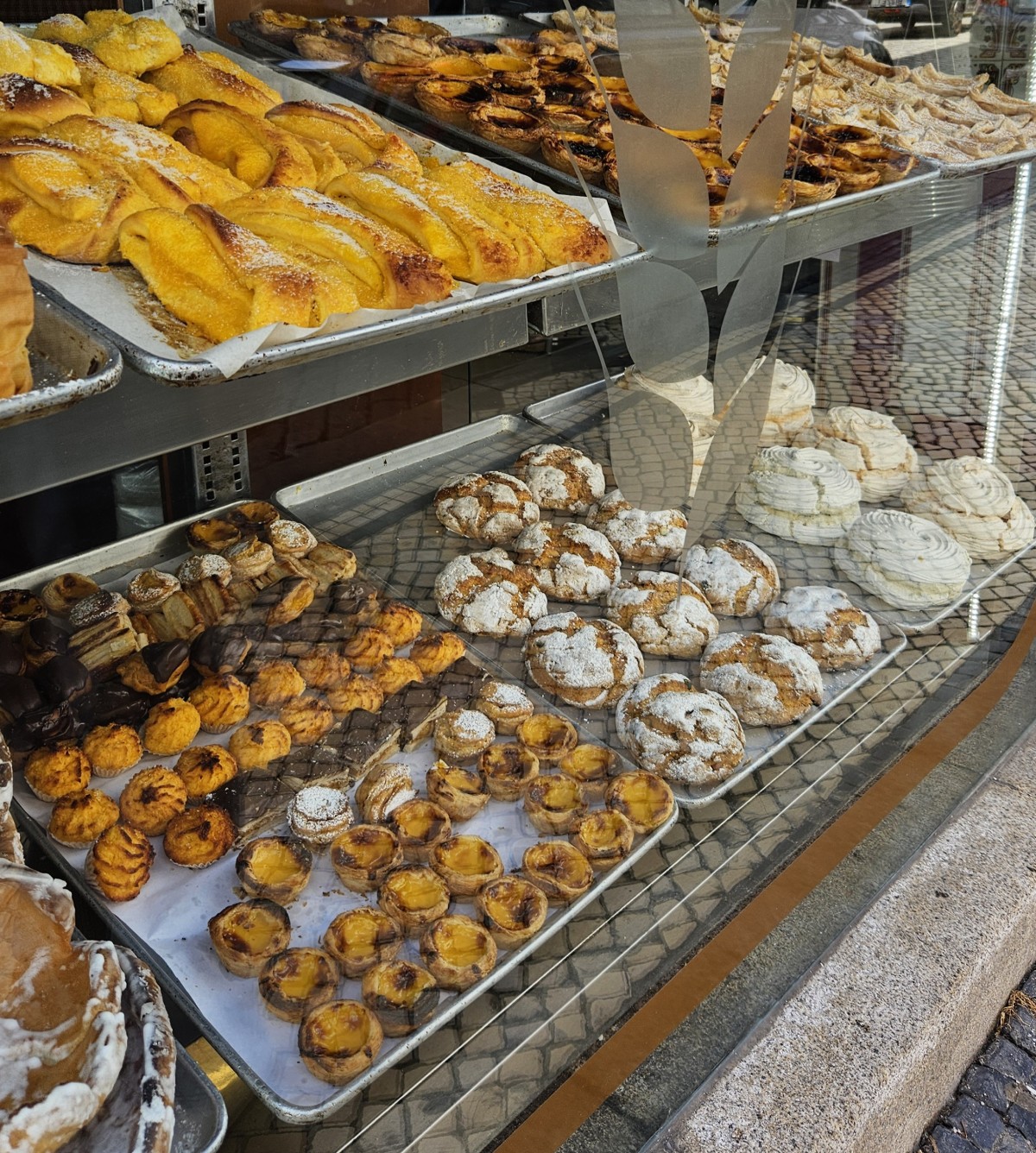
At the bottom — the iconic pastéis de nata, usually priced around €1–2 each
Lawyers are a separate story. They work strictly by the book and won’t be able to “work something out” if you don’t have an appointment or your case doesn’t clearly fall under the law.
I know of a case where a husband and wife showed up together, but were scheduled for different offices and dates. The lawyer went in with them, spoke to the staff, came back out and said: “They won’t take you. Come at your assigned times and to your assigned offices.” (Curtain.) That “help” cost them €500.
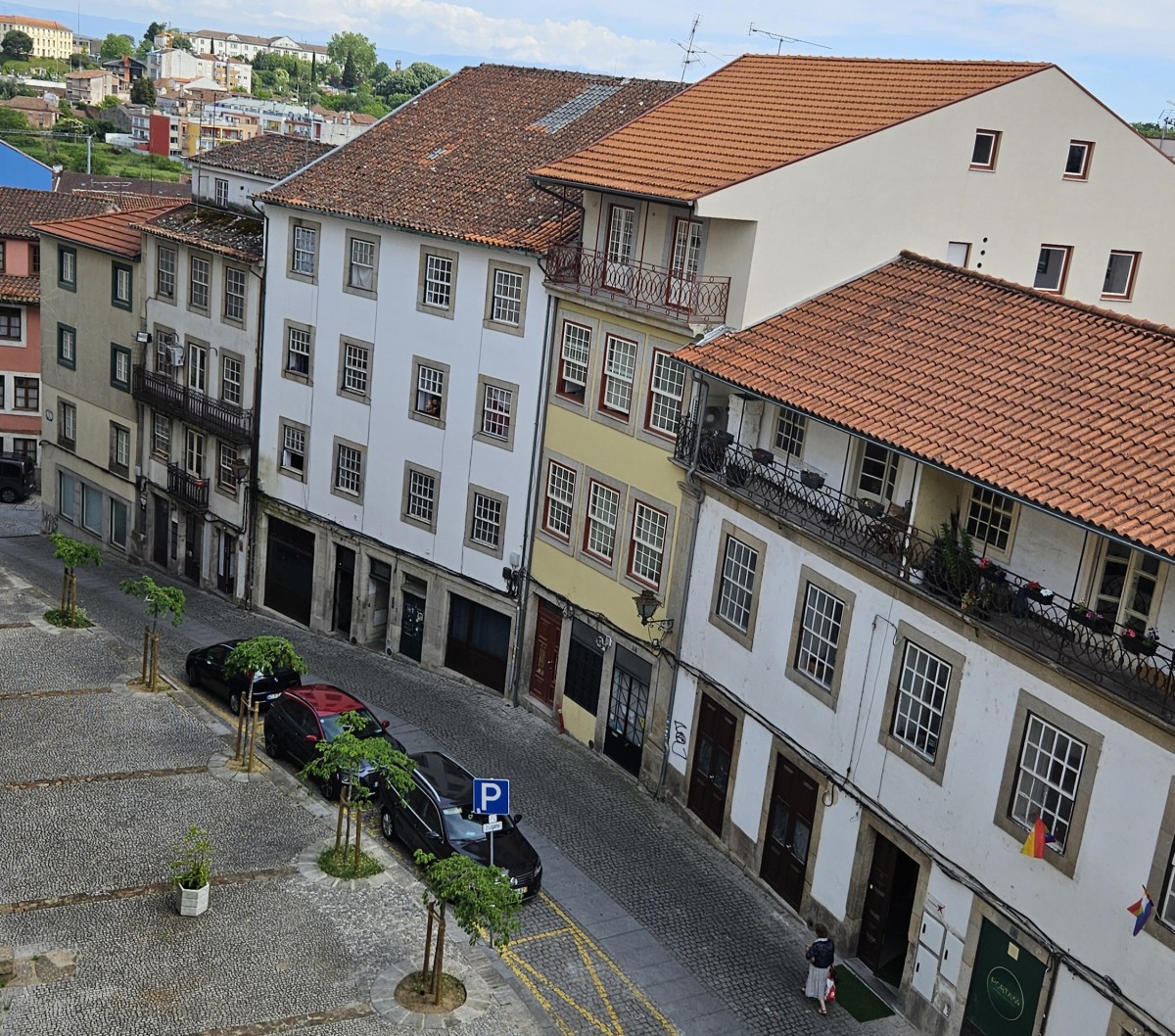
But of course, let’s make immigration laws stricter — because it’s clearly way too easy for foreigners (sarcasm).
We stepped out of the historic AIMA building in the city center — exhausted, stressed out, but relieved… and went off to clear our heads.
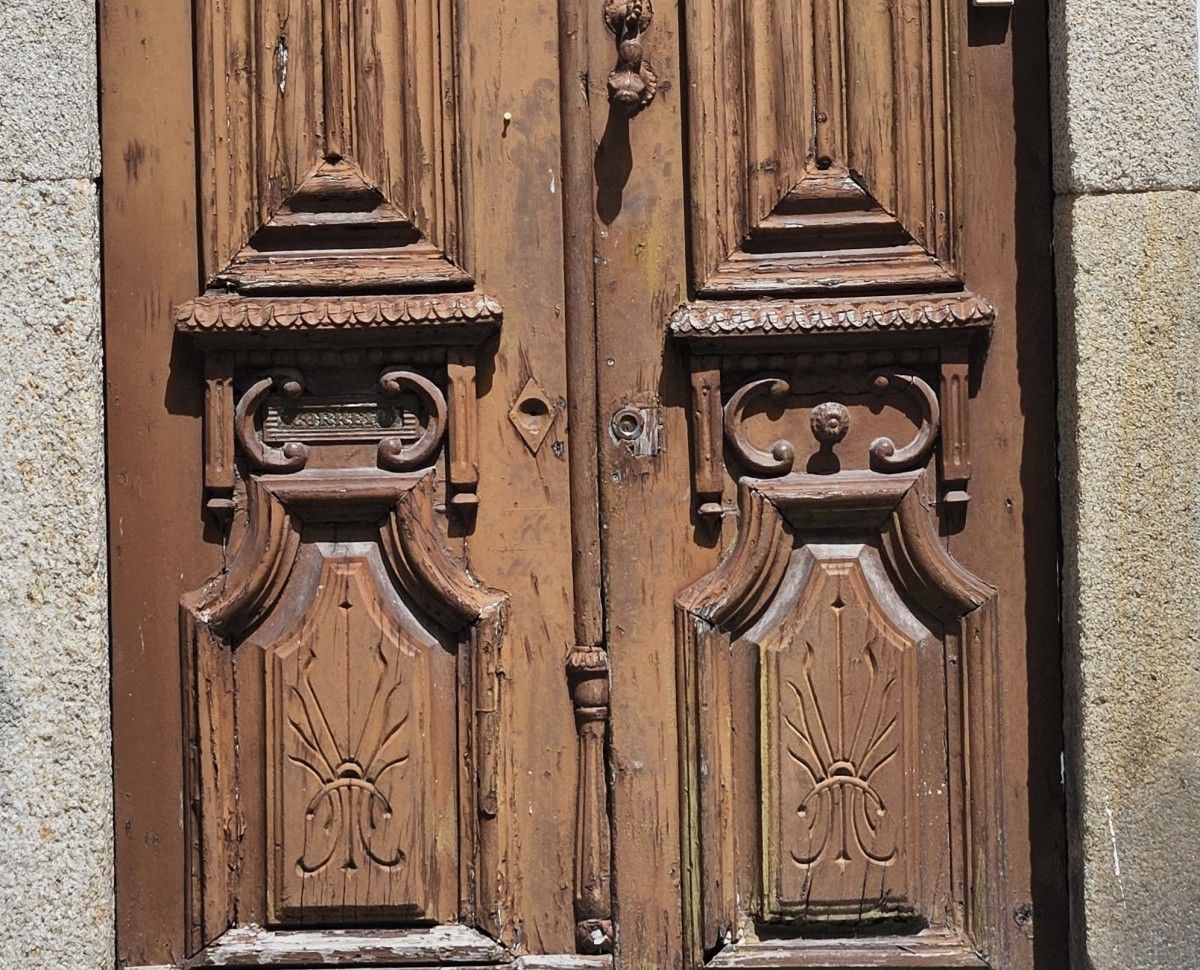
Rua Direita
My knees, arms, shoulders — everything was trembling. I looked around and thought: “What if… they hadn’t accepted us? What if we were missing one document?” These thoughts were pounding in my head so loudly I didn’t even notice we had wandered down an old narrow street and ended up by an ancient church where the façade was being washed and restored. I stopped, took a deep breath — and for the first time that day, I was able to simply look — to absorb the beauty with my eyes and disconnect from everything that had happened earlier. The entire ordeal at AIMA already felt like a distant fog.
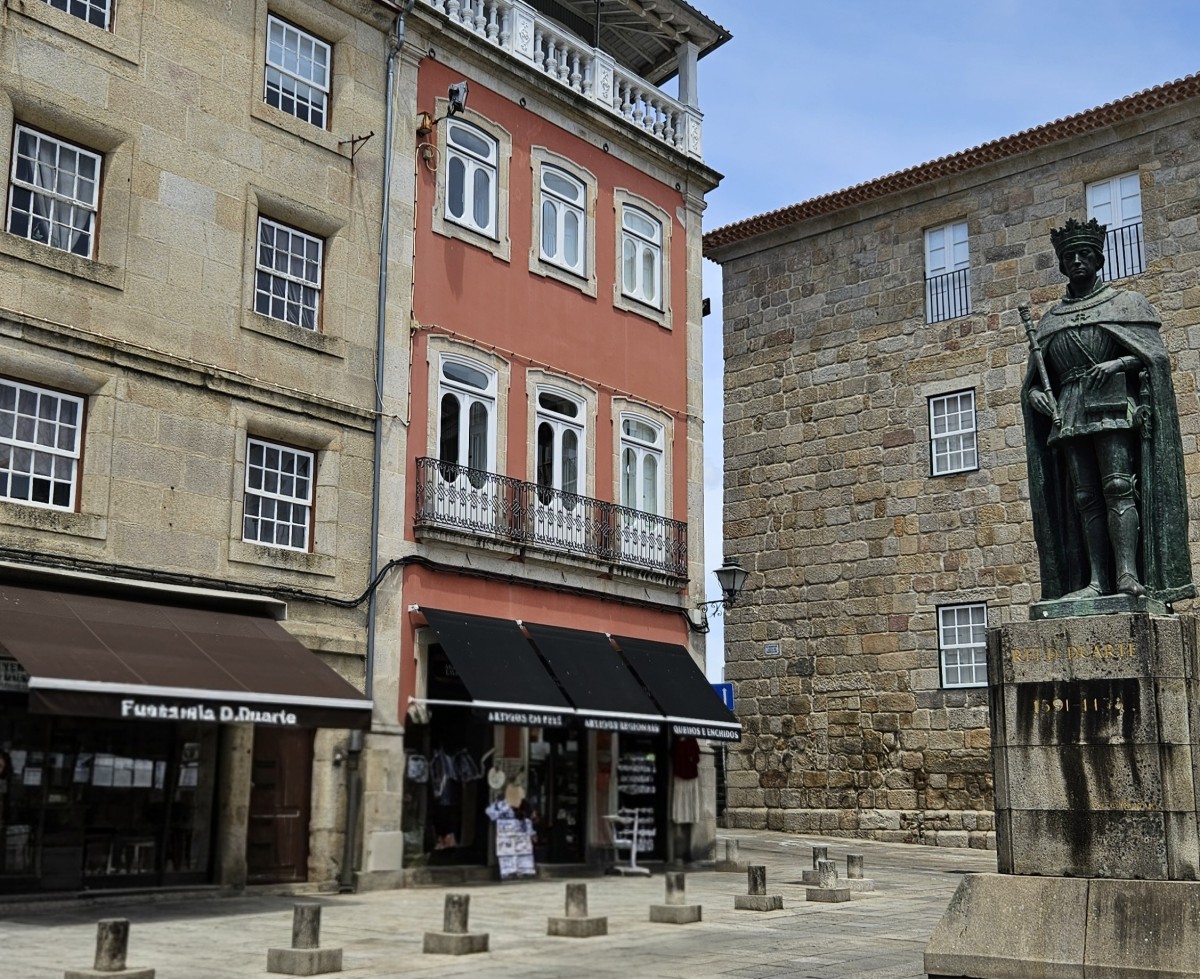
Rua Direita — the main street of old Viseu — and honestly, one of the most delightful streets I’ve ever walked. It’s beautiful and blissfully crowd-free. This is the historic commercial artery of the city: once home to craftsmen, jewelers, and merchants. Today, it’s lined with cozy shops, old mansions, cafés, antique stores, and artisan studios. There are also large green arrows painted on the road — part of a cycling route or perhaps left over from a local race.
You could say it’s a local version of Rua Augusta in Lisbon — only without the crowds, noise, or tourist chaos.
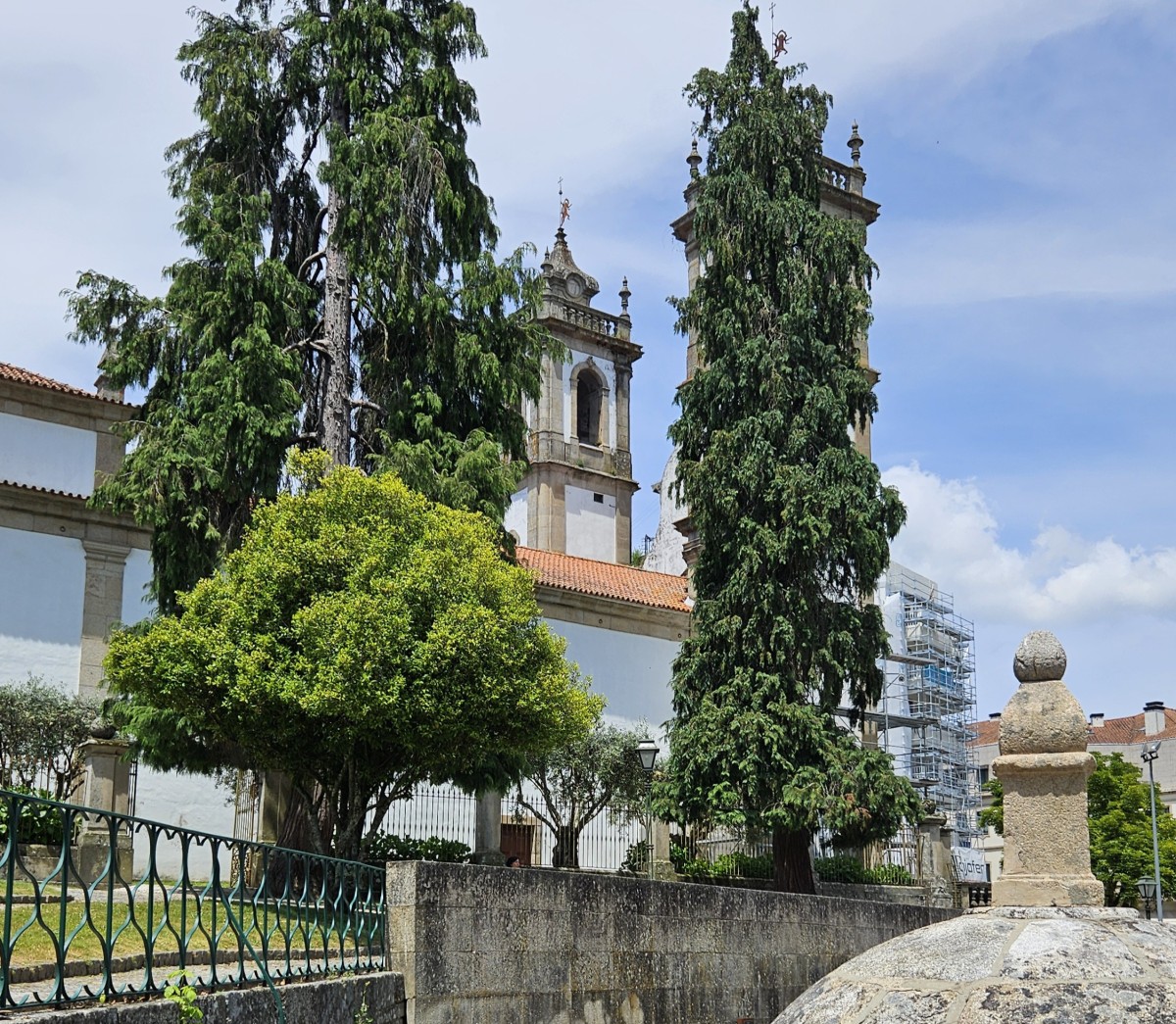
The architecture is a feast for the eyes: sculpted facades, vintage signs, flower-covered balconies, and steep winding alleys. The whole atmosphere feels like a movie set from another century — a blend of historical styles forming a kind of living timeline.
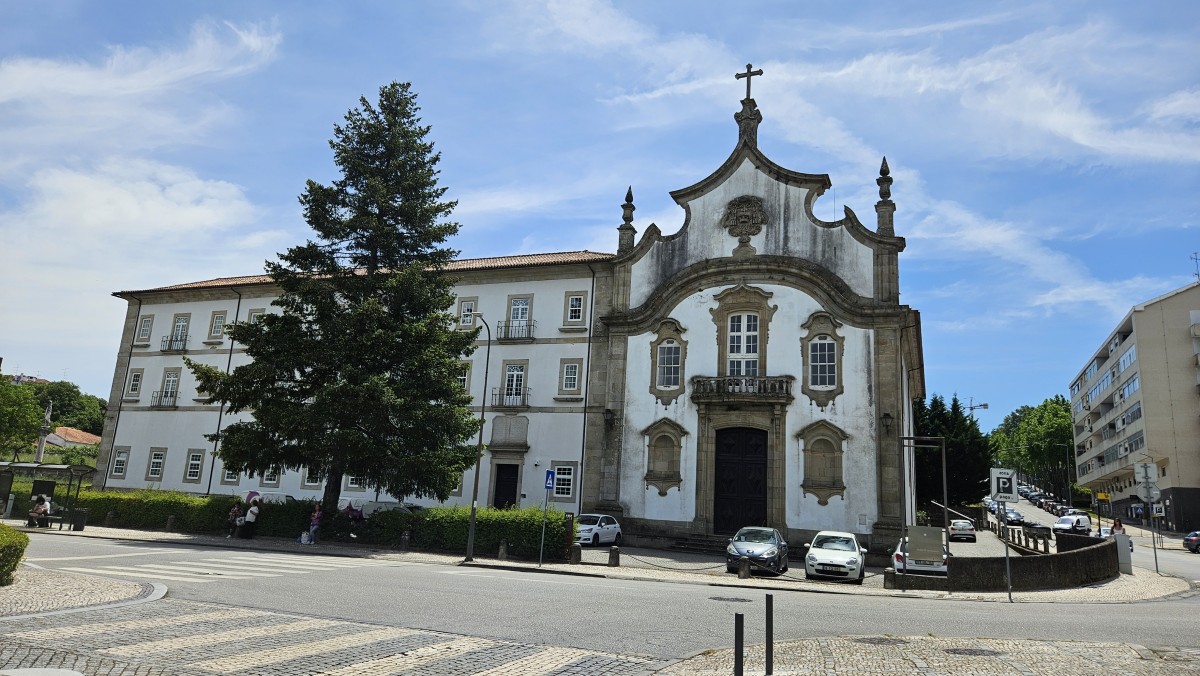
This street is like a thread that ties the entire old town together. If you ever visit Viseu, you’ll inevitably walk along it — even if you didn’t plan to. It just draws you in like a magnet, and before you know it, you’re strolling down Rua Direita, glancing into windows and soaking in the charm all around you.
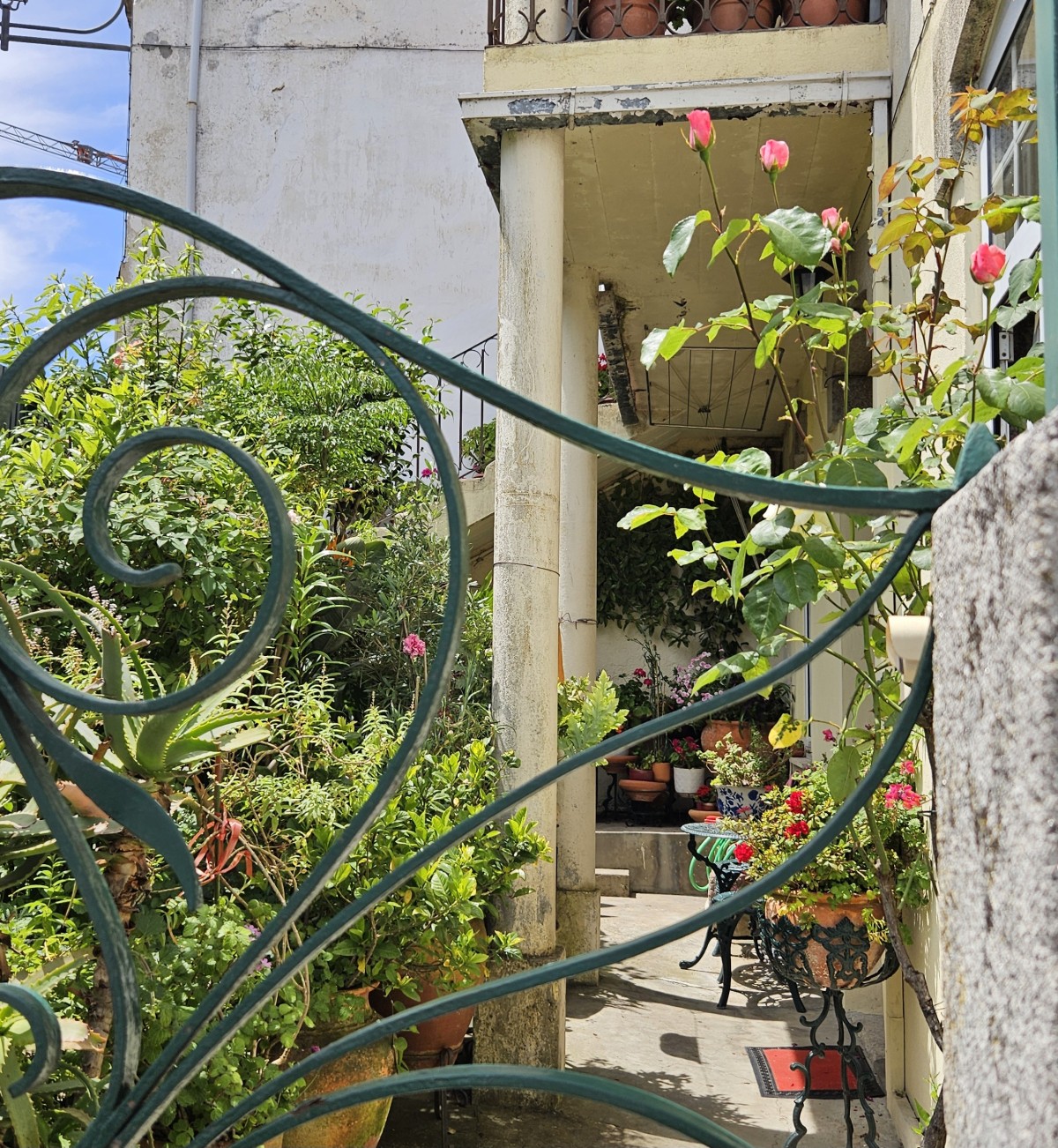
Viseu Funicular
We stumbled upon the funicular completely by accident — after submitting our documents, during a walk to clear our heads.
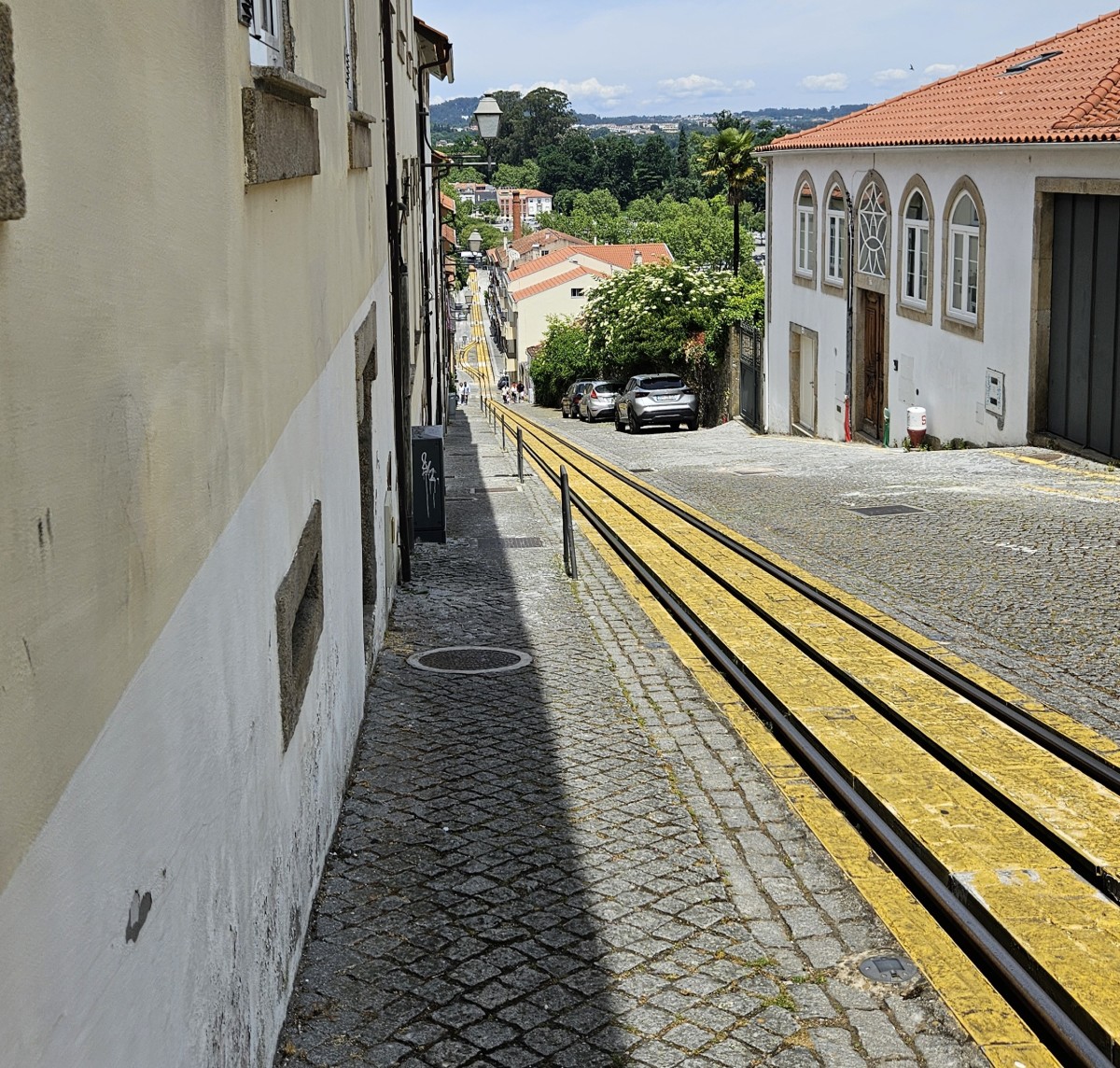
It’s a modern and completely free (!) funicular that connects the lower and upper parts of Viseu. It’s quite fun, especially for families with kids or for anyone who’d rather not tackle Viseu’s steep hills on foot. But — surprise! — when we got there, it was closed for lunch. Yes, even public transport in Portugal observes siesta.
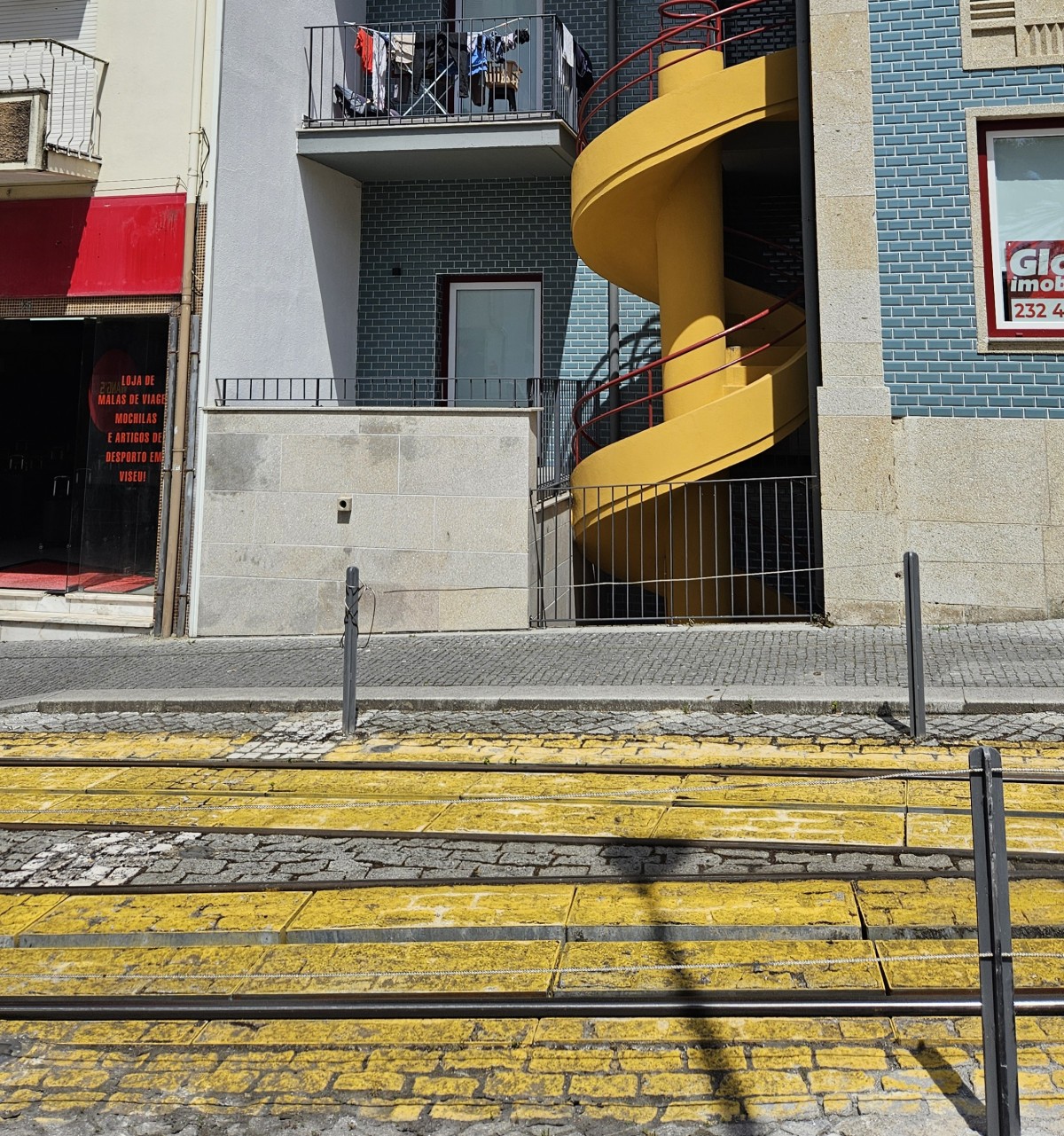
In the end, we walked downhill and accidentally ended up at the Fórum Viseu shopping center, where we grabbed a quick bite at the food court.
By the time we climbed back up the same steep street, the funicular staff had just returned from their lunch break. But by then, we weren’t in the mood to ride — so we just kept walking…
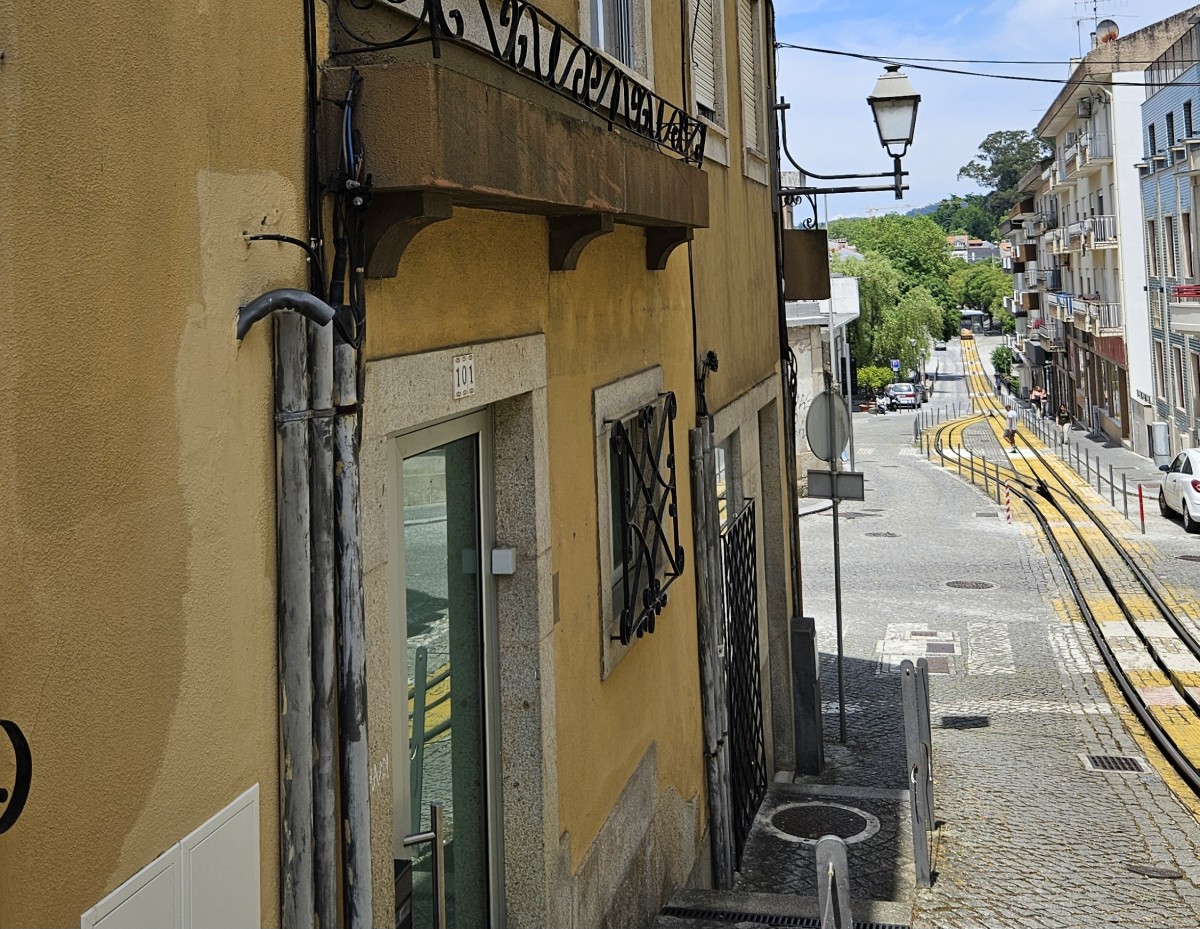
Sé Cathedral de Viseu — the heart and chronicle of the city
…and so, slowly and quietly, we arrived at the Sé Cathedral de Viseu.
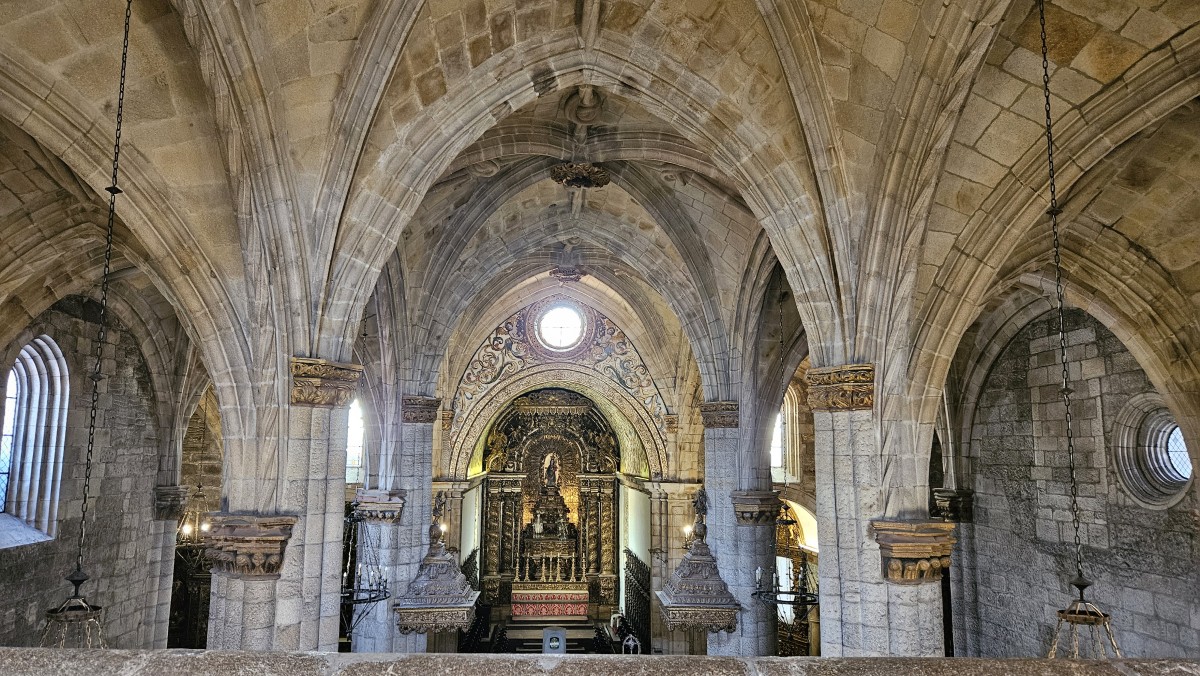
This is not just a church — it’s an architectural collage across centuries: from early Christian roots to gilded Baroque grandeur. Here you’ll find a fusion of Gothic, Manueline, Renaissance, Mannerism, and Baroque. Every stone, every arch, every statue feels like a page from the grand story of Viseu — and of Portugal itself.
The cathedral was built on the site of an early Christian basilica from the 5th century, while its present-day form began to take shape in the 12th–13th centuries, with a Romanesque-Gothic structure featuring three naves and eastern chapels.
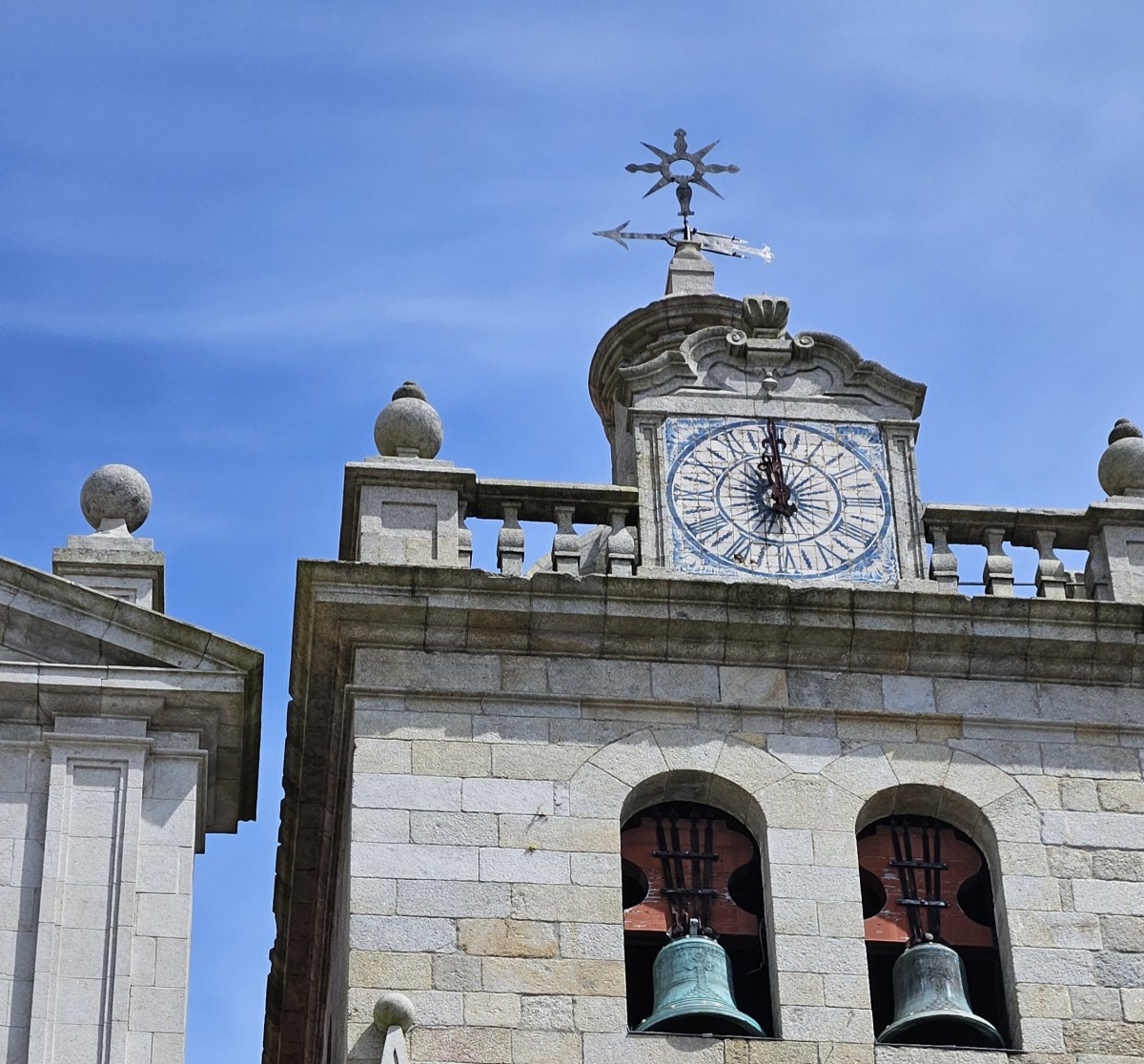
In the 16th century, under Bishops Diogo Ortiz and Miguel da Silva, a magnificent ceiling with “rope frames” in the Manueline style was added, as well as an Italian Renaissance cloister designed by Francesco from Cremona.
In 1635, a storm destroyed the north tower and the façade — both were rebuilt in the Mannerist style following the design of architect Juan Moreno.
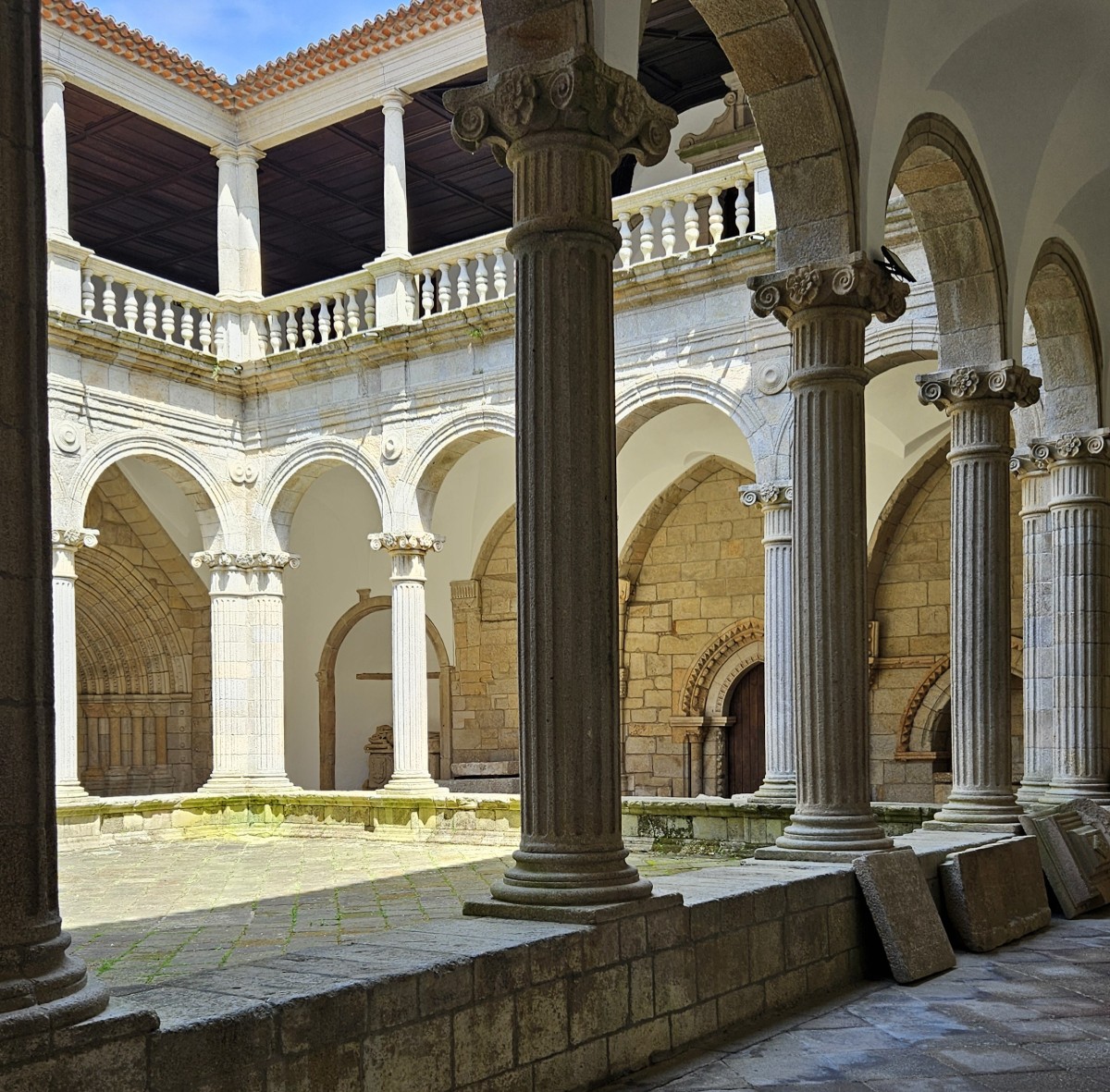
Sé Cathedral de Viseu is like a layered cake of architectural eras: each element unveils its own century, its unique aesthetic, its own voice.
- Naves and walls preserve the restraint of Romanesque style and the verticality of Gothic — this is the oldest part of the cathedral, built in the 12th–13th centuries. The dark stone, massive pillars, and minimalist forms evoke a powerful sense of ancient strength and dignity.
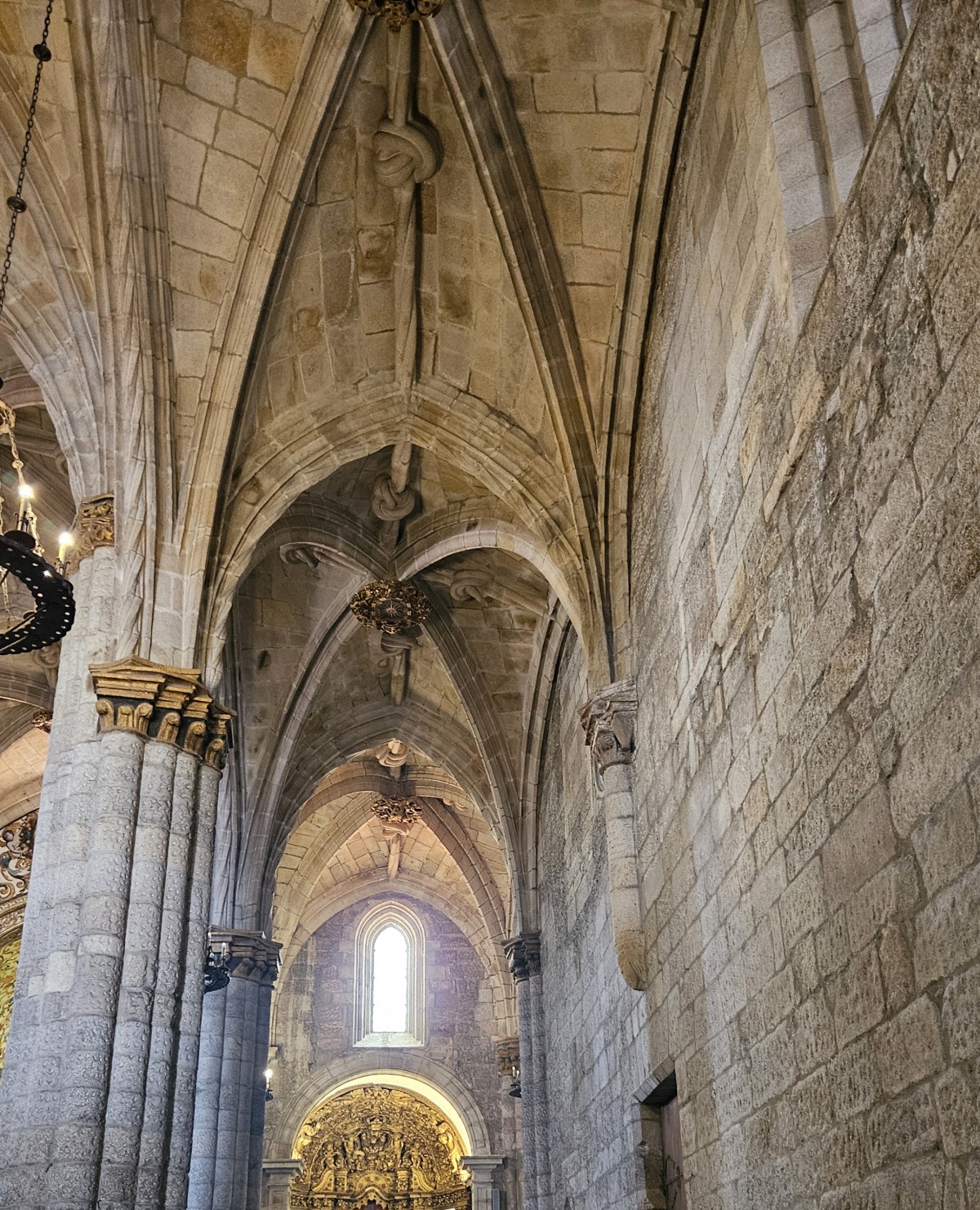
- Ceiling and vaults are a true masterpiece of 16th-century Manueline architecture. Look up and you’ll see stone “ropes” with knotted patterns wrapping the ceiling like a maritime net. This is a unique Portuguese design element, rarely seen even in the country’s most famous cathedrals.
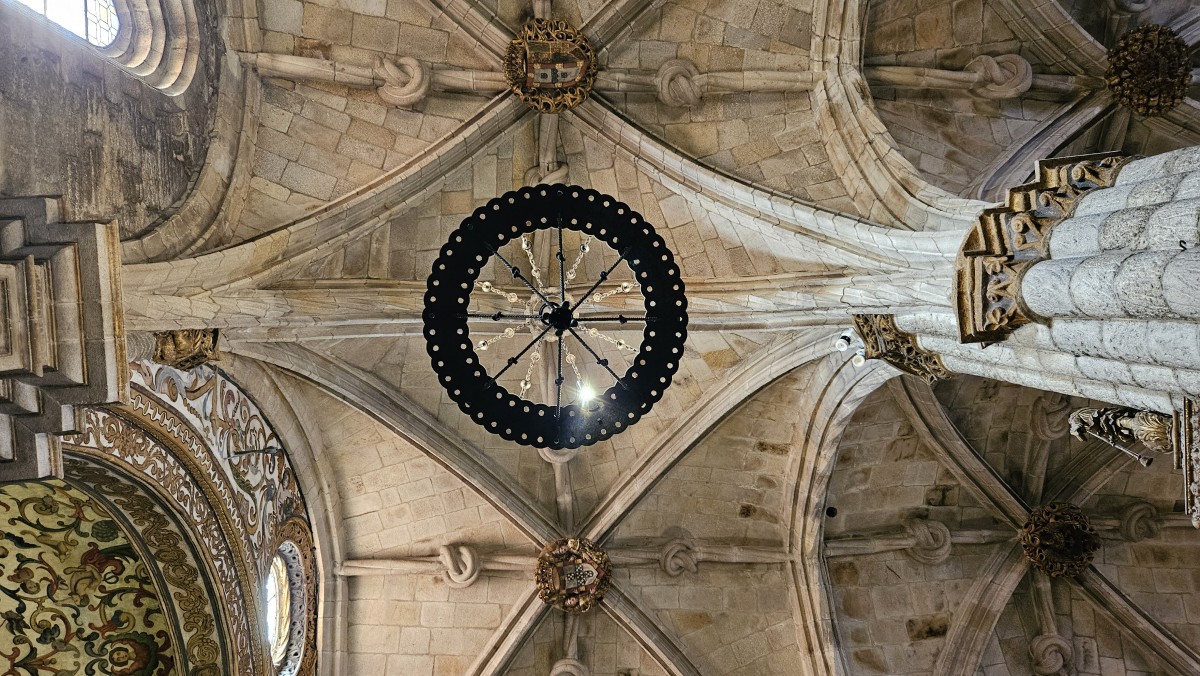
- The cloister is a peaceful inner courtyard with arches and columns, built in Renaissance style in 1539. Designed by Francesco from Cremona, it radiates the harmony of Italian architecture: symmetry, light, serenity — an ideal place for quiet reflection or a gentle stroll.
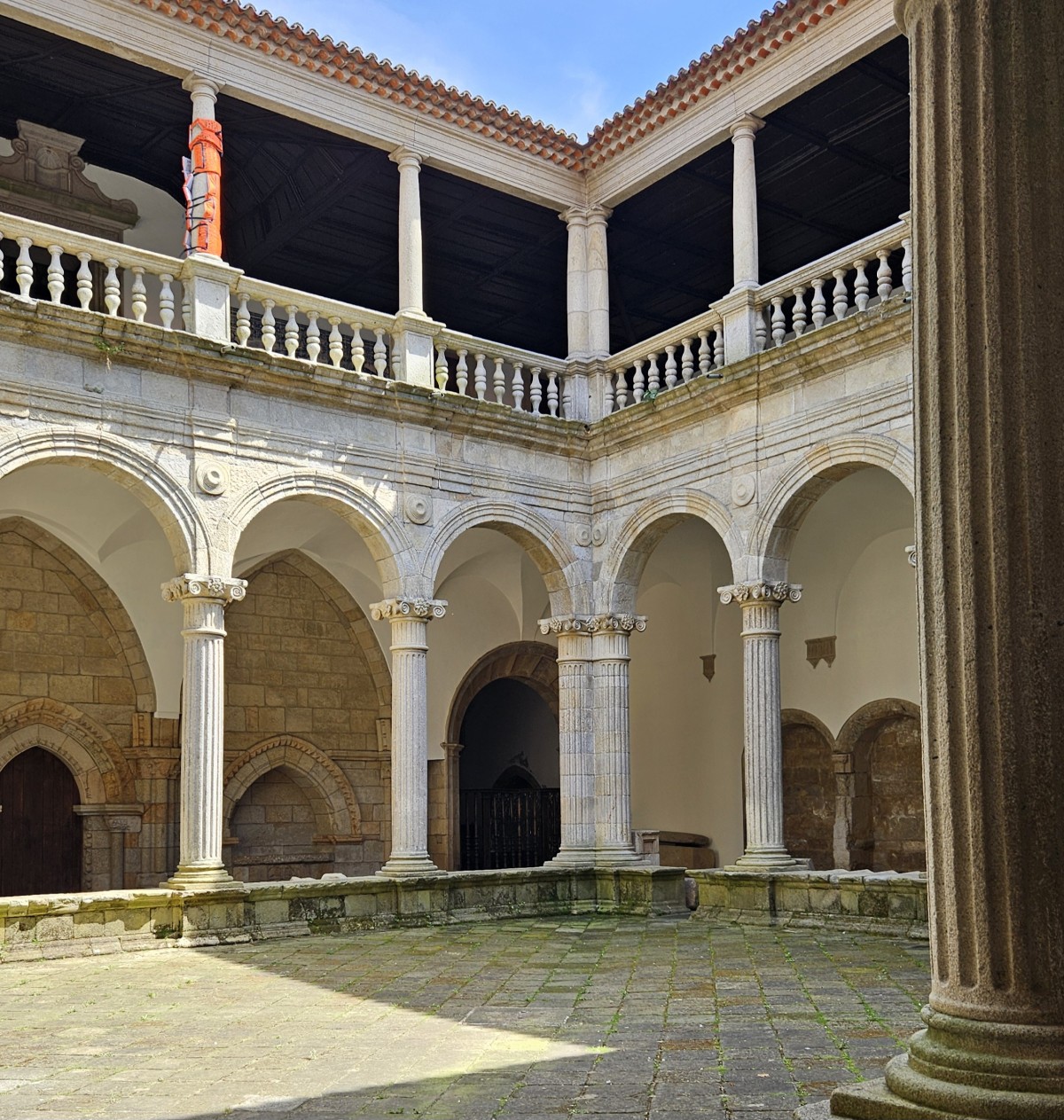
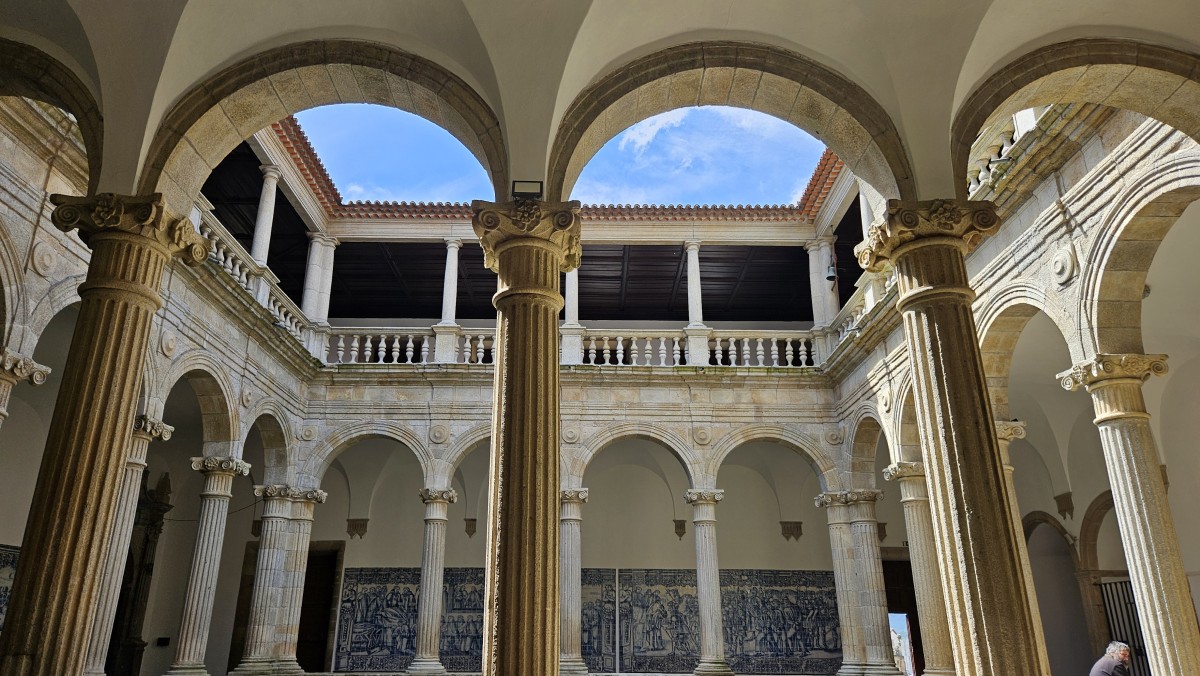
- The façade and towers were redesigned in Mannerist style after the 1635 storm that destroyed the north tower and part of the front. Architect Juan Moreno rebuilt the structure with clean geometry and restrained, elegant details. Later, the façade was adorned with Gothic-style restored sculptures: the Virgin Mary, Saint Teotonius, and the Four Evangelists.
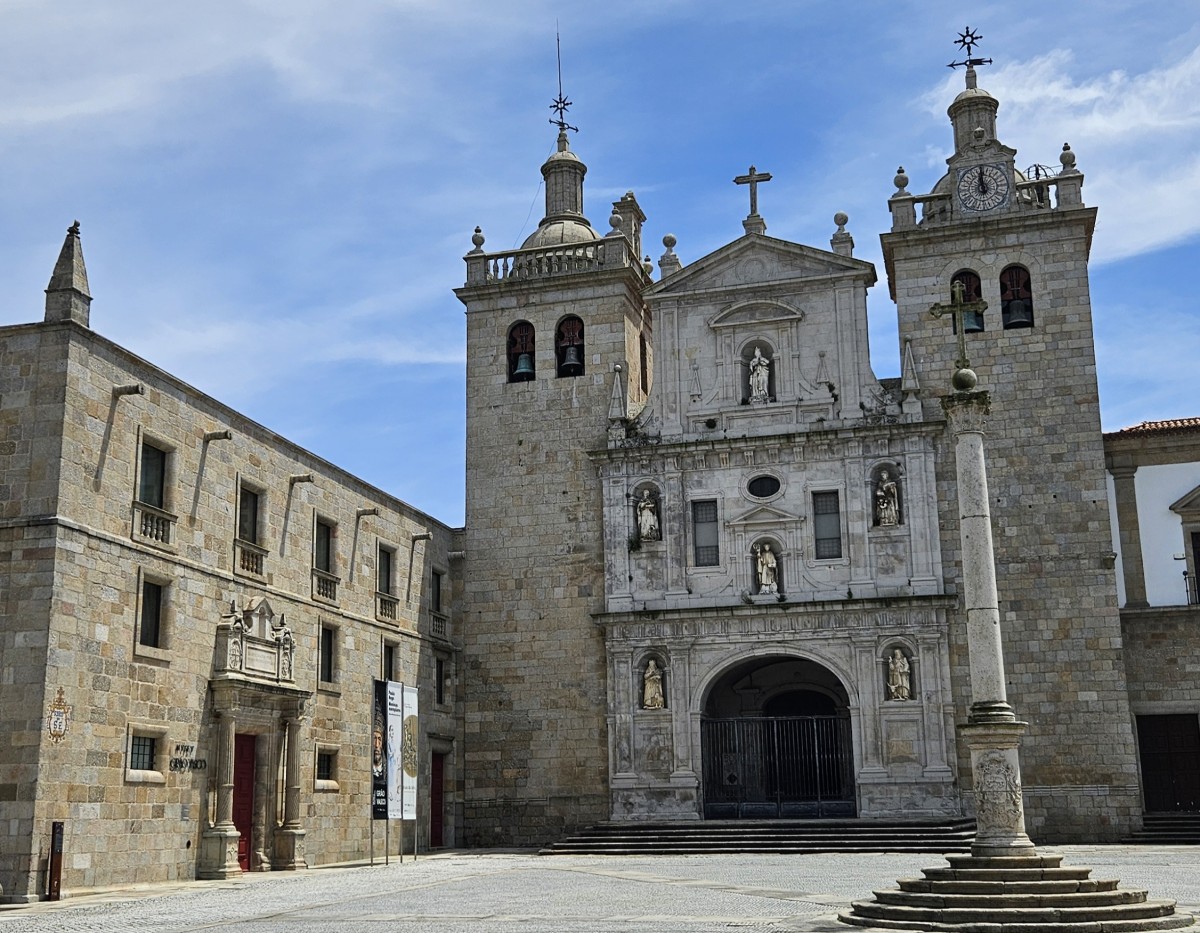
- The altar and interior decoration — a true celebration of Portuguese Baroque. Gilded woodwork, intricate carvings, lavish retables — all created between 1729 and 1733 by master Francisco Machado. Even today, it impresses with its opulence and radiance.
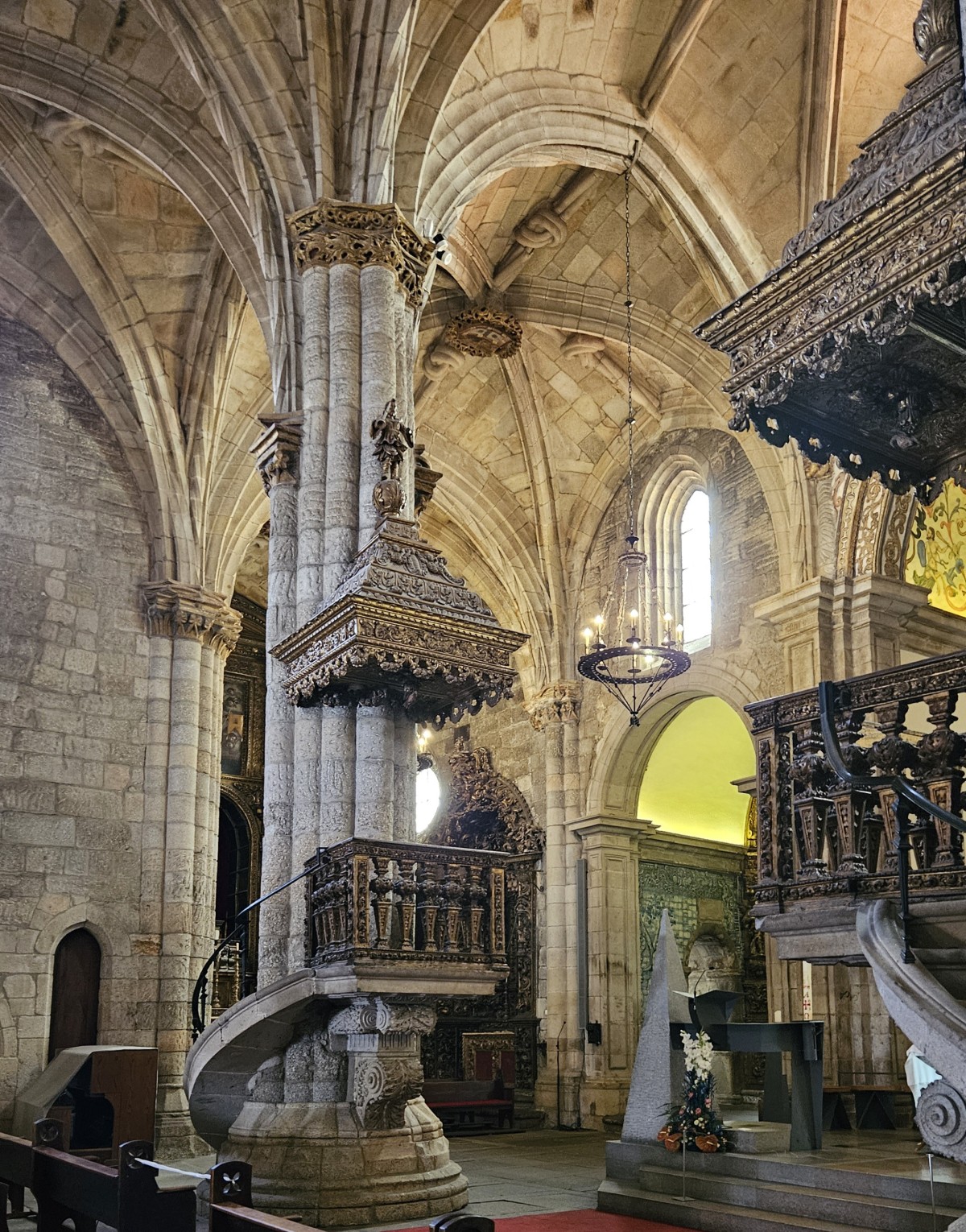
- Azulejos and frescoes: In the chapels and the upper cloister, historic tile panels and fresco compositions have been preserved — fine examples of traditional Portuguese ceramic art.
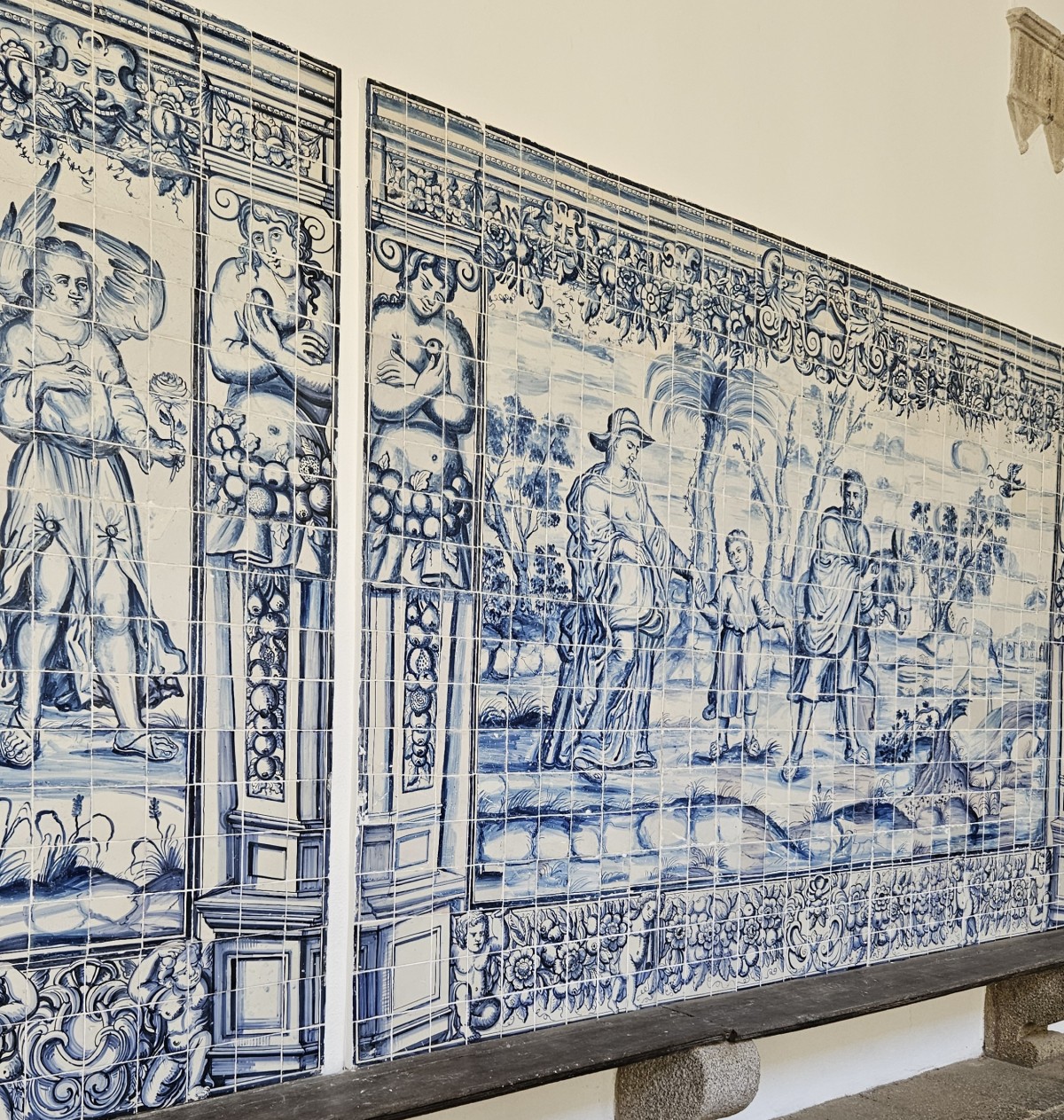
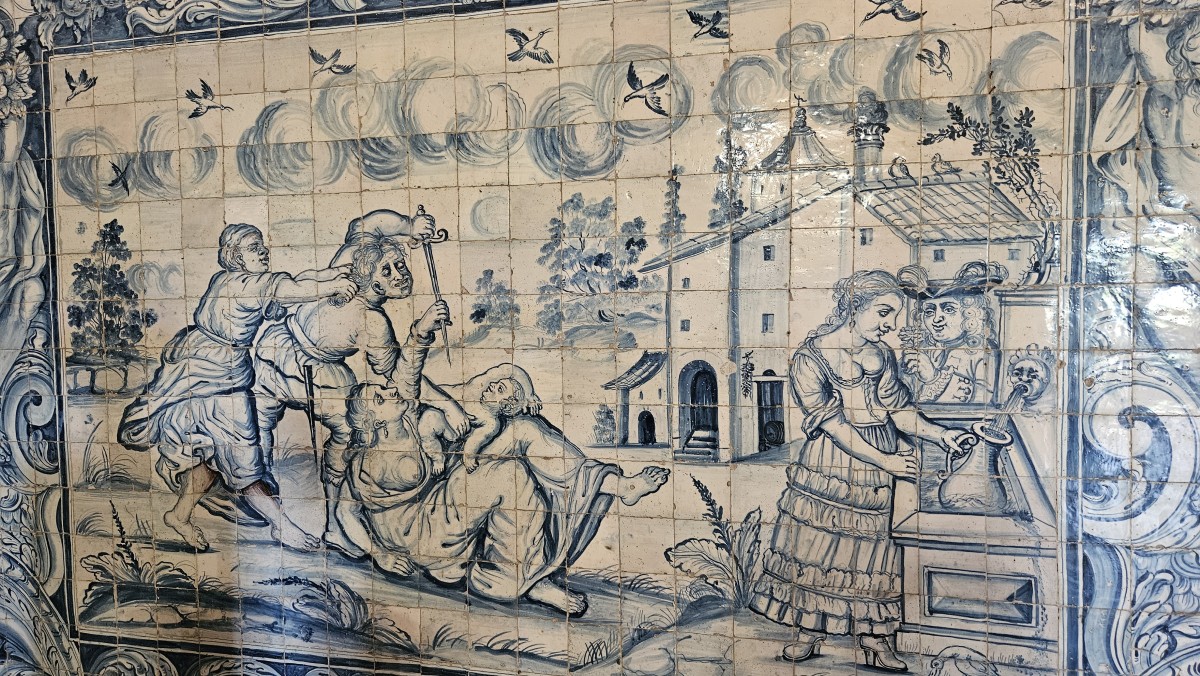
- Observation terraces offer panoramic views of Viseu — especially enchanting in the golden light of late afternoon.
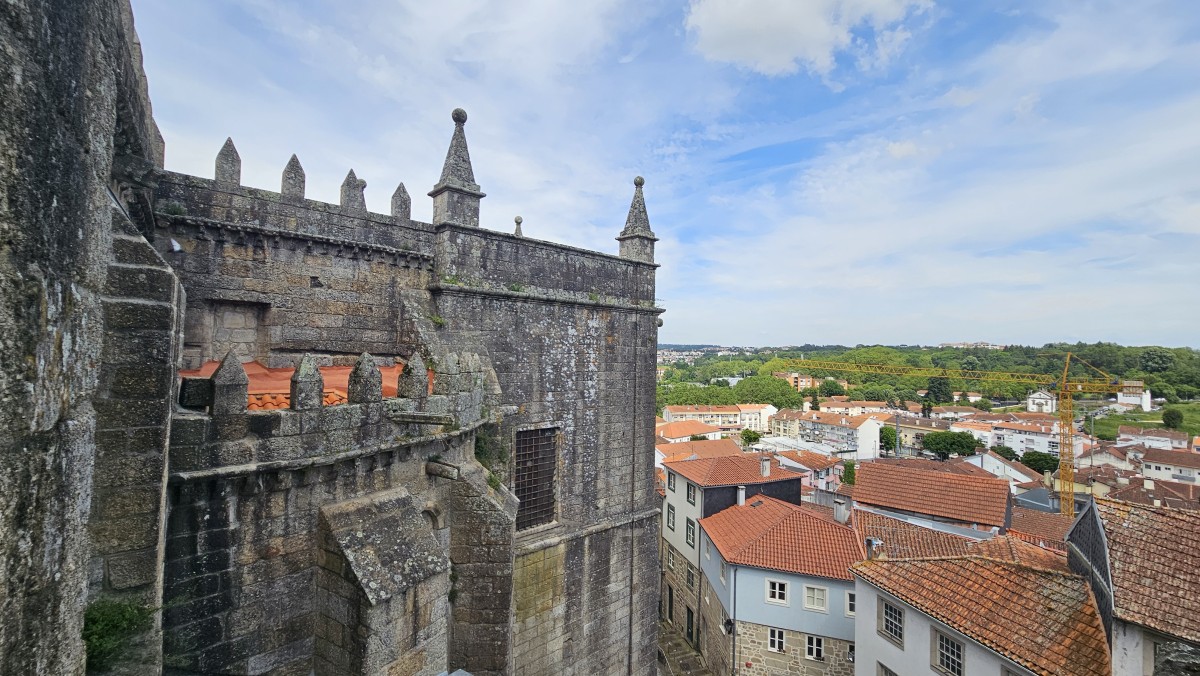
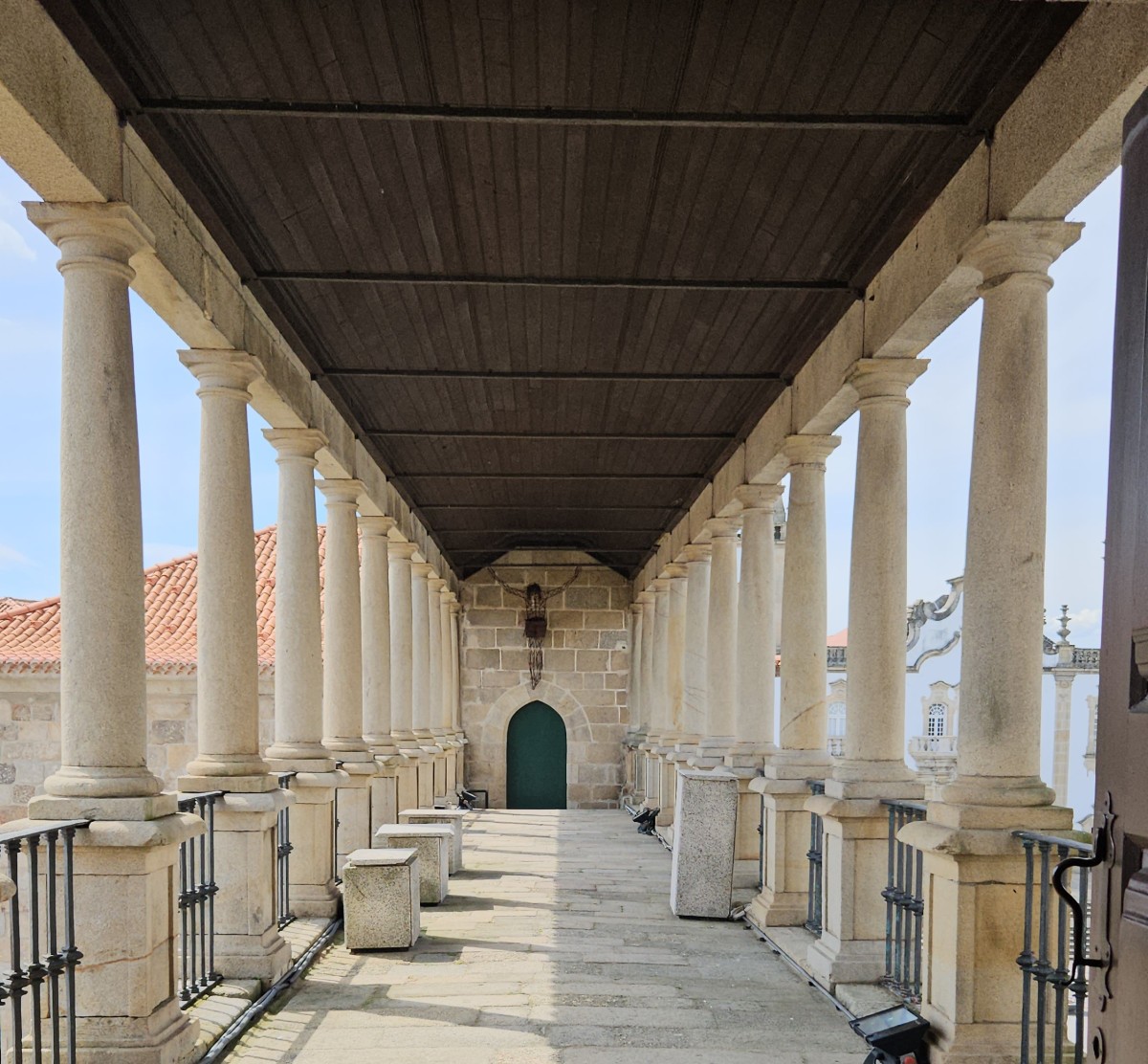
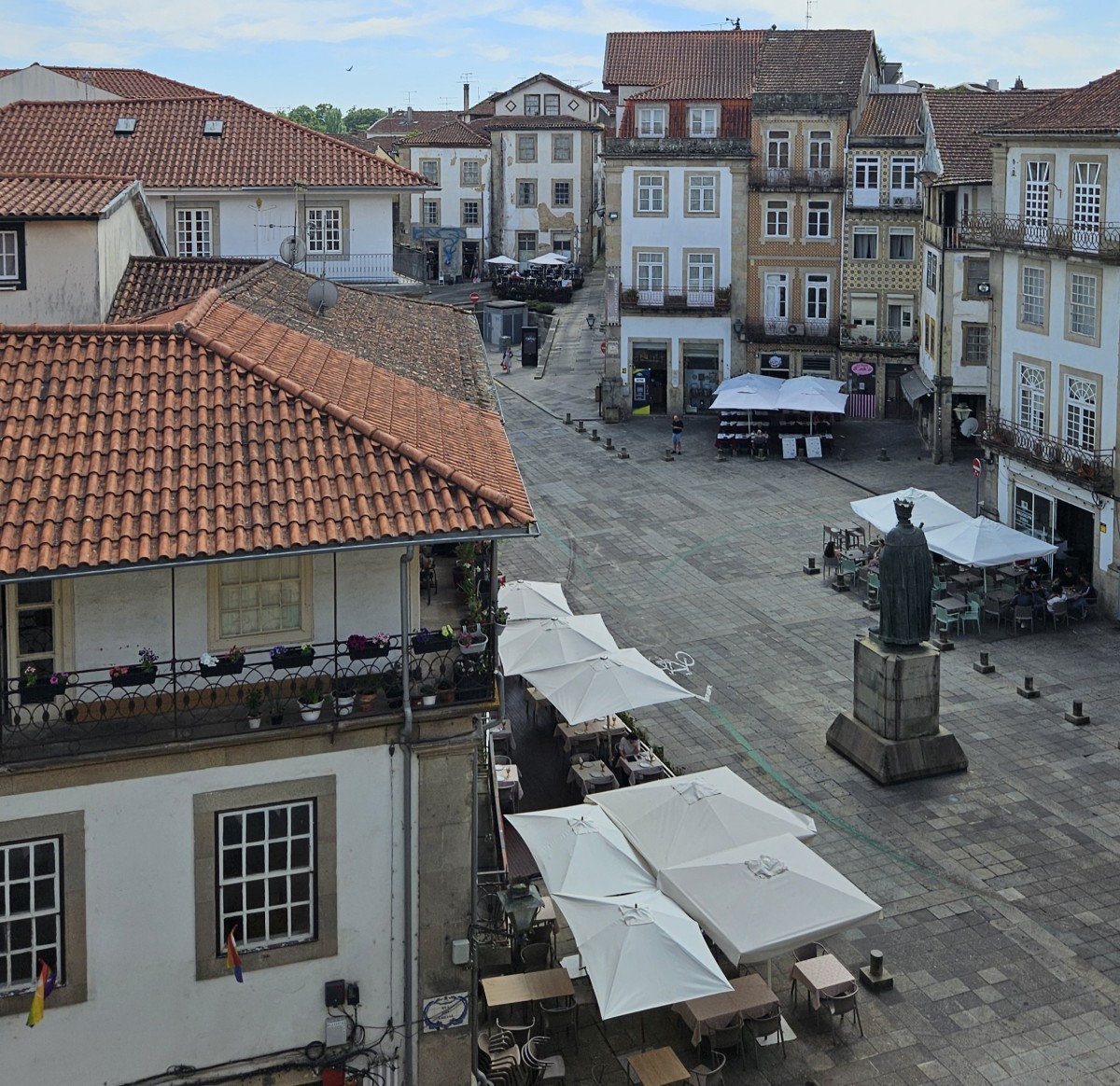
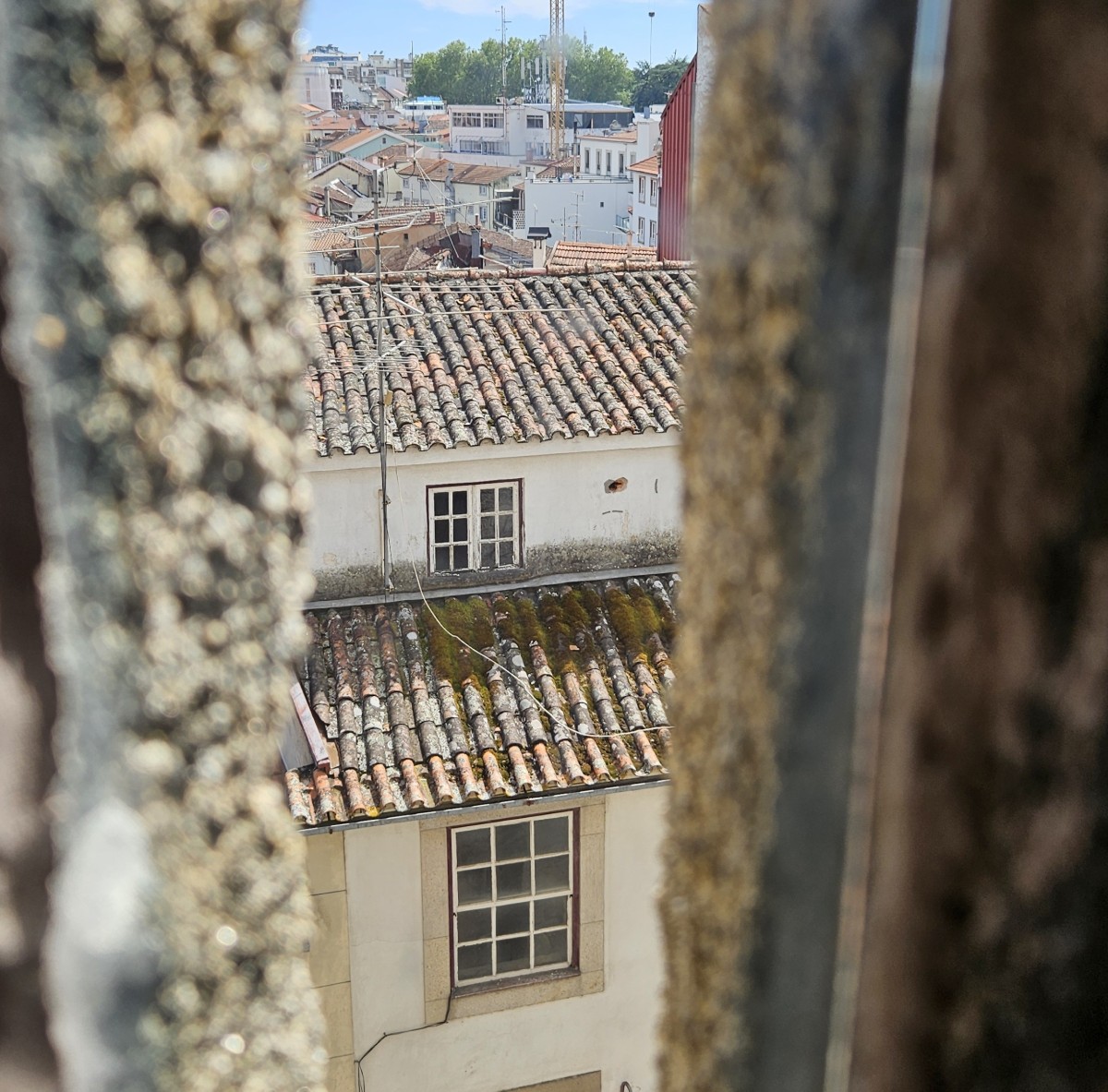
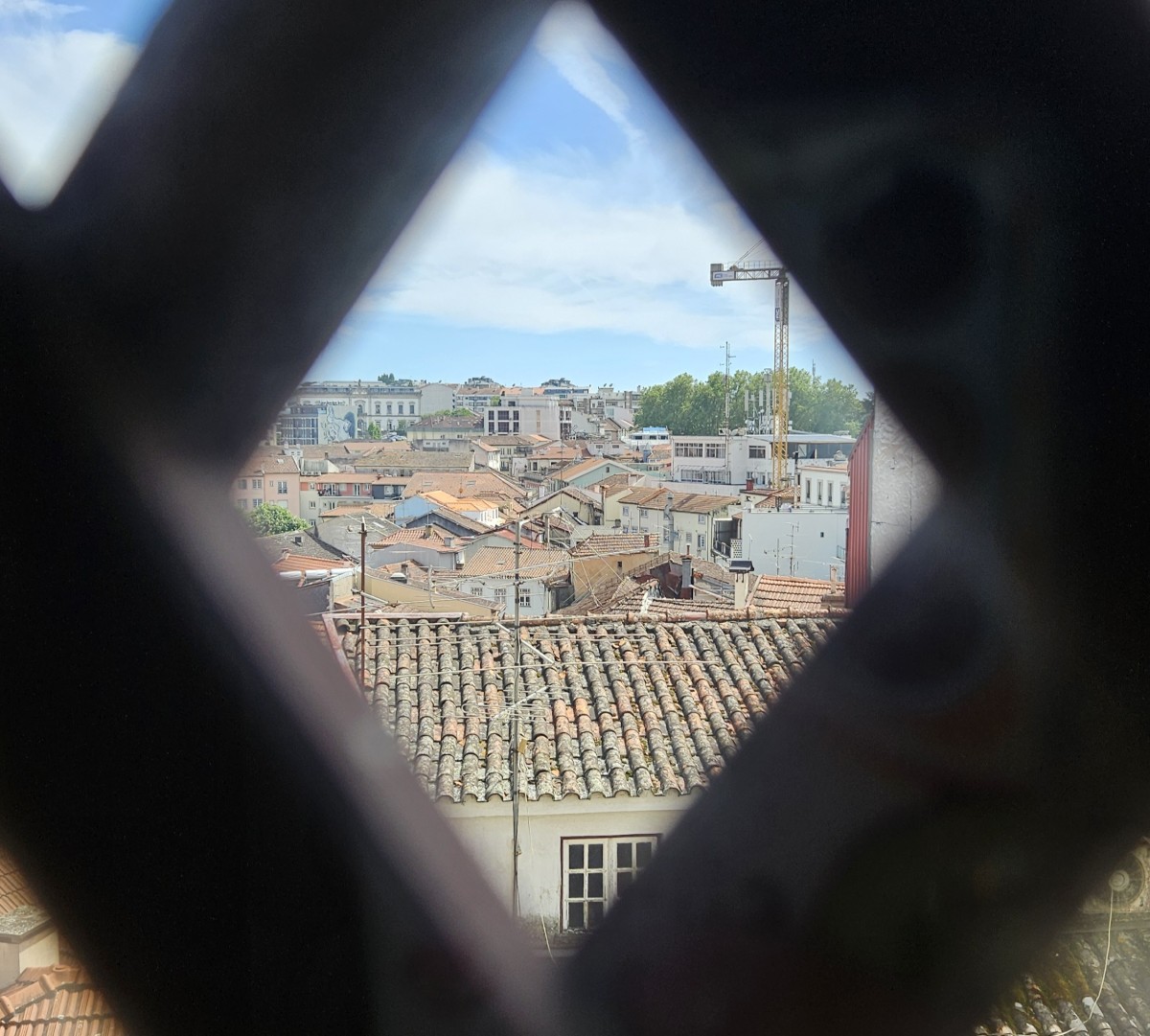
Entrance to the cathedral itself is free, while access to the museum and second-floor viewpoints comes at a symbolic price: €2.5 (free for children).
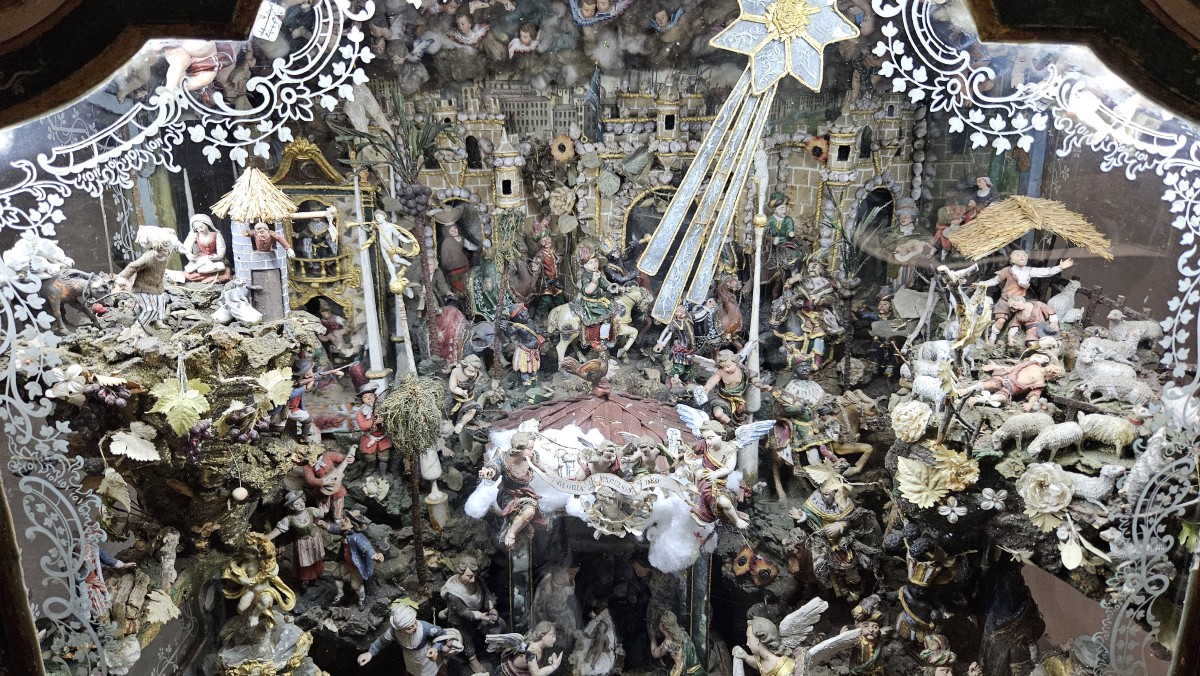
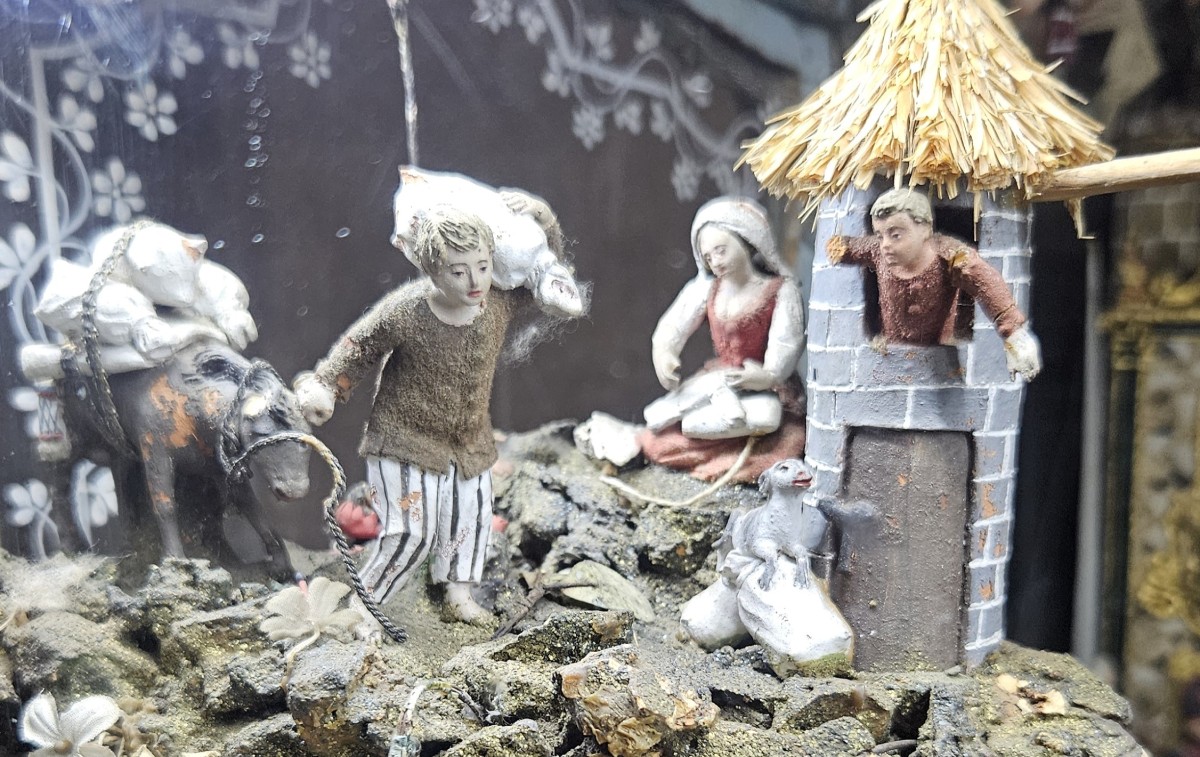
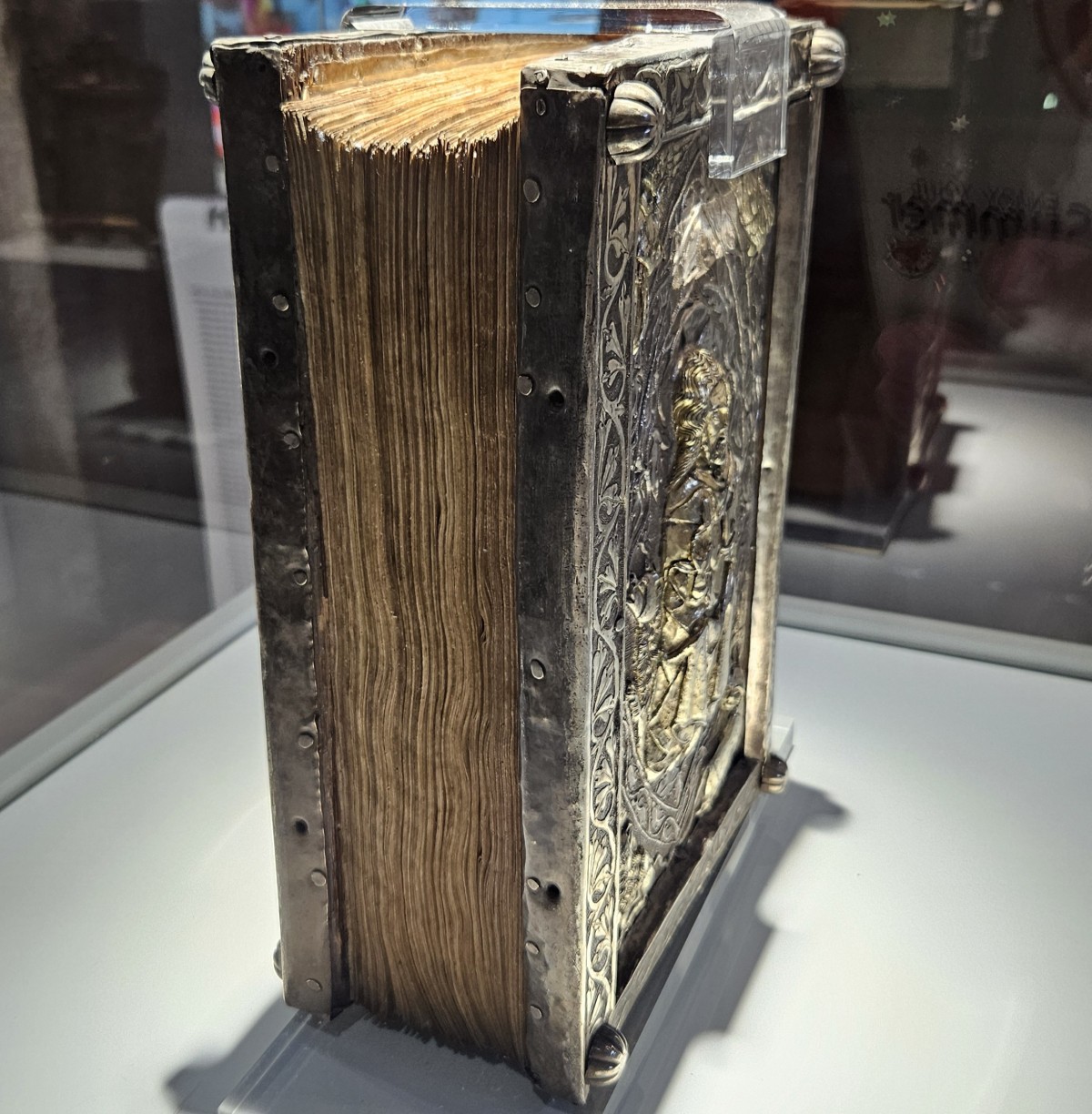
The cathedral was officially consecrated in 1516 — and in 2016, the 500th anniversary of this event was celebrated. The occasion was marked with large-scale festivities, attended by archbishops, bishops, Vatican envoys, and featured exhibitions, services, concerts, and solemn liturgies.
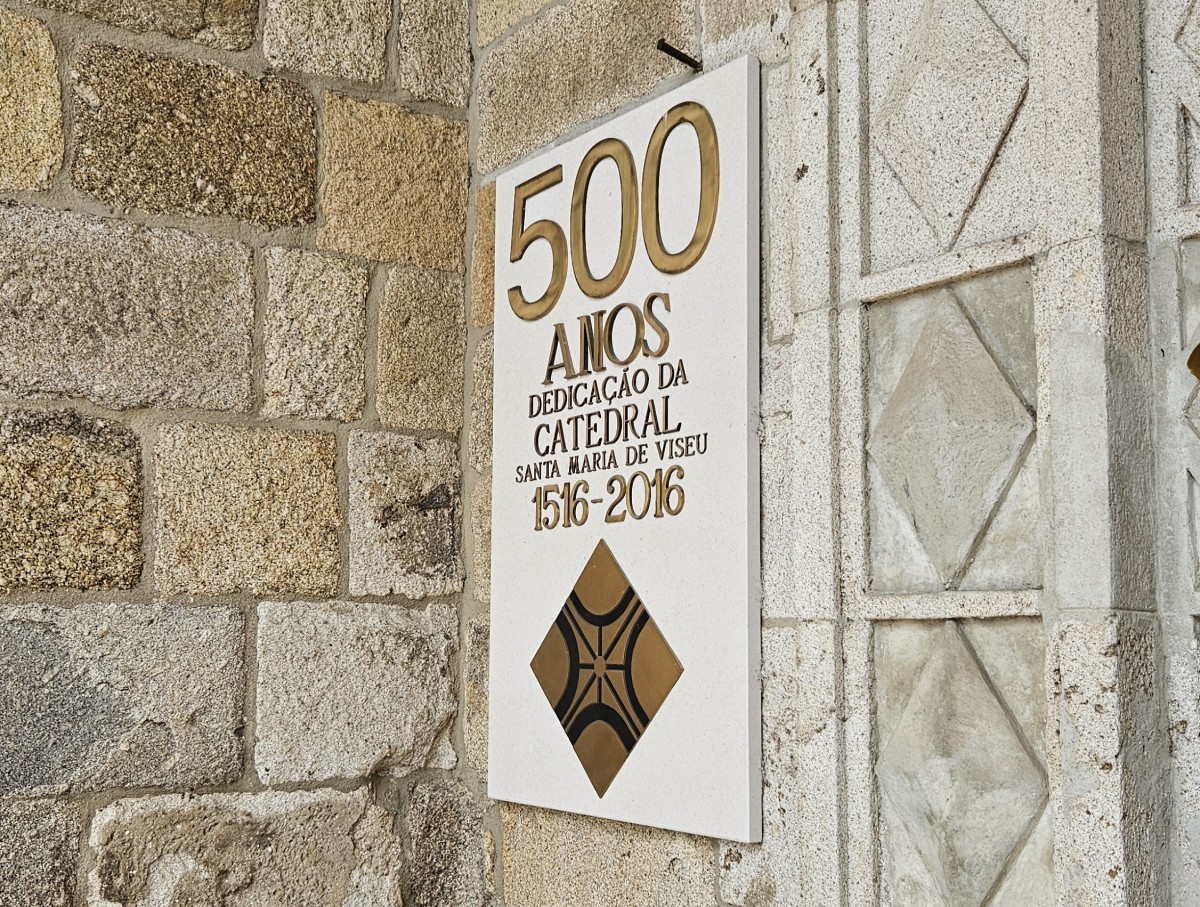
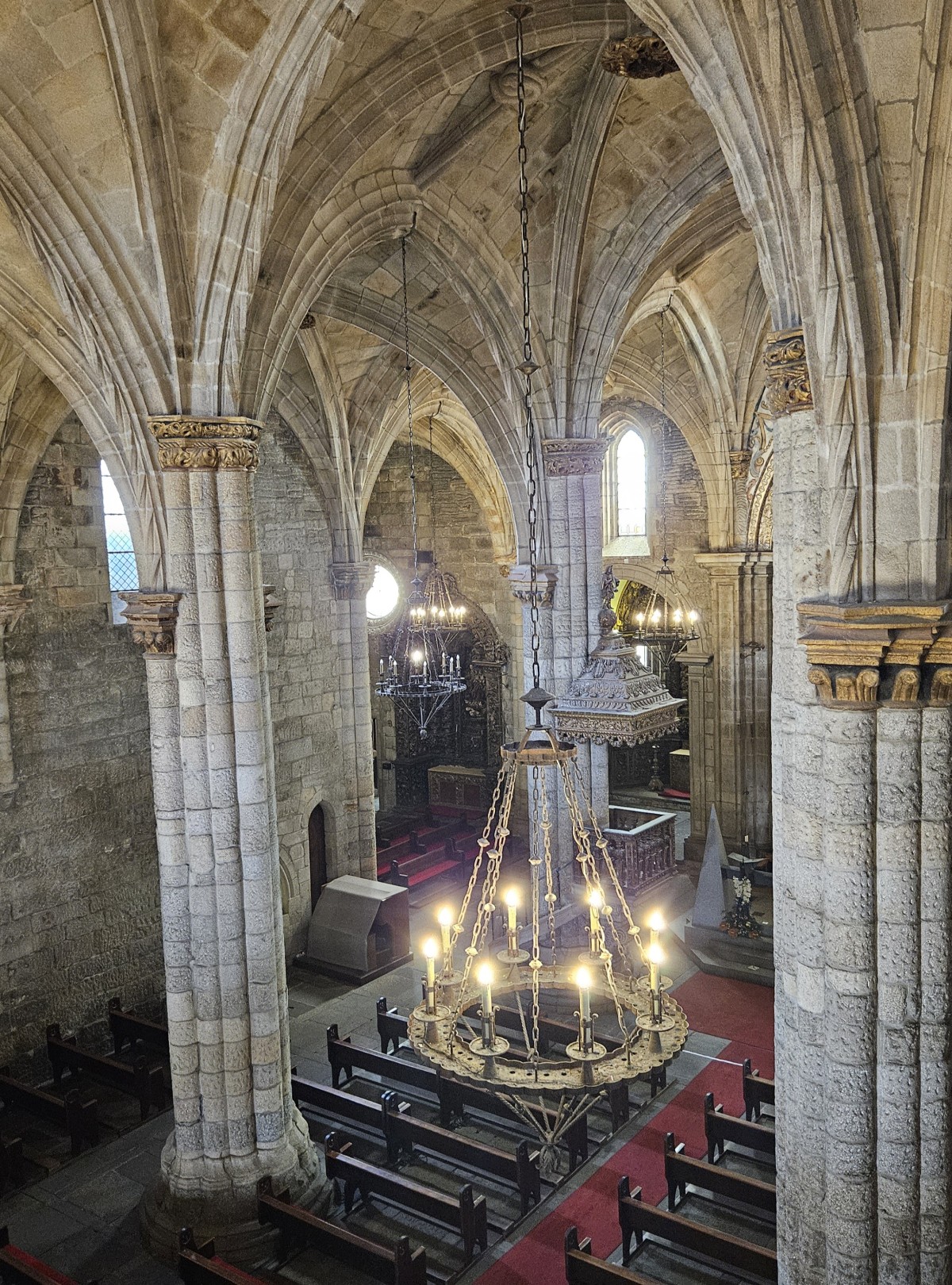
The cathedral is regularly restored with support from the local community and authorities.
- The first phase of restoration works received a grant of €1.2 million.
- Since November 2023, an additional €1.45 million was allocated.
Local residents are actively involved in restoration debates. For instance, they opposed the use of zinc gutters that did not match the historic appearance of the building. The city council listened and agreed to replace them with more authentic materials.
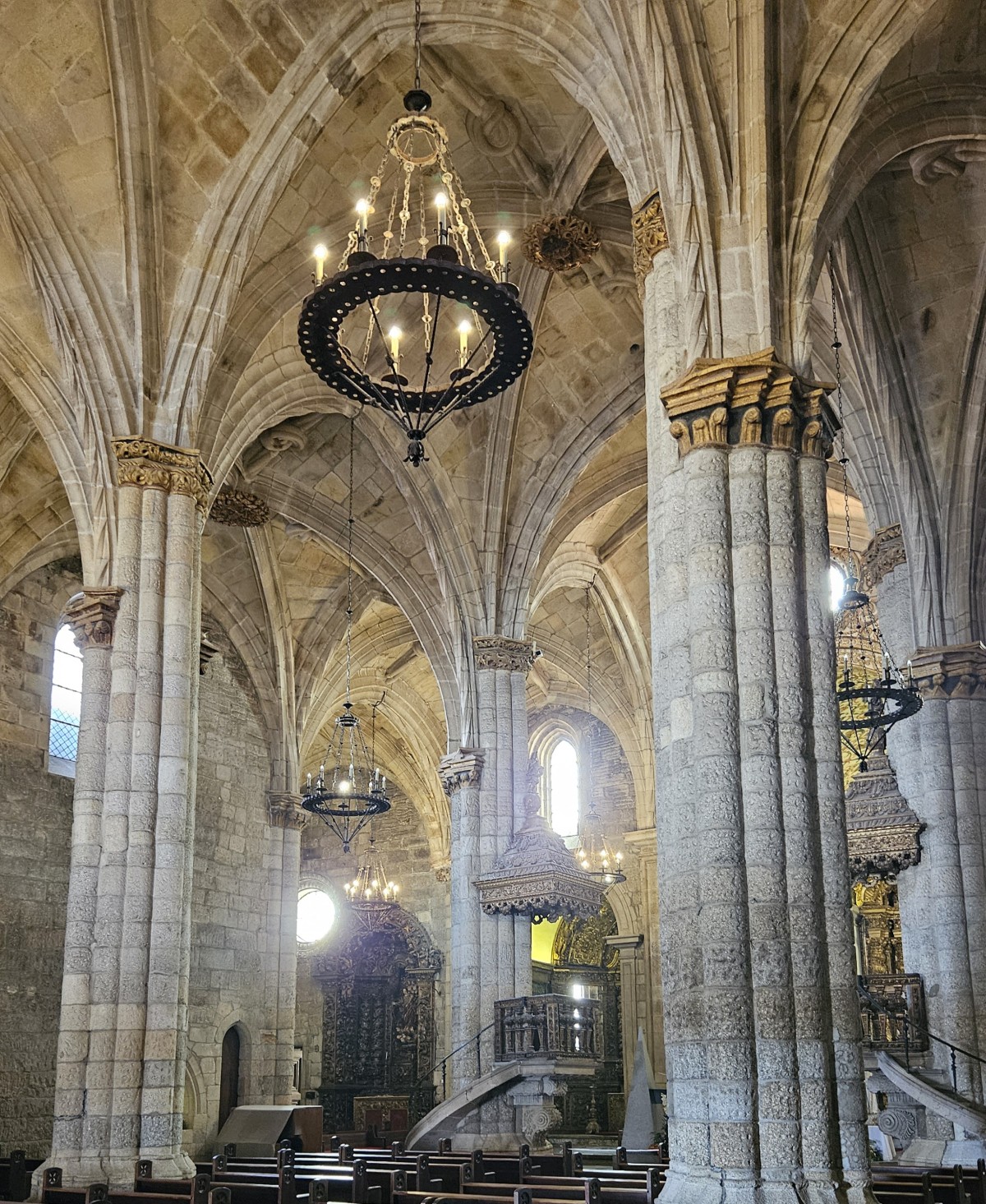
The Legend of João Torto’s First Flight
According to legend, in 1540 João Torto made the first recorded attempt at human flight — jumping from the bell tower of Viseu Cathedral with a homemade flying device.
As the story goes, João managed to construct a primitive flying machine — something resembling wings made of fabric, wood, and leather, strapped to his arms and torso. He publicly announced he would perform the first-ever human flight from one of the towers of Sé de Viseu. A crowd gathered in the square below — some excited, others skeptical.
Legend says that João indeed climbed the tower and jumped. For a few seconds, the device held; his wings caught the wind, and it seemed like he was floating in the air. But the miracle didn’t last — the contraption collapsed, and João crashed to the ground in front of the horrified crowd.
His death became a local tragedy, spawning myths and folklore. There are no official records confirming the event, but the story has been passed down for generations and has become part of Viseu’s cultural identity.
Today, João Torto is regarded as a Portuguese precursor to Leonardo da Vinci and Otto Lilienthal — a dreamer ahead of his time. His name lives on in streets, cafés, aeromodelling clubs, and even in an old school of aeronautics.
The tale of João Torto is a romantic legend of a sky-chaser, whose madness and ambition made him a permanent figure in Portuguese mythology. It captures the spirit of the Renaissance and the age-old dream of human flight — long before the Wright brothers ever took off.
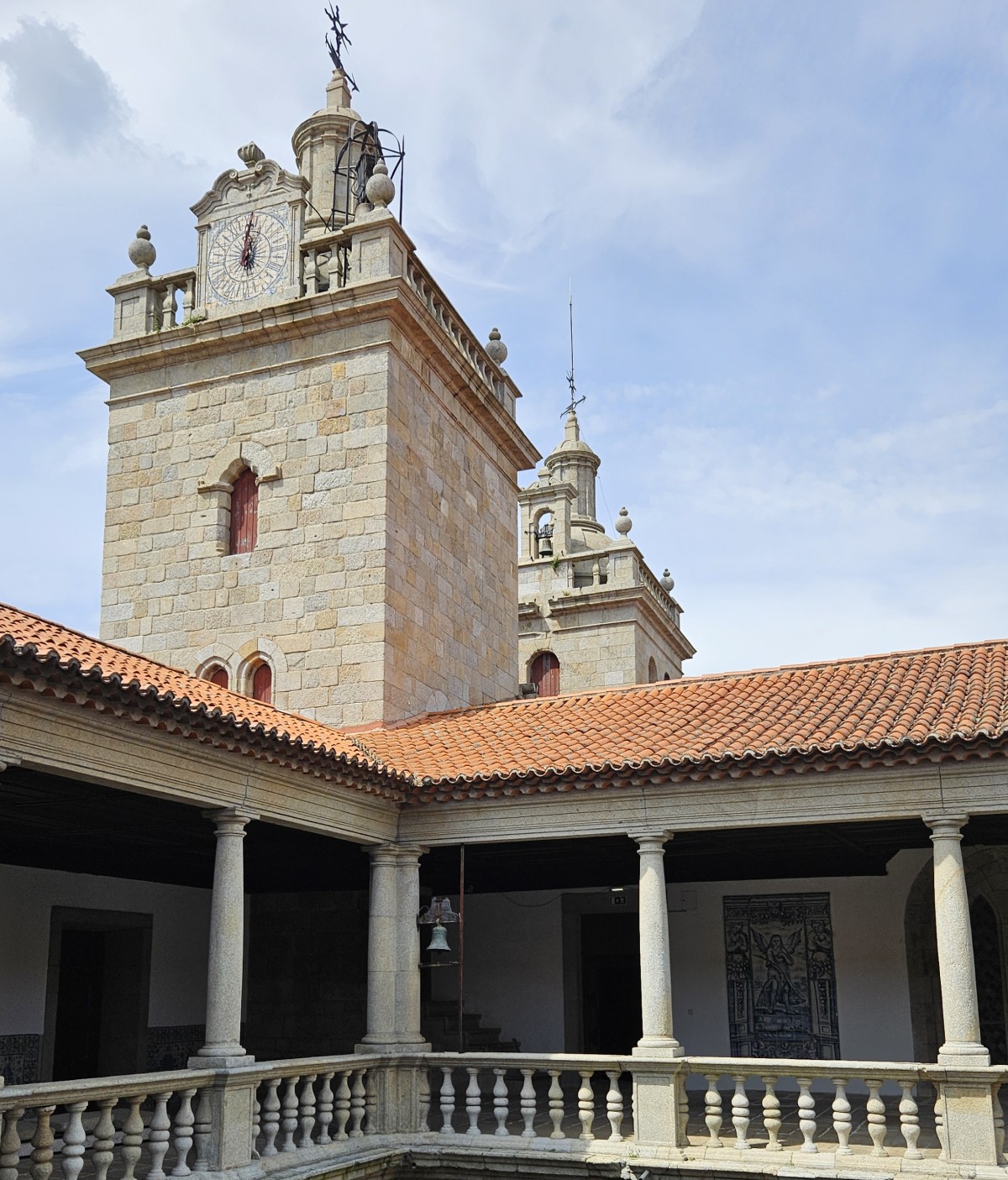
Museu Nacional Grão Vasco
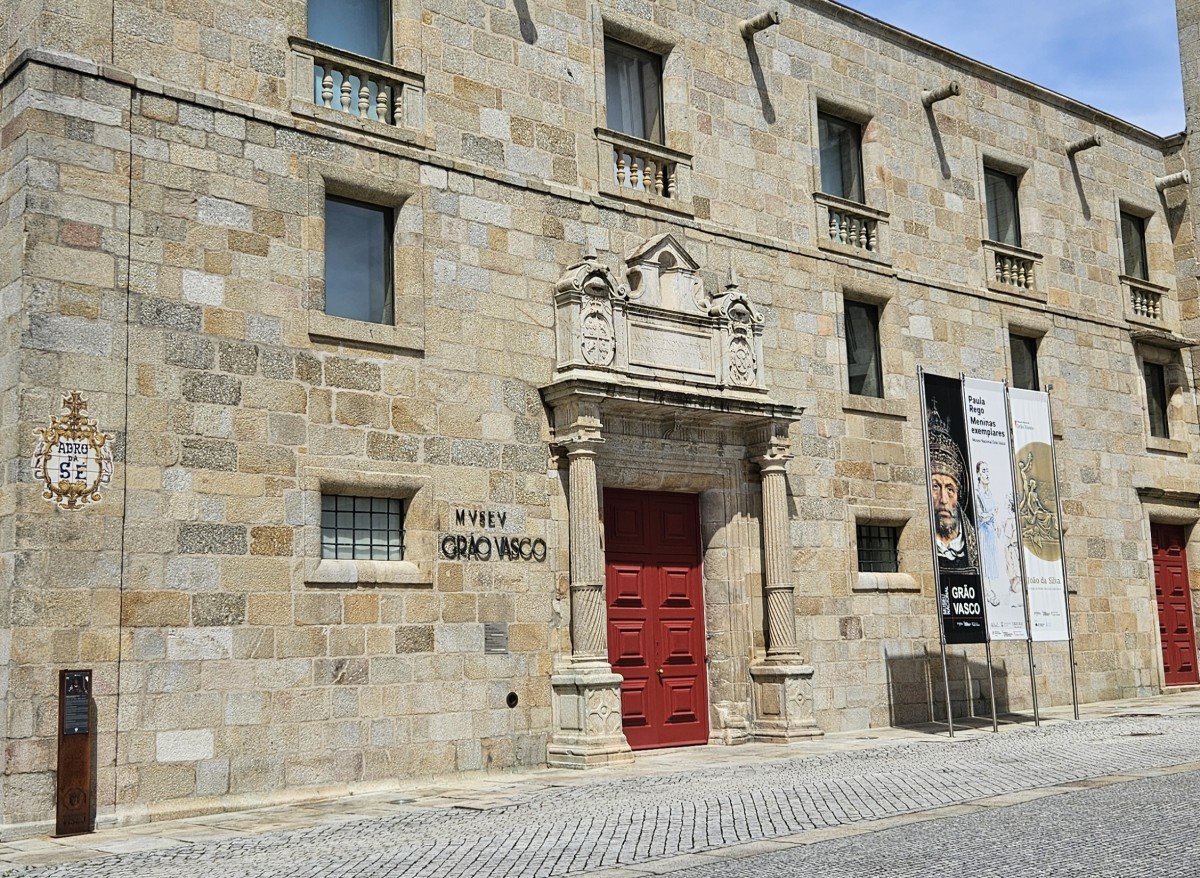
Just to the left of the cathedral entrance stands the National Museum Grão Vasco (Museu Nacional Grão Vasco). It occupies a historic building — the former Bishop’s Seminary of Viseu (Paço dos Três Escalões), built in the 16th–17th centuries.
This museum is an integral part of the Sé Cathedral complex, known as Adro da Sé — it is architecturally connected to the cathedral itself and even shares internal access points. In the past, this space was used to train clergy, house bishops, and store sacred church relics.
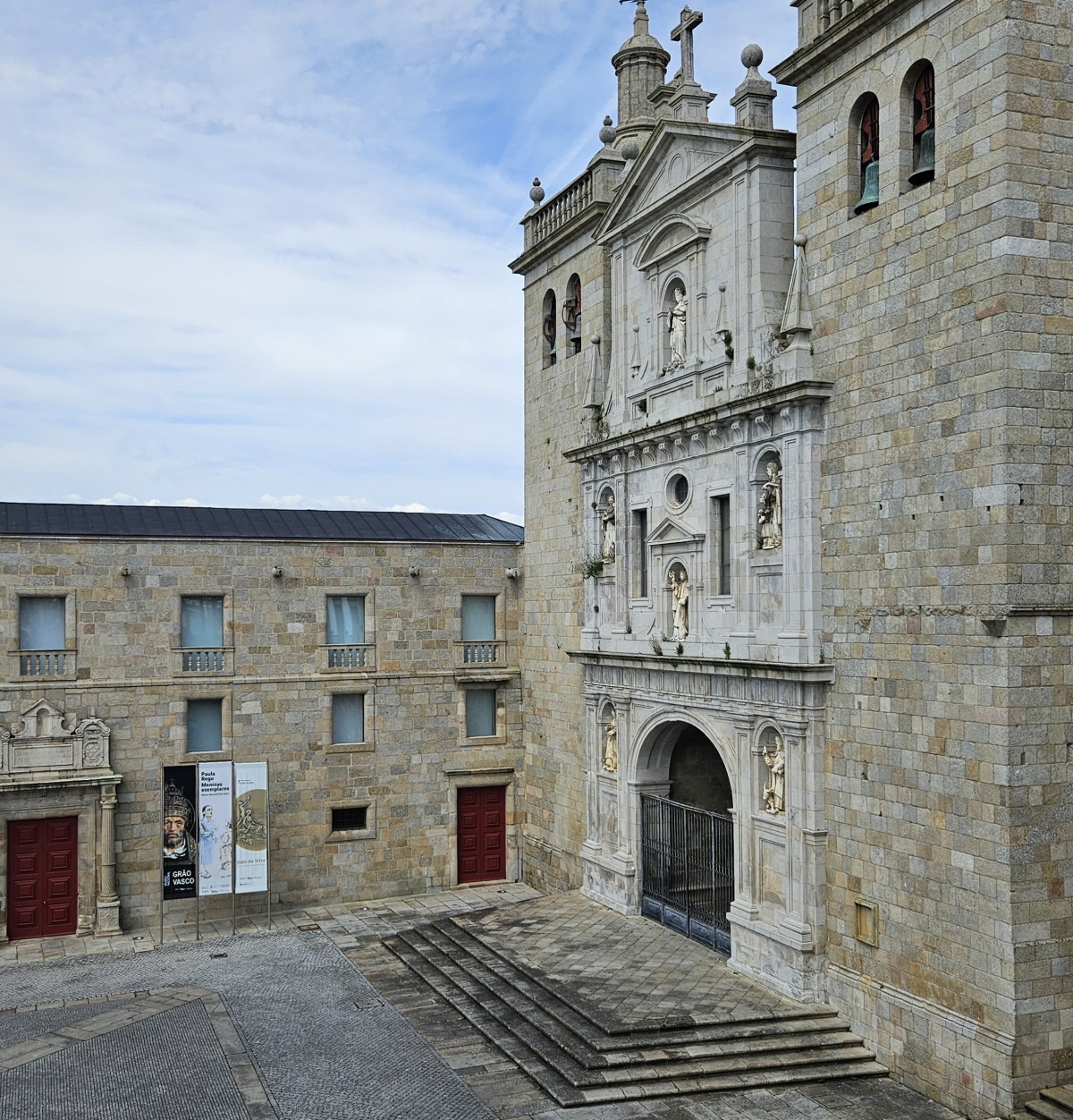
Grão Vasco was one of the most celebrated painters of the Portuguese Renaissance.
He was born in Viseu and later worked at the royal court in Lisbon.
He was the chief painter of the cathedral and is best known for creating the famous altarpiece polyptych that originally adorned the church and has been preserved in the museum since the 17th century.
The museum's main collection features Biblical scenes, portraits of saints, the Virgin Mary, John the Baptist, and other works of striking realism and spiritual depth.
The building was restored in the early 21st century, blending historical architecture with modern minimalism: bright galleries, glass partitions, and clean design.
The restoration and new exhibition project was designed by renowned Portuguese architect Eduardo Souto de Moura — a Pritzker Prize laureate.
This is considered one of the best fine art museums in Portugal outside Lisbon and Porto, officially recognized at the national level.
The museum is open until 18:00, with last entry at 17:30.
There is a lunch break from 13:00 to 14:00.
Tickets can also be purchased at the cathedral.
We left the cathedral around 16:00 and were already quite hungry, so we went to get a snack first. Returning didn’t make sense, as the museum was about to close, and we wouldn’t have had time to explore it. Maybe next time.
Informational brochures about the museum are available at the entrance to the cathedral. If you have the time — definitely pay it a visit. Even in photos, the museum looks impressive, and I’m sure it’s even more stunning in person. It’s a great way to immerse yourself in the spirit of the Portuguese Renaissance and see original relics from the Sé Cathedral.
This is a cozy, underrated museum with a unique atmosphere and world-class works — an ideal follow-up to visiting the Sé Cathedral de Viseu. Many exhibits are deeply connected to the cathedral’s history: here you’ll find works created specifically for its altars, including the large Grão Vasco polyptych.
Igreja da Misericórdia de Viseu
Directly across from the Sé Cathedral, on the same square, rises another remarkable landmark — the Baroque Church of Misericórdia (Igreja da Misericórdia de Viseu).
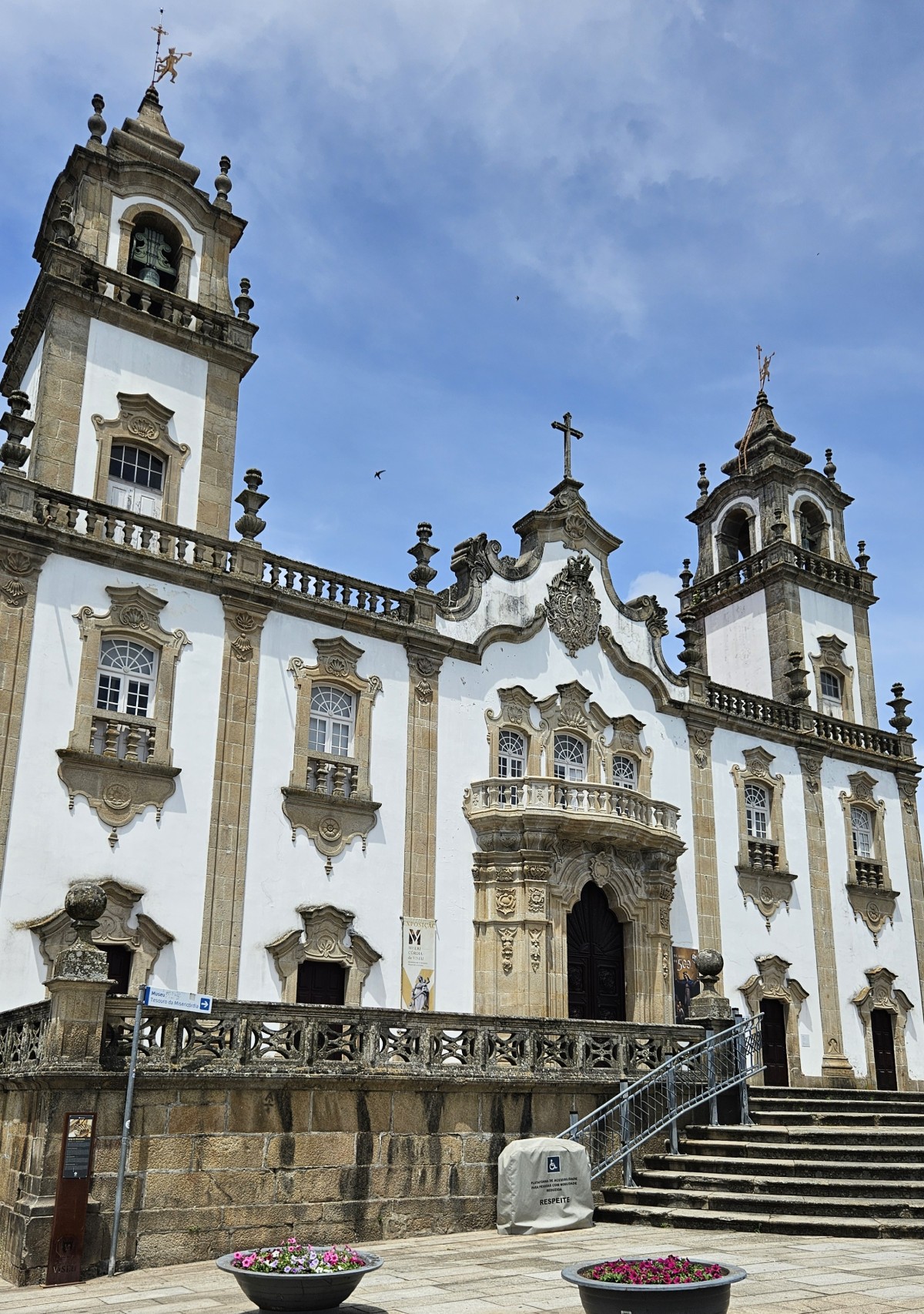
- 18th-century Baroque church, built between 1775–1785, long after the cathedral was completed
- Stands out with its bright façade, twin symmetrical bell towers, and carved entrance — a striking contrast to the massive granite cathedral opposite
- Belongs to the Catholic Brotherhood of Misericórdia (Santa Casa da Misericórdia) — one of the oldest charitable organizations in Portugal
(Fun fact: They hold a monopoly on the national lottery, and all profits go toward restoring historic buildings and providing social aid) - Inside, you'll find a Baroque altar, gilded woodwork, and detailed carvings
- The Igreja da Misericórdia occasionally hosts temporary exhibitions and cultural events
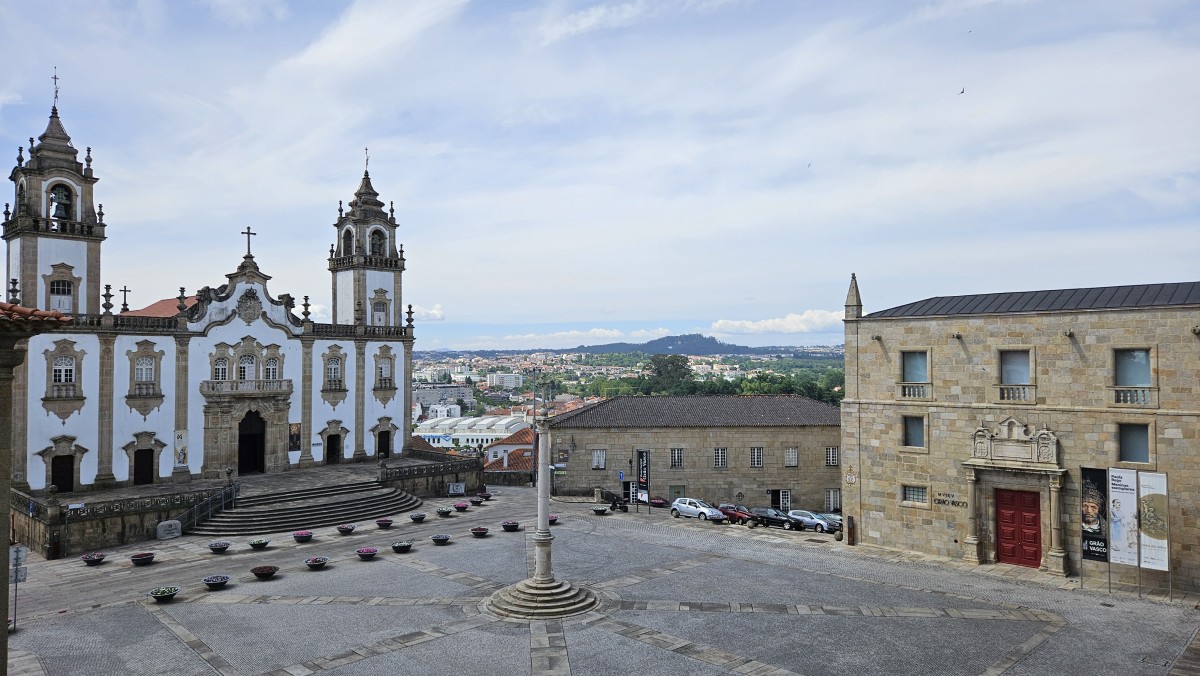
What Else to See in Viseu
Truth be told, we saw plenty of beautiful landmarks — churches, cathedrals, museums — many of which clearly carry history and character. But it’s impossible to see it all in a short visit to a city built over centuries. On trips like this, we always go for depth over quantity: it’s far more rewarding to immerse yourself in a few places deeply, to feel the essence of the era, than to rush through a checklist of “must-sees” that won’t have time to whisper their stories to you.
If we ever return to Viseu, there are a few more places I’d love to explore (in addition to those already mentioned above):
- Casa do Miradouro — a small 16th-century palace housing a sculpture exhibition by António dos Santos. The building itself is a prime example of Renaissance architecture, and there’s a scenic viewpoint overlooking the city. It’s located just a short walk from the cathedral. (We almost made it, but not quite)
- Porta do Soar de Cima — 14th-century medieval city gate, one of the last remaining pieces of the old defensive wall. We passed nearby but didn’t notice it at the time — we only found out later, and by then it was too late to go back. Definitely stopping here next time for a closer look. There’s also a small museum next to it that seems worth visiting.
- Largo da Feira de São Mateus Square (across from the shopping mall area) — a spacious square that truly comes to life during festive seasons. It would be lovely to visit around Christmas, New Year’s, or during one of the city’s local festivals — the decorations change each time, creating a magical vibe. This square is best known for hosting the Feira de São Mateus — one of the oldest annual fairs in Portugal, with over 600 years of tradition. The fair is more than a market — it’s a weeks-long festival filled with live music, street performances, fireworks, food stalls, and amusement rides. Held throughout August and September, it draws tens of thousands of visitors from all over the region. During this time, the square and nearby streets turn into a vibrant city of celebration, where the spirit of Viseu truly shines.
- Solar do Dão / Enoteca do Dão — the official wine center of the Dão region, offering wine tastings, insights into the history of winemaking in central Portugal, and the chance to buy bottles directly from the cellar. I believe we saw brochures for this place at the hotel, and wine tasting tours could be booked right at the reception desk.
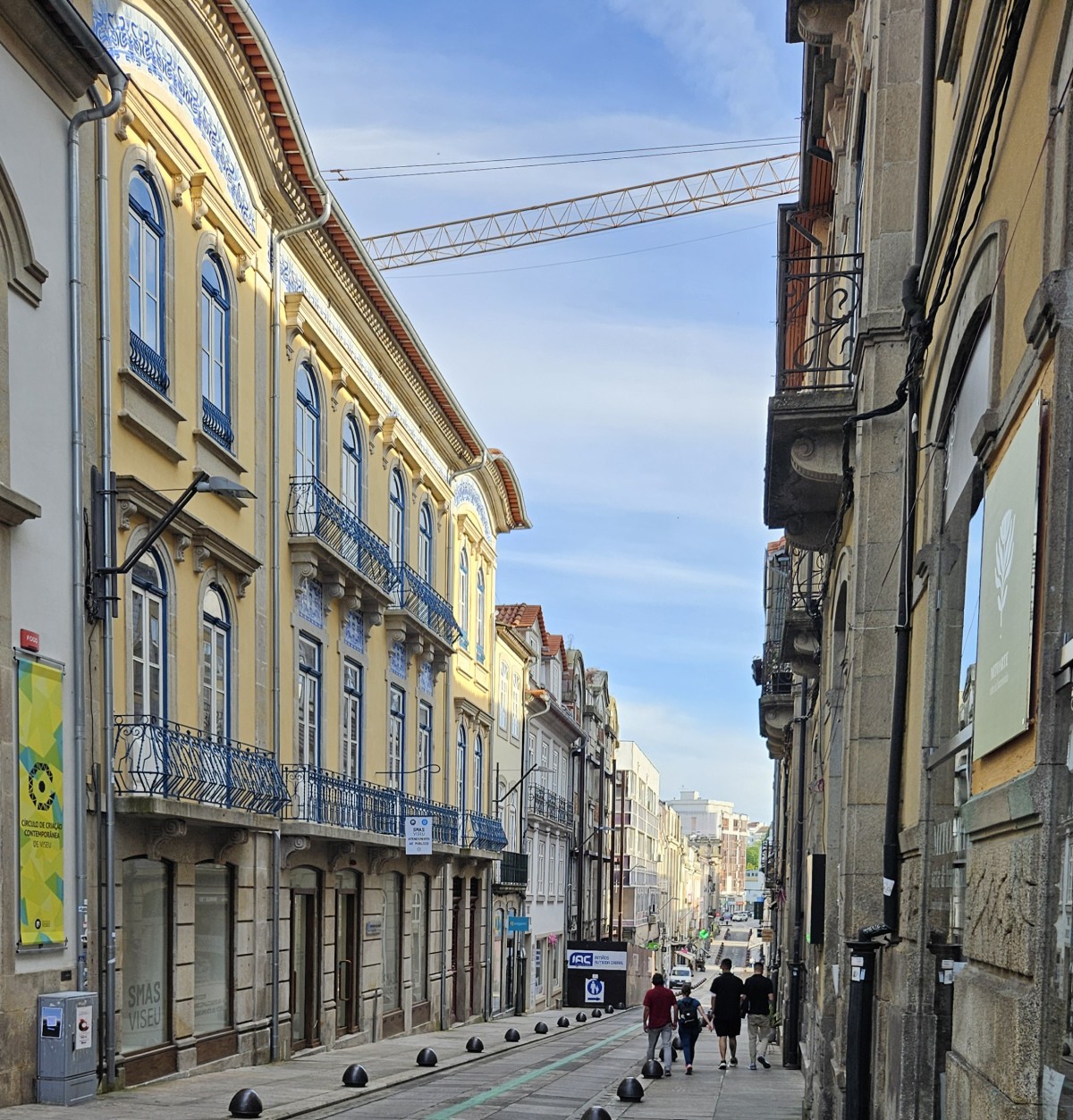
Speaking of visual aesthetics — Portugal is simply top-tier. Especially when compared to, say, Podgorica in Montenegro, where there’s not much to see beyond concrete and asphalt. Or Budva, which is practically drowning in crowds.
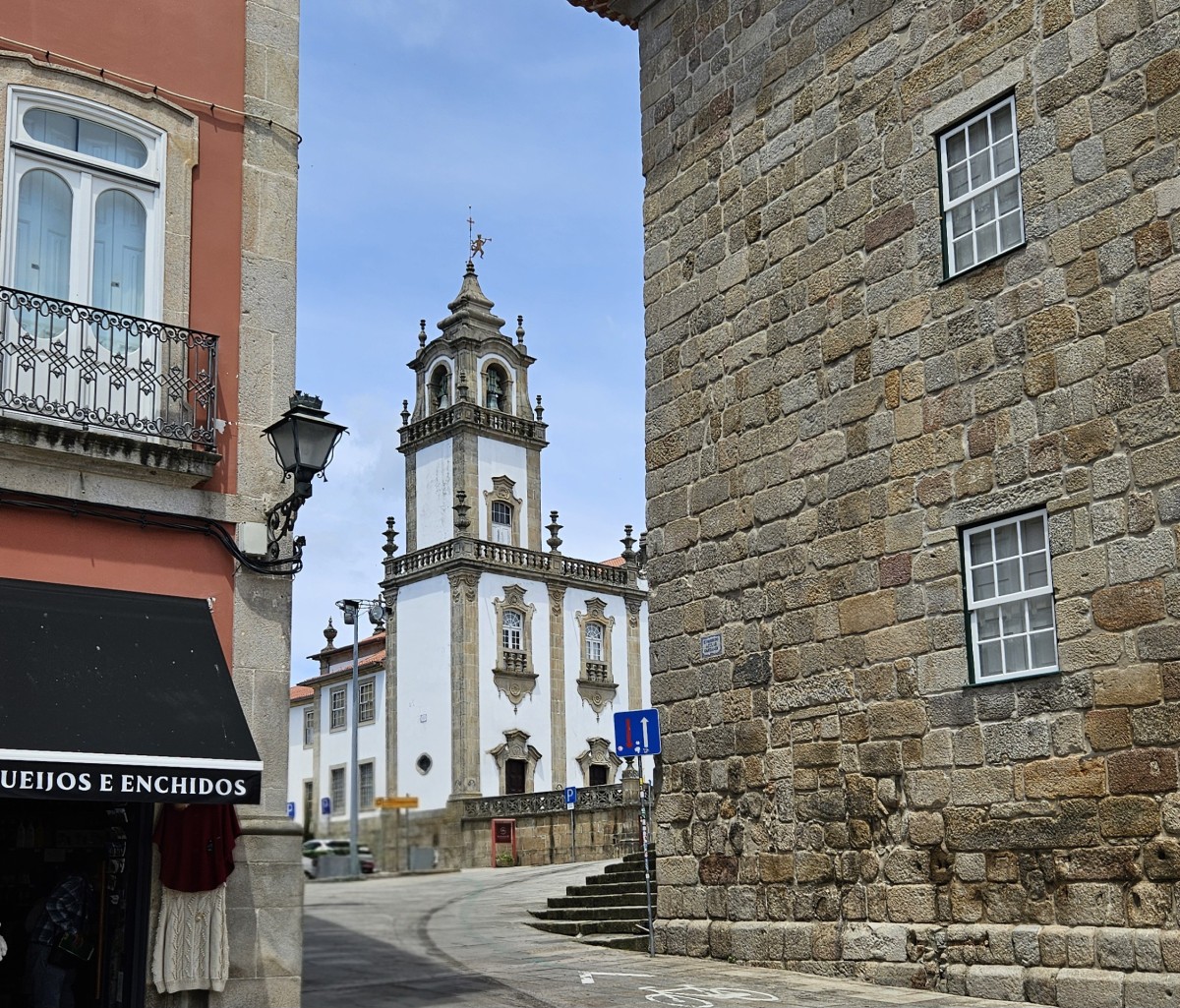
Viseu feels like a world apart — peaceful, atmospheric, full of architecture, greenery, stone, and air. It’s the kind of place where you simply want to breathe, look, and feel.
But here comes the problem: the eternal dilemma — where to go next? Because you want to see it all.
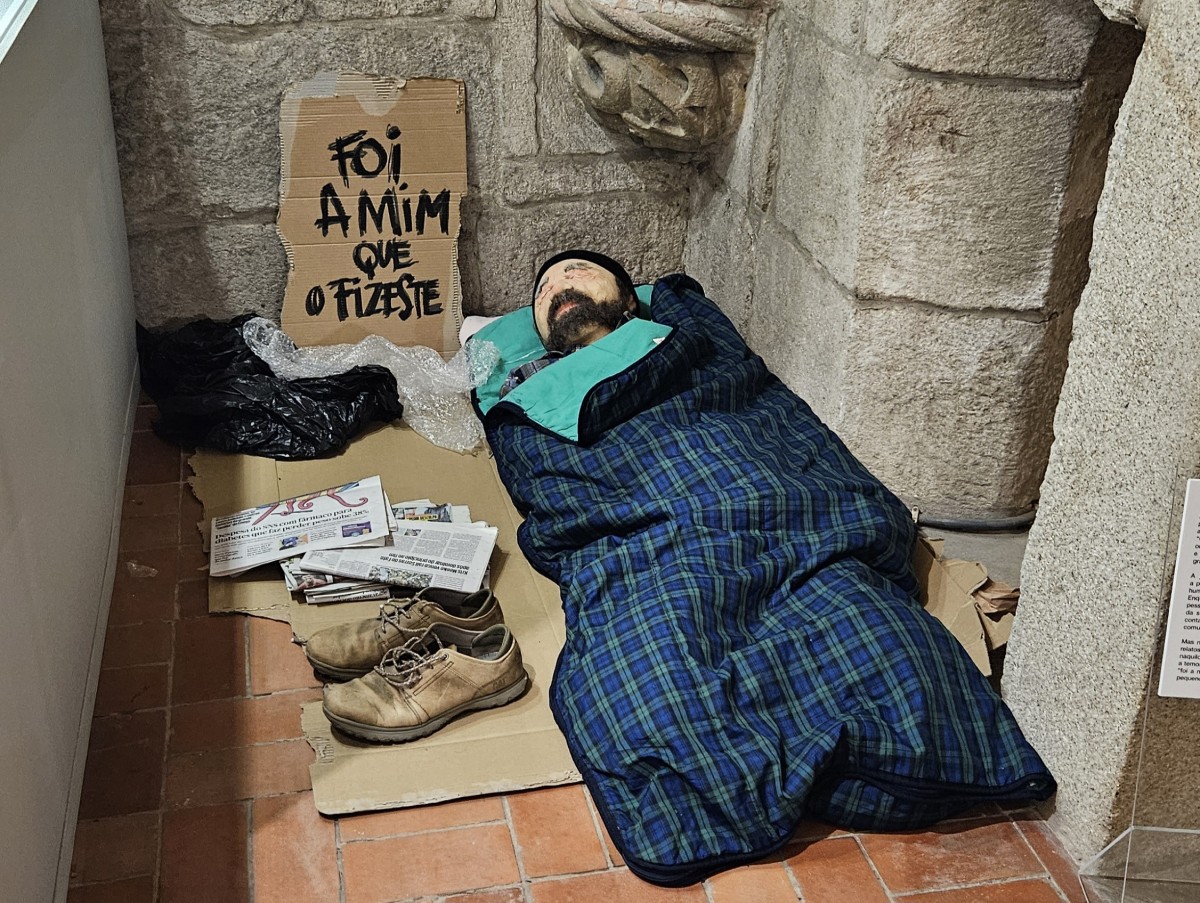
And with that, I’ll say goodbye — until the next adventure.


![[object Object]](/api/image/-OVI1BSHXs_r6vfYsHwa/viseu-main.jpg)